- Skip to main content
- Skip to primary sidebar


Destinations
- Plan Your Trip
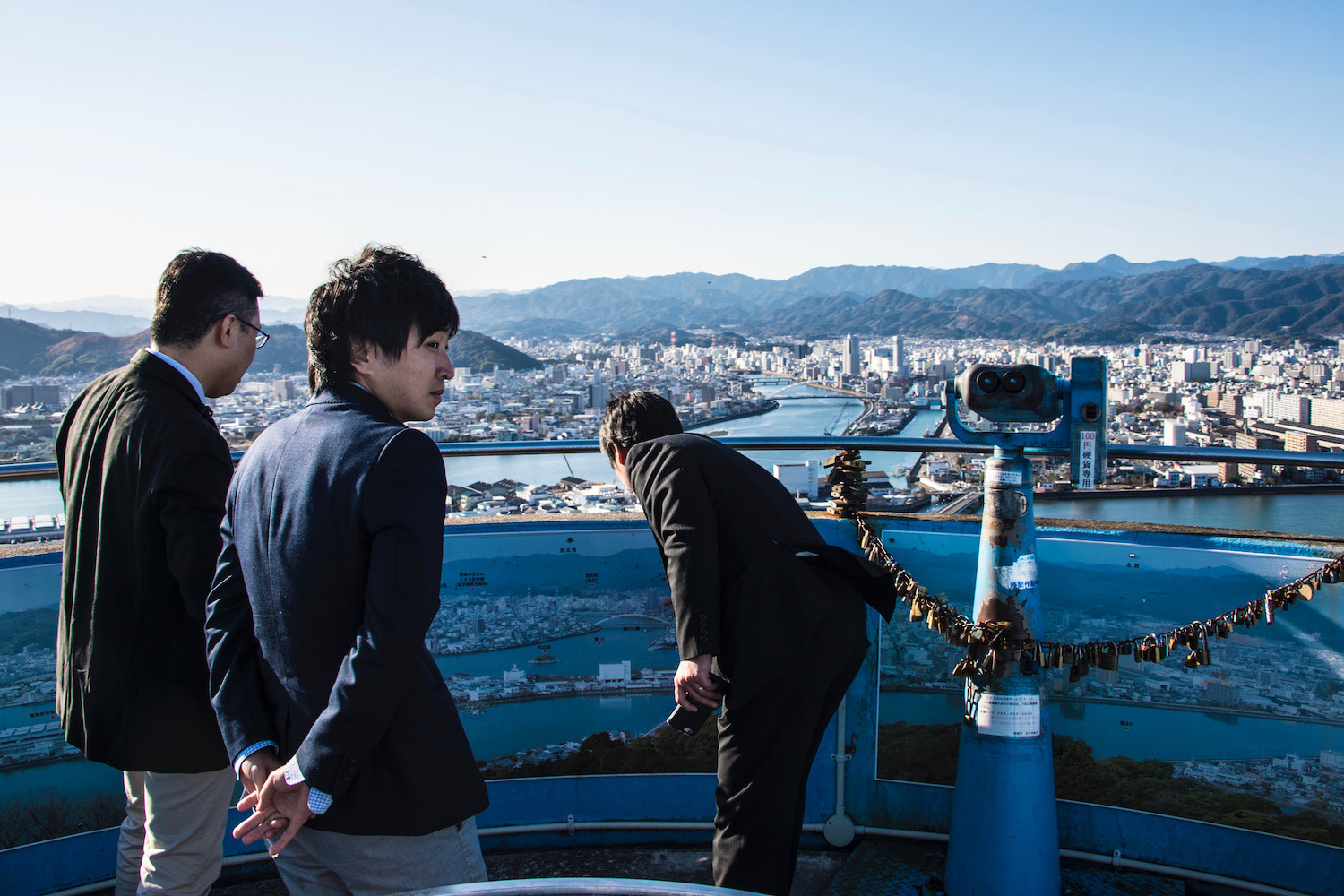
The Truth About Doing Business in Japan
Japanese business culture can be confounding, even if business travel to Japan isn’t a new thing for you. From overarching concepts like being on time every time (literally every time), to seemingly small details like the way you hand a business card to someone, doing business in Japan can be stressful before you even enter the boardroom.
Whether this is your first Japan business trip and you’re seeking etiquette tips, or you simply want to know where to go on side excursions before or after important business events, you’re in the right place. Business travel to Japan starts here.
Japanese Business Etiquette
How to travel to Japan for business? Conducting business in Japan can be lucrative, but it can also be nerve wracking. While Japanese business people are obviously less forgiving of each others’ transgressions than they are with those of foreign visitors, you can expect the way you behave doing business in Japan to be scrutinized more than just about anywhere else in the world.
Some of the particulars of this are unsurprising, whether it’s the Japanese penchant for punctuality, or the automatic respect (and assumption of seniority) age grant someone. Others, such as several presented in this awesome article by American Express OPEN , are less obvious. Whatever you do, make sure to present your Japan business card with both hands!
Within this discussion, beyond the issue of business cards in Japan, there’s also the issue of language. Obviously, if you work for a Western company and are on a one-off business trip to Japan, it’s unlikely that you will learn Japanese at all, let alone business Japanese. However, if you make a habit of doing business in Japanese, you’ll probably want to invested in some Japanese courses, if only out of common courtesy.
Japan Business Visa
Another important thing to consider when heading to Japan for (most) commercial purposes is the business travel to Japan visa. The great news is that you don’t need anything more than an ordinary tourist visa (or visa exemption stamp, if you’re from the US or UK) if you simply plan to engage in basic “business” activities in Japan like checking email or even journalism for less than 90 days.
If you’re in doubt, of course, you can check the website of the Japanese Embassy , where you can also verify Japan business visa requirements, upon fulfilling which you will get a Japanese business visa, but not a work visa. In other words, a Japanese business visa allows you to do business activities in Japan (including starting a business) but does not entitle you to become employed by a Japanese company—this requires a separate business travel to Japan visa.
Flying Business Class to Japan
If you anticipate that your business activities in Japan will bring lucrative rewards, flying business class to Japan might be a fitting investment. Obviously, as you can see when you read my comparison of ANA vs JAL business class , the best way to experience this is choosing a Japanese airline, but certain other airlines (mostly Asian ones) provide a comfortable and luxurious way to Japan as well.
I personally find JAL business class a bit more to my liking than the one offered by ANA, but both are exquisite. One of the best ways to choose, if you’re on the fence, is based on airline alliance (JAL is a member of oneworld, while ANA is a Star Alliance carrier) or, absent that, simply choosing the best priced flight to Japan.
Easy Side Trips for Japan Business Travelers
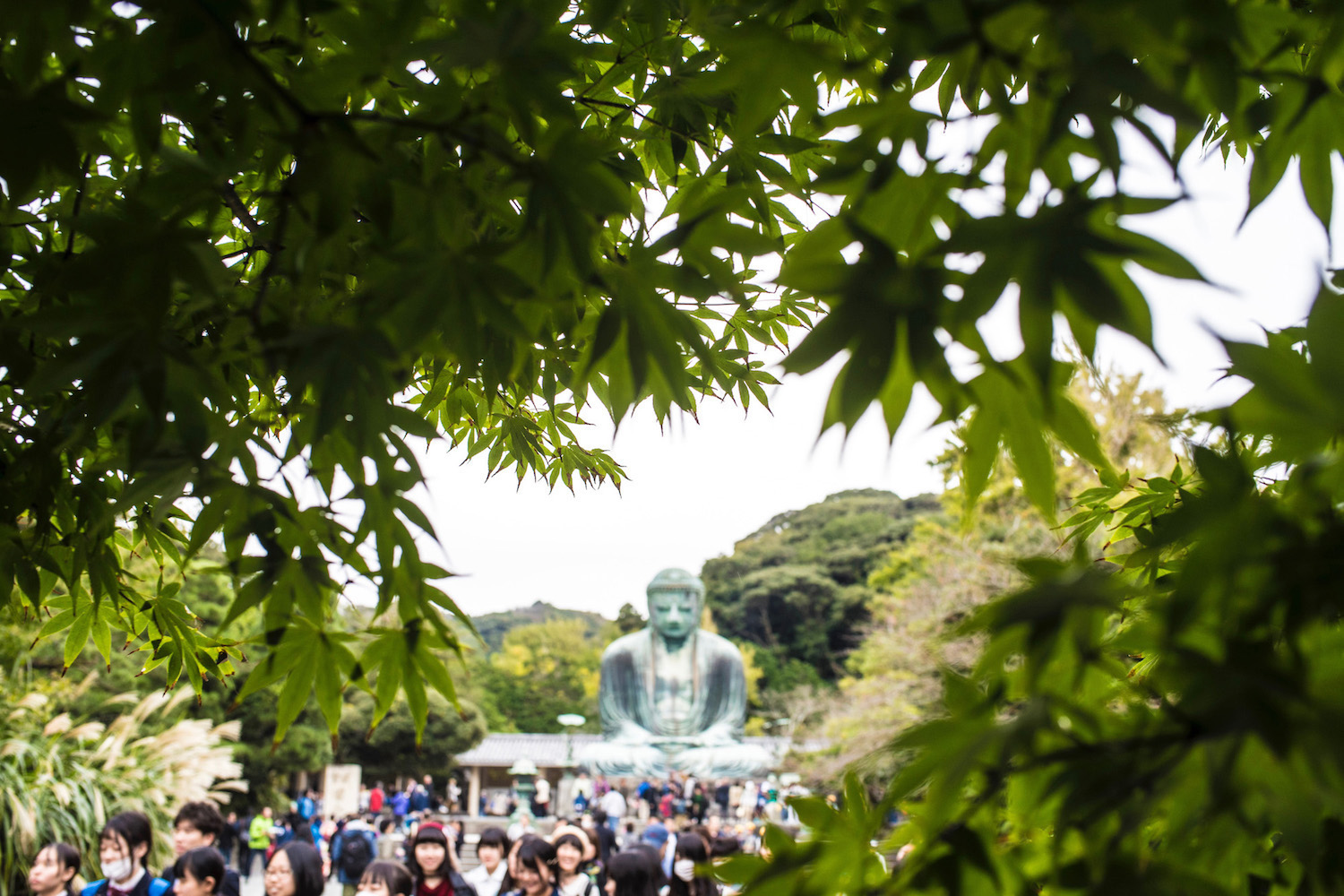
If you’re traveling to Tokyo for business, you could easily spend your free time exploring different parts of the city, from ancient Asakusa , to speed-of-light Shinjuku , to ritzy, glitzy Ginza . Another option would be to take a day trip, be it to historical Nikko or vibrant Yokohama , both of which make welcome distractions on a business trip to Japan.

Over in Osaka , meanwhile, you have a similar spread of options. However, while Osaka attractions like Osaka Castle and Dotonbori pedestrian street are alluring, it’s difficult to resist the appeal of an excursion to deer-filled Nara or to Kyoto , which might be the most beautiful city in the world.
From Nagoya
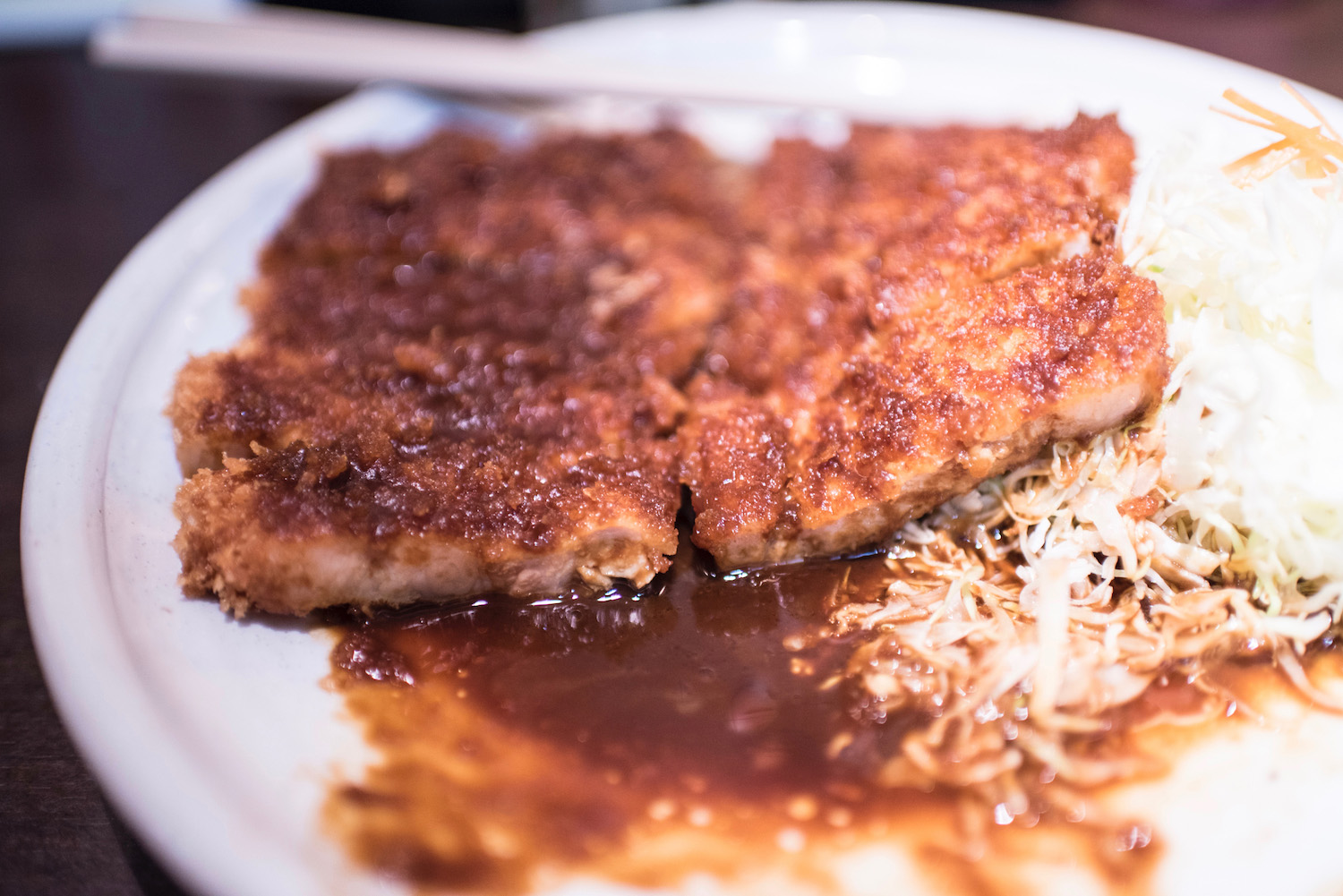
You’ll probably throw Japanese business dinner etiquette out the window if your meal with clients includes sumptuous misokatsu , a sinful spread of fried pork that’s my favorite thing about traveling to Nagoya . Day trip options are less numerous here, though you could theoretically ride a Shinano Limited Express train through the Japanese Alps to Nagano , or to the Nakasendo for a day hike .
From Hiroshima
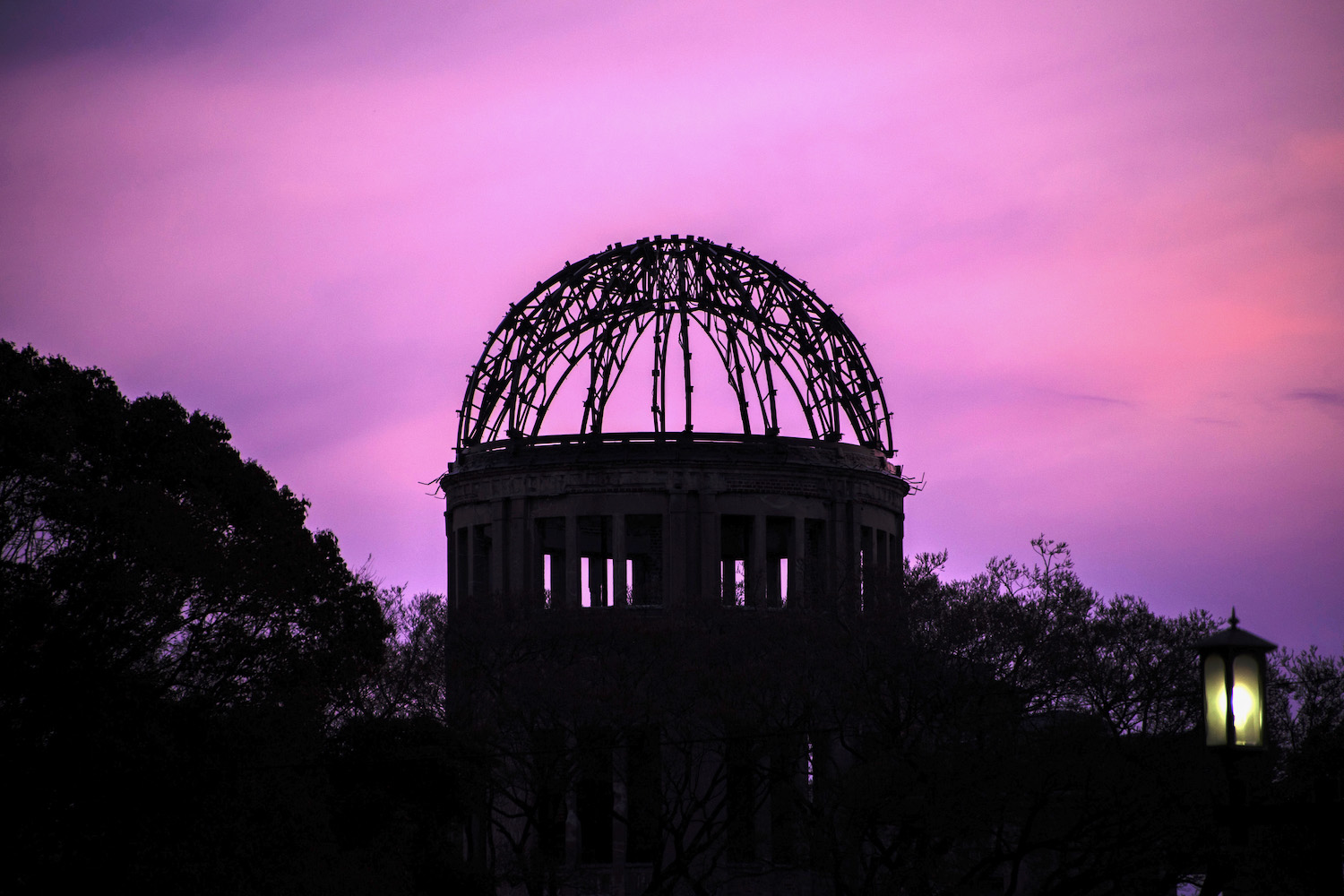
It goes without saying that any trip to Hiroshima should take you to Hiroshima Peace Park , whether you’re in the city for business or not. Apart from this, a trip across the water to Miyajima island (with its floating torii shrine), along the Shinkansen line to Kintai Bridge in Shin-Iwakuni or down the coast to Onomichi is very worth the effort.
From Fukuoka
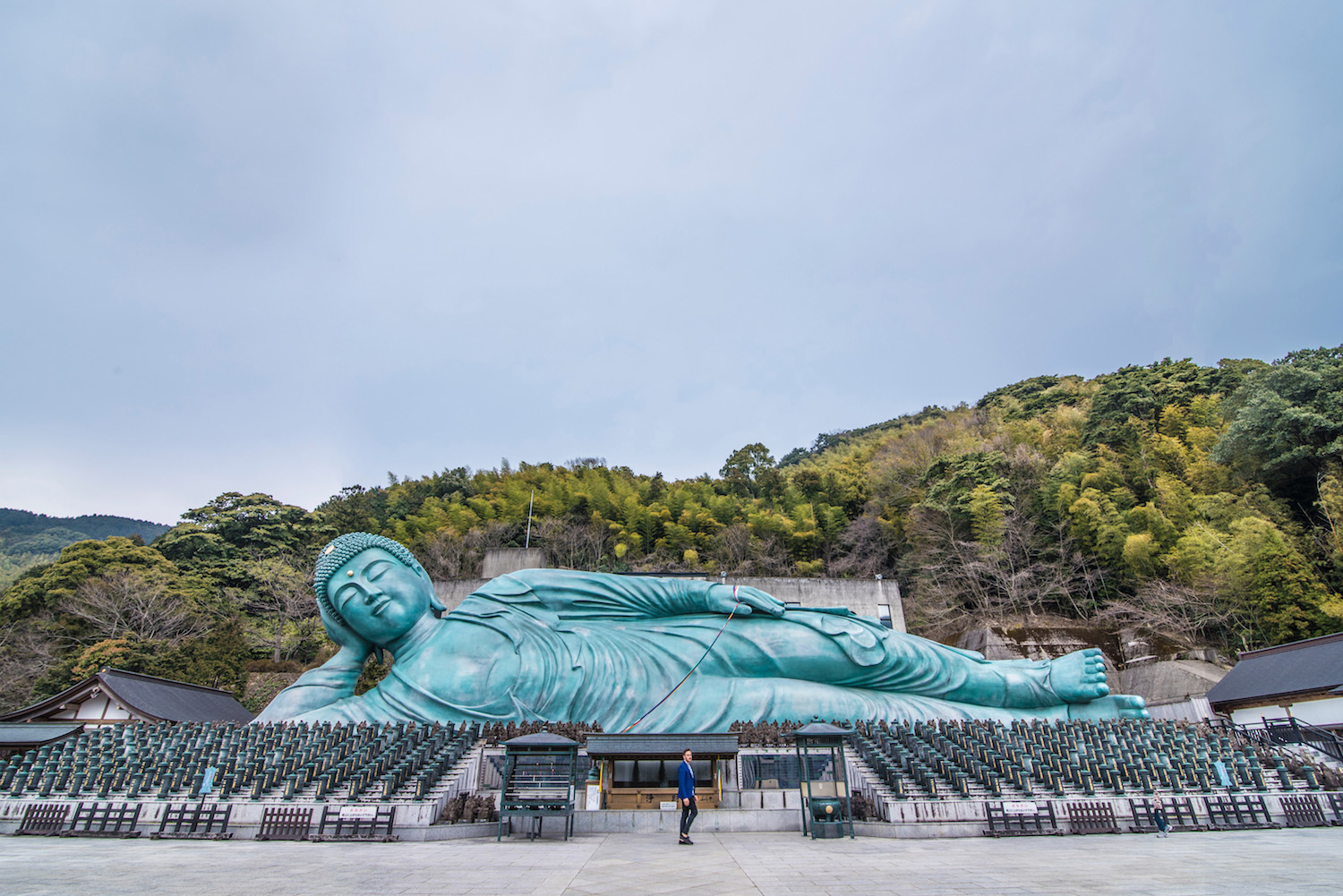
Fukuoka is by the far the largest city in Kyushu , so if you’re doing business with Japanese companies on the country’s southernmost island, chances are it will take you here. Make sure to visit the reclining Buddha at Nanzo-in , eat a meal at the yatai food stalls along the Naka River and enjoy a stroll through the ancient temples of Fukuoka Gion .
From Sapporo

Sapporo is to Hokkaido what Fukuoka is to Kyushu, which is to say it perfectly positions you both for business and travel in Japan’s great, white north. While Sapporo’s city center is somewhat lackluster outside of the annual snow festival, a day trip to Otaru (during winter in Japan ) or lavender-filled Furano (in summer) can liven things up compared to the ho-hum of business in Japan.
Business Hotels in Japan
One thing I’ve always found really interesting about Japan is how affordable accommodation for business travelers tends to be—and I’m not talking about capsule hotels, which these days are mostly used by backpackers anyway. Moreover, Japan business hotels are not only affordable, but often have incredible locations.
This is certainly the case with Tokyo’s APA Hotel Sugamo Ekimae , Osaka’s Hotel WBF Kitahama and UNIZO Inn Sapporo .
Other popular business hotel brands in Japan include Tokyu Stay, Route Inn and Daiwa Roynet. No matter which business hotel you choose in Japan, a word to the wise: If you don’t like to smoke, make sure and book a non-smoking room; many business travelers to Japan like to light up, seemingly in their beds.
Other FAQ About Japan Business Travel
Do you need a visa to do business in japan.
The good news? If you country is eligible for visa exemption on arrival, you can enter Japan to do business (but not to seek employment from a Japanese business) without needing to apply for a special visa, so long as you don’t need to stay longer than your visa allows. The bad news? If you want to seek employment, or if you typically require a visa to visit Japan, you’ll have to contact your nearest Japanese embassy or consulate.
Can I enter Japan for business?
As of mid-October 2022, Japanese business visa procedures (and business visa exemption procedures) have been normalized to their pre-pandemic state. Visit the Ministry of Foreign Affairs’ website for the latest policy updates, and contact your nearest Japanese embassy or consulate to ask questions specific to your situation.
How much is a Japan business visa?
The cost of a Japan business visa is determined by the country of your nationality, as well as the deal your country has struck with the government of Japan. Some countries can get visas free of charge, if you can believe it! Contact your local Japanese embassy or consulate for up-to-date pricing that’s relevant to you.
The Bottom Line
My tips for business travelers to Japan are sure to help people visiting Japan on business for the first time, but will have some value for even seasoned veterans to doing business in Japan. This is especially the case when it comes to side trips to take from popular Japan business traveler destinations, from Tokyo to Fukuoka to Sapporo, and everywhere in-between. I wish you good luck on your business trip Japan—and that you also prepare well, since luck will only get you so far! Otherwise, you might want to hire me to plan it.
Plan Your Japan Trip

Subscribe to email updates!
Words, images and design ©2018-2024 Robert Schrader, All rights reserved. Read Privacy Policy or view sitemap .
Official websites use .gov A .gov website belongs to an official government organization in the United States.
Secure .gov websites use HTTPS A lock ( A locked padlock ) or https:// means you’ve safely connected to the .gov website. Share sensitive information only on official, secure websites.
- Search ITA Search
- Market Overview
- Market Challenges
- Market Opportunities
- Market Entry Strategy
- Agricultural Sector
- Financial Technology
- Aircraft and Related Parts
- Cloud Computing
- Industrial Machine Tools
- Medical Devices
- Civil Nuclear Power
- Defense Procurement
- Semiconductors
- Pharmaceuticals
- Trade Barriers
- Import Tariffs
- Import Requirements and Documentation
- Labeling/Marking Requirements
- U.S. Export Controls
- Temporary Entry
- Prohibited & Restricted Imports
- Customs Regulations
- Trade Standards
- Trade Agreements
- Licensing Requirements for Professional Services
- Distribution & Sales Channels
- Selling Factors and Techniques
- Trade Financing
- Protecting Intellectual Property
- Selling to the Public Sector
- Business Travel
- Investment Climate Statement
Business Customs
An understanding of Japanese business and social practices goes a long way in establishing and maintaining successful business relationships in Japan. Perceived indifference to local business practices may be interpreted as a lack of commitment on the part of the exporter and may lead to misunderstandings and lost business opportunities. One should not assume that because meetings and correspondence are carried out in English that Western social and business norms apply.
Japanese society is complex, structured, hierarchical and group-oriented. It places strong emphasis on maintaining harmony and avoiding direct confrontation. Japanese social and cultural norms tend to be group-oriented rather than focused on the individual. In building relationships (which often precede a first-time sale or an agreement) one should emphasize trust, confidence, loyalty, and commitment for the long term.
Group decision-making is important in Japan and has been generally described as a “bottom-up” exercise rather than “top-down.” Family businesses founded since WWII and smaller second-tier firms are often exceptions to this rule. However, even in large family firms, where decisions are made at the top, company members have a sense of participation. This type of group decision-making requires time. Recognizing that it takes a longer time to cultivate business relationships in Japan than in the United States, U.S. business executives should not expect to close deals in just a few days. Consistent follow-up is vital. Likewise, U.S. businesspeople should recognize the importance of working with the staff level of their Japanese counterparts and not exclusively with the executive level.
Gift giving is expected on some business occasions in Japan. Regional U.S. gifts or company-logo gifts are appropriate. Quality is important, but the gift does not have to be expensive – it is the sentiment and relationship implied by the gift rather than its intrinsic value that is significant. Therefore, the packaging of the gift is as important as the gift itself and should be done professionally. In Japan, sets of four are considered unlucky (the number four is pronounced the same as the word for death). Gifts that can be shared among a group are appropriate.
Business travelers to Japan should make sure to bring a large supply of business cards (with their title) when they come to Japan; printing bilingual cards is a nice touch. Business cards, still in wide use despite rapid digitalization, are exchanged to formalize the introduction process and establish the status of the parties relative to each other. Japanese bow when greeting each other but will expect to shake hands with foreign executives. A slight bow in acknowledgment of a Japanese bow is appreciated. Japanese executives deal on a last (family) name basis in business relationships, and initial business and social contacts are characterized by politeness and formality.
Business travelers visiting a Japanese firm for the first time should be accompanied by an interpreter or bilingual assistant. Many Japanese executives and decision-makers do not speak English, although they may be able to greet visitors in English and read English product literature relevant to their business or industry expertise. Although English is a required subject in Japan’s secondary school curriculum, generally, English listening and speaking skills tend to be weaker than reading and writing skills for Japanese. Thus, the Japanese side in a business meeting generally expects visitors to bring an interpreter if they are serious about doing business. Although the cost of hiring an interpreter can be high, bringing an interpreter shows that a visiting firm is serious in its commitment to the Japanese market.
The first visit to a Japanese firm generally serves as a courtesy call to introduce U.S. executives and their company and allows the U.S. side to begin to evaluate a target company and its executives as potential business partners. A request to meet only with English-speaking staff can mean missing the opportunity to become acquainted with higher-ranking executives.
Written contract, even if less detailed than a contract between two U.S. companies, is essential to meet legal, tax, customs, and accounting requirements in Japan. Contractual commitments are perceived as representing long-term relationships so the terms and conditions, for example, whether to grant exclusive rights, should be considered carefully.
Japan’s travel infrastructure is on a par with that of the United States. A wide range of business travel and tourist services are available. For additional information on traveling to Japan, contact the Japan National Tourist Organization (JNTO) in New York at tel: (212) 757-5640; fax: (212) 307-6754, or visit JNTO’s website .
U.S. business travelers to Japan seeking appointments with U.S. Embassy Tokyo officials should contact the Commercial Section in advance. The Commercial Section can be reached by e-mail at: [email protected].
Travel Advisory
To access the most up-to-date travel and safety information, including regarding Covid-19, please refer to the State Department‘s Country-Specific Information for Japan . U.S. citizens can also obtain up-to-date safety and security information by calling 1-888-407-4747 toll-free within the U.S. and Canada, or by calling a regular toll line, 1-202-501-4444, from other countries.
Japan has long been noted for its low crime and safe streets. Crimes against U.S. citizens in Japan are rare. Crime is at levels well below the U.S. national average. Violent crime is extremely rare but does exist. Incidents of pickpocketing of foreigners in crowded shopping areas, on trains and at airports have been a sporadic concern. Complaints of robberies committed after a victim has been drugged from a spiked drink are increasing. Some of Tokyo’s entertainment and nightlife districts - in particular, the Roppongi and Kabuki-cho areas - are considered high-risk areas for crime, and the Embassy receives reports of drink spiking, credit card fraud, extortion, and even assault in these districts.
Some U.S. citizens believe that Japanese police procedures appear to be less sensitive and responsive to a victim’s concerns than would be the case in the United States, particularly in cases involving domestic violence and sexual assault. Few victims’ assistance resources, or battered person’s shelters exist, even in major urban areas, and facilities are generally unavailable in rural areas. See also information on staying safe in Japan from JNTO .
Visa requirements
A U.S. passport, valid for the duration of stay, is necessary to enter and travel in Japan. By Japanese law, non-residents are required to carry their passports (or their Resident Card if staying longer than 90 days) at all times.
A visa is not required for short-term business visits (up to 90 days). However, please note that Japan requires an onward/return ticket for “visa free” stays of up to 90 days. A work or investor visa may take up to two months to obtain. Immunization and health certificates are not required. Foreigners who will be mid to long-term residents must arrive in Japan with an appropriate visa, and upon arrival at the major airports in Japan, immigration authorities will issue a Resident Card. Residents are required to register their address at the nearest municipal office.
Upon arrival, going through both immigration and customs checks are essentially a formality for U.S. business travelers as long as passport and air tickets are in order. All foreign nationals entering Japan, with the exemption of certain categories listed below, are required to provide fingerprint scans and be photographed at the port of entry. This requirement does not replace any existing visa or passport requirements. Foreign nationals exempt from this new requirement include special permanent residents, persons under 16 years of age, holders of diplomatic or official visas, and persons invited by the head of a national administrative organization.
Passengers are advised to exchange some U.S. dollars for yen before leaving the airport.
U.S. companies that require travel of foreign businesspersons to the United States should be advised that security evaluations are handled via an interagency process. Visa applicants should go to the following links:
State Department Visa Website
Consular Section of the U.S. Embassy Tokyo
The currency in Japan is the Japanese Yen.
Telecommunications/Electronics
Japan’s telecommunications system, one of the most developed in the world, is both efficient and convenient. International calls can be made from private cell phones, public International Direct Dialing (IDD) phones, or hotel IDD phones. The main mobile carriers in Japan are NTT DoCoMo, KDDI, and Softbank; e-commerce giant Rakuten is building out a fully virtualized mobile network. All currently offer, and are expanding, 5G services. Many U.S. carriers offer plans. Broadband and WiFi services are easy to procure, and free public WiFi is widely available in major cities. Nearly all hotels provide free WiFi services. Many restaurants and cafés also provide free WiFi for customers. More telecommunications information can be found on the JNTO website, with insights on telephone use and WiFi.
Japan uses an electric current of 100 volts, and a frequency of 50 Hertz in eastern Japan, or 60 Hertz in Western Japan (including Nagoya, Kyoto, and Osaka). Appliances from Europe, Australia, or Southeast Asia will require an adaptor and may require a transformer depending on the electric device; most U.S. appliances do not require an adaptor. More information on plugs and electricity can be found on the JNTO website .
Transportation
Japan has a system of modern highways and roads linking all parts of country. However, traffic conditions on expressways and in cities are often very congested. Most major intercity highways operate on a toll basis, and tolls can be extremely expensive, making passenger train travel very competitive, especially for international visitors. Japan boasts the world’s densest and most modern passenger railroad system, with fast, frequent services to all parts of the country. Japan’s famous Shinkansen high-speed rail links Tokyo with Japan’s major business centers and beyond. All of Japan’s large cities have highly developed subway and commuter train service. Taxi service is widely available.
The national language of Japan is Japanese (Nihongo) and is spoken and understood all over the country. English is a required subject in Japanese high schools, and it is by far the most widely known foreign language in Japan. International business correspondence and negotiations in Japan are almost always conducted in English. Most Japanese, including business executives, have a limited understanding and command of spoken English, although there are of course exceptions. Japanese business executives often read English much better than they can speak it or understand it when spoken. It is advisable, therefore, to be accompanied by a competent professional interpreter to all business meetings, especially an initial contact where you might be unsure of your counterpart’s mastery of English.
Aside from the area in the immediate vicinity of the Fukushima Daiichi Nuclear Power plant, crippled by the disaster in 2011, Japan poses no medical health risks to business travelers. While medical care in Japan is good, English-speaking physicians and medical facilities that cater to
U.S. citizens’ expectations are expensive and not very widespread. Japan has a national health insurance system, which is only available to non-citizens with long-term visas for Japan. National health insurance does not pay for medical evacuation or medical care outside of Japan. Medical caregivers in Japan require payment in full at the time of treatment or concrete proof of ability to pay before treating those who are not covered by the national health insurance plan. Most major credit cards are accepted.
State Department‘s Country Health Information – Japan
Visitors to Japan should carry their prescription or non-prescription medication in their original containers along with a copy of their prescription. Some medications that are commonly used in the United States are illegal in Japan. Adderall, for example, is strictly prohibited because it contains amphetamines, and its possession or importation is a crime. Another example of an amphetamine drug that is illegal in Japan is Vyvance, commonly prescribed for attention deficit disorder by U.S. physicians. It is also illegal to bring into Japan some over-the-counter medicines commonly used in the United States, including inhalers and some allergy and sinus medications. Specifically, products that contain stimulants (medicines that contain pseudoephedrine, such as Actifed, Sudafed, and Vicks inhalers) or codeine are prohibited. Also, shipping narcotic analgesic medications into Japan is limited to institutions designated by the Japanese government. Individuals cannot legally have narcotics mailed or shipped into Japan. Medical marijuana, even with a U.S. prescription, is strictly forbidden and those attempting to bring it into Japan will be arrested and prosecuted.
For more information on bringing medication (prescription or over-the-counter) into Japan, please refer to US Embassy & Consulates in Japan .
Local time, business hours, and holidays
Local Time: Japan is 14 hours ahead of U.S. Eastern Standard Time (EST) and 13 hours ahead of Eastern Daylight Time (EDT) from April to October. Consequently, 8:00 a.m. EST in New York City corresponds to 10:00 p.m. the same day in Tokyo. 8:00 p.m. EST in New York City corresponds to 10:00 a.m. the next day in Tokyo. Japan is one of the few major industrialized countries that does not observe some form of daylight-saving time.
Business Hours: The typical Japanese workweek is Monday through Friday, 9:00 a.m. to 5:30 p.m., although many Japanese office workers put in long hours of overtime. Flex work hours have become popular at some large companies. The overwhelming majority of Japanese take their lunch break promptly at 12:00 noon and return to the office at 1:00 p.m. sharp.
Holidays: When a national holiday falls on a Sunday, the following Monday is observed. In addition, many Japanese companies and government offices traditionally close during the New Year’s holiday season (typically last days of December through first week in January), “Golden Week” (typically late April through early May) and the traditional “O-Bon” Festival (mid- August).
See a list of Japan’s holidays .
Temporary Entry of Materials and Personal Belongings
No restriction exists for temporary entry of laptop computers and software for personal use. Some pharmaceutical items, including medications widely available in the U.S., are illegal in Japan, and U.S. citizens have been detained for importing them. Information on importing such items is available on the American Citizen Services website .
Regarding materials for exhibits, Japan is a member of the International Convention to Facilitate the Importation of Commercial Samples and Advertising Materials under the ATA carnet system. The use of a carnet allows goods such as commercial and exhibition samples, professional equipment, musical instruments and television cameras to be carried or sent temporarily into a foreign country without paying duties or posting bonds. These goods cannot be sold. A carnet should be arranged for in advance by contacting a local office of the United States Council for International Business or its helpline at (800) ATA-2900.
Travel Related Resources
U.S. Commercial Service Japan
Consular information & official travel advisories for Japan
Passports - U.S. Department of State
Visas - U.S. Department of State
U.S. Embassy Tokyo Visa
U.S. Embassy Tokyo American Citizen Services
Japan National Tourist Organization (JNTO)
U.S. Department of State; Japan – Country Information Temporary entry of materials under the carnet system
We’re sorry, this site is currently experiencing technical difficulties. Please try again in a few moments. Exception: request blocked

Japan: Reopening for Business Travelers and Entrance Requirements
This article was published on February 28, 2022, and updated on March 8, 2022, to reflect new information.
March 8, 2022 Update: The government of Japan updated its requirements for approved COVID-19 tests to enter the country. The government will only allow travelers to enter the country if they have received a negative PCR or NAAT (Nucleic Acid Amplification Test) test result.
Original Post From February 28, 2021:
- Japan will reopen for business travelers with up-to-date visas
- Travelers entering Japan will be subject to entrance testing measures and quarantine requirements
Beginning March 1, 2022, the government of Japan announced that business travelers would be permitted to enter the country so long as they meet specific entrance requirements. These requirements include providing proof of:
- A negative COVID-19 test was taken within 72 hours of departure
- A signed copy of the Written Pledge of entrance
- A complete COVID-19 questionnaire that the Ministry of Health has digitally administered, Labor and Welfare
- Proof of having downloaded the health monitoring app
For additional information concerning entrance requirements, click here . Travelers will still be required to quarantine upon entrance. The timeframe of quarantine will vary depending on the country or region of departure .
What are the Changes?
The government of Japan will allow business travelers to enter the country beginning March 1, 2022. These travelers will be subject to entrance requirements and must undergo quarantine upon arrival.
Looking Ahead
Continue to check the government of Japan’s website for the latest updates and information.
Written by: Jessie Butchley, Global Immigration Writer, Envoy Global Source: Ministry of Health and Labor, Japan
Previous Post Guyana: COVID-19 Passenger Locator Form No Longer Required for Entry
Next post italy: updated entrance requirements for non-eu travelers, you may also like.

PRIMARY LINKS
Other links.
- Attorney Directory
- Privacy Policy
- Envoy Global
- Visa Bulletin
CONTACT INFO
Chicago Office 230 West Monroe Street, Suite 2800 Chicago, Illinois 60606-4969 +1 312-722-6300
Cincinnati Office 600 Vine Street, Suite 1800 Cincinnati, Ohio 45202-2429 +1 513-381-2011
San Francisco Office 465 California Street, Suite 700 San Francisco, California 94104-1818 +1 415-771-7500
© 2024 Corporate Immigration Partners, PC. All Rights Reserved.
- google-plus
Corporate Immigration Partners [email protected] Chicago Office +1 312-722-6300 Cincinnati Office +1 513-381-2011 San Francisco Office +1 415-771-7500 Europe, Middle East, and Africa +44 20 34326564 Asia-Pacific +86 10 84053554

Business Etiquette in Japan: 17 Definitive Tips to Do Business With the Japanese
Japan is becoming a more sought after location for new businesses (foreign and domestic). It is a destination for business travelers as well as to create partnerships among established companies, and forge relationships with companies in Japan's bustling startup scene. Japan as a whole, and the companies that populate the country, though, have a very specific way of handling social interactions and businesses. This different approach can often be surprising and confusing for those who are not prepared to the standards of the country. For this reason, regardless of one’s experience in a certain field, or in business deals, it pays off to dive into the details, similarities, and differences between business meetings in Japan and those in other countries (even among very similar fields). We sat down with an American who's been doing business in Japan for over 16 years. Here are seventeen of the inside secrets he shared!
1. Prepare business cards in advance
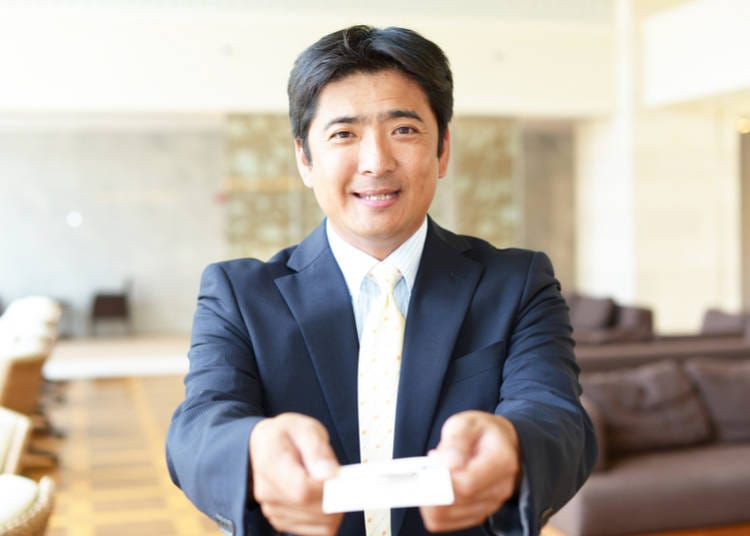
The way you present and introduce yourself to Japanese potential business associates plays an immensely important role for the outcome of any future potential relation. While it’s generally understood in Japan that people from other countries might be used to different standards, it always benefits to send a clear message from the get go. The message essentially is “Not only am I interested in a mutually beneficial deal, but I’m also not assuming that my way is THE way”. Potential Japanese business partners will always take notice of a non-Japanese who has more experience with the country, culture, and mannerism than others. Before you leave for Japan prepare business cards specifically for your trip. Meishi (or name cards) are widely used in Japan and they are exchanged at every meeting, with many people. Even for a 3-day business trip, you will probably want several dozen cards with you – and will likely want several hundred if you will be attending a trade show or other event. The design, and the information on the card provide the very first look into your attention to detail and care for your business. When you order your cards, don’t assume that all the people you’ll meet can read or speak English fluently. Make sure that the card is both in English and Japanese (using the card’s two faces for this purpose is the most common method) and if possible, have someone with a professional understanding of the language proofread your card before sending to print. Always keep your cards in perfectly mint condition without folds, scratches, dog ears and the likes. Do not keep your cards in your pants pocket (especially your back pocket). It does not look professional, in Japan, to hand someone something you fished from a pocket too close to certain areas of your body. The standard size of a Japanese business card is usually 55mm x 91mm (sizes may change, but this is the most commonly used) – which is different than cards typically found in the West. When in Japan it will be very easy to find cases designed specifically for the safe and easy storage of your cards. You will be able to find many different kinds of cases at the airport , or in stores such as Loft and Tokyu Hands, and even in many convenience stores in a pinch.
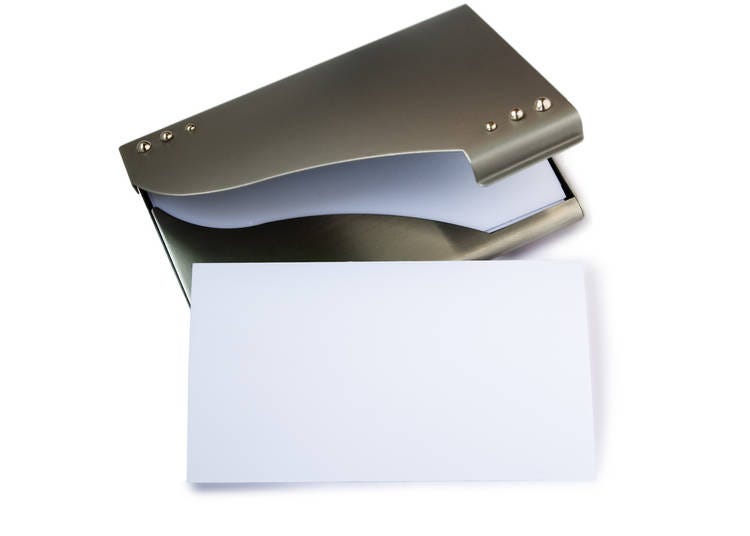
How to exchange business cards in Japan In addition to the looks of the card, also how to hand them plays a role. You should present them holding them with both hands, with your information facing the person you’re giving the card to so it’s easily readable. Pinch the corners of your card between your thumbs and your index. Absolutely avoid handing cards with one hand, or holding it between your index and middle finger.
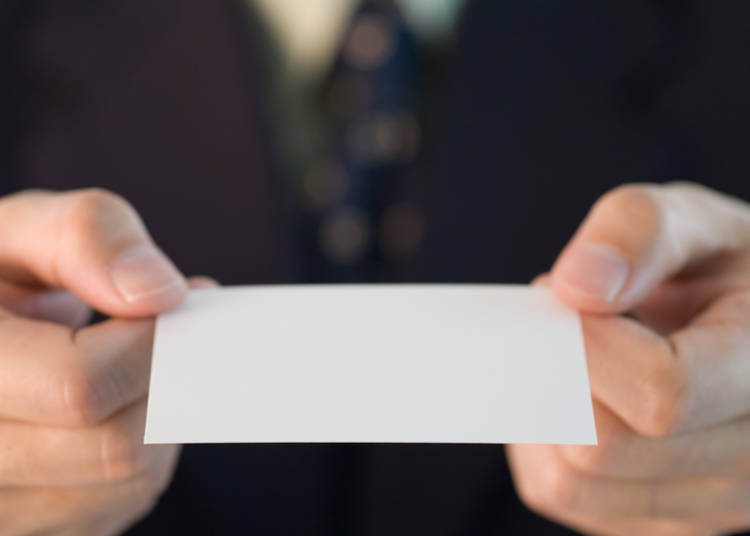
As you pass your card, chances are that the other person will do the same. Here a little game starts. Both parties will lower their card trying to place it underneath their counterpart’s. This action shows that you’re humbling yourself and you consider the other person being more important than you are. Eventually, of course, you will exchange cards. Hold yours with your left hand as you take the other card with your right hand, always pinching it between thumb and index finger.
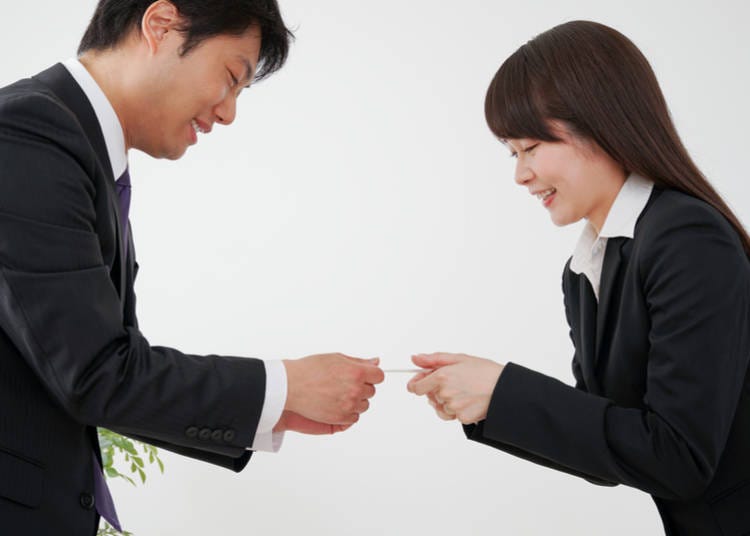
It’s polite to read the card once you collect it and to store it in a case or something similar. Avoid putting it in your wallet or in any place that might damage it, or that might give the idea that you don’t care about it. This is only one of the several ritualistic behaviors that are very common when meeting a person for the first time for business.
2. Practice introducing yourself in Japanese
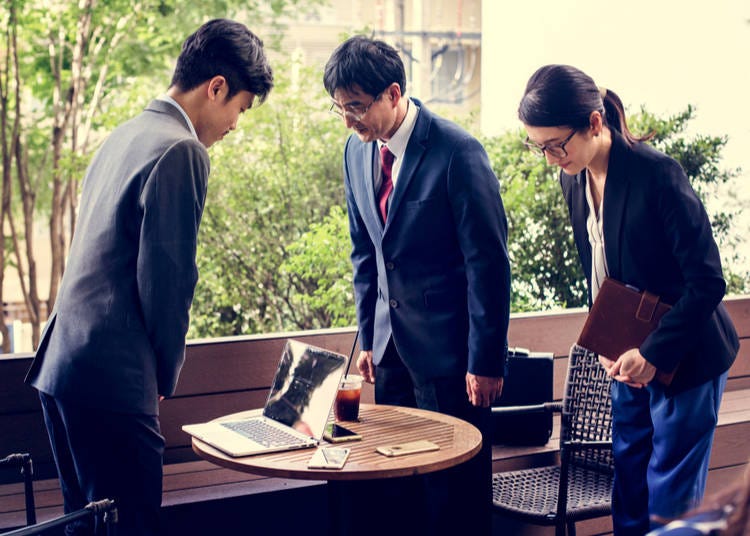
Before the cards exchange, you will introduce yourself. It’s ok to shake hands (avoid: a long shake; a shake with two hands, cupping the other person’s; squeezing too hard) – and this may be preferred by both sides. You can also bow. When you do so, you should bow at a 45 degrees angle, as you state your name and position in the company. The other person will likely do the same. You should also avoid looking up or at the other person as you bow. Men should bow while keeping their arms along the sides of their torso, while women should join their hands in front of their lower belly. Do not bow and shake hands at the same time. When meeting someone for the first time, try to introduce yourself in Japanese, even if you can’t speak the language fluently. The simplest phrase to remember when introducing yourself is: “Haji-me-ma-shi-te. XX desu.” ― I’m XX. Nice to meet you. Being able to use a few key phrases shows you’ve done your homework and already sets you apart from many of your competitors.
3. Pack Conservatively
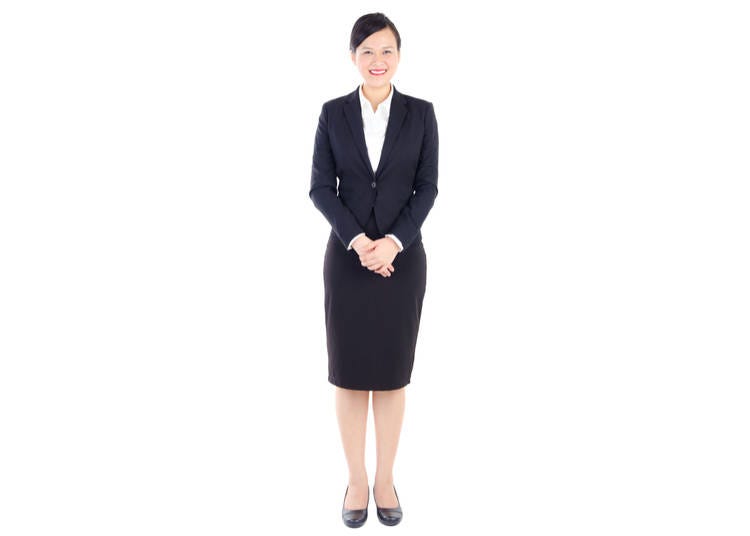
Regardless of your field, in Japan it’s always more appropriate to dress in some form of business attire. Even in cases such as gaming companies, or in the music industry, where proper business attire is not strictly enforced, people will usually choose to wear dress shirts and blazers, or smart suit-jackets, especially for first meets. Generally, though, men will wear a dark suit, plain white or blue shirt and necktie and polished black shoes. Women prefer wearing conservative dresses or suit-dressed, usually dark, knee-length skirt, dark shoes with short heels.
4. Bring Sharp Slip-On Shoes (And new socks!)
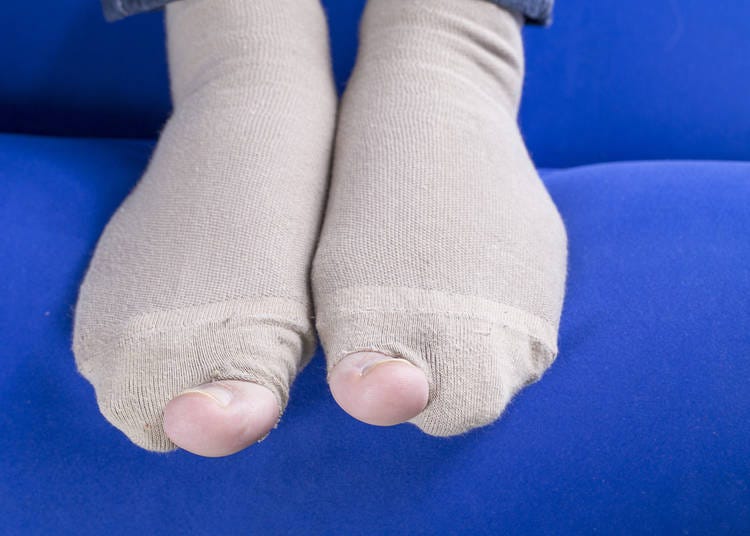
It’s important to remember that you may be invited to enter a room, or a locale in which shoes are not allowed – like a restaurant. Choose your footwear so that it’s elegant, but also easy to take off and put back on, should necessity arise. (Also make sure you have nice, new, sharp looking socks. You know those holes we hide within our shoes? Can’t really do that in Japan!)
5. Prep Your Collateral

Another important aspect of your presentation, is how you introduce your company itself. By and large, Japan is a paper-based culture. It’s always better to have hard copies of any document, presentation, or brochure you want to give to your potential business partners. It also helps to invest some time and funds in a translation into Japanese. Even if the people you’re meeting are fluent in English, such a presentation shows attention to detail and consideration for your peers. Regardless, it’s always easier to sell an idea in the native language of those you want to consider it. Keep in mind that Japanese companies love receiving what to you might seem as unimportant information. Make sure that your company brochure includes its foundation date, its capital and/or the number of employees (this speaks for the size, reach and potential of the company). Also make sure to include the names and contacts of the founder, partners (and their titles), as well as what products or services the company provides. Even the names of current clients are something that most Japanese companies would like to see, particularly if you are a startup. The people you’re meeting might already have all these information thanks to conversations you may have had prior to the first meeting, but having hard copies will still be beneficial. In your brochure, make sure that you describe, as clearly and directly as possible what you’re looking for (OEM, technology investment, strategic partnership, capital investment, or anything else that you think you should include). Finally ensure that your value position is highlighted, and clarify how your value prop fits your target and how they could benefit from a partnership.
6. On Time = 10 Minutes Early

In Japan, being on time equals being late. For this reason it’s important to always arrive a little early to any business meeting. Before leaving for your destination, make sure you know exactly where to go – especially if your meeting is in the morning, since you may have to confront rush hour packed trains. If you’re lucky enough to have a few extra hours, it wouldn’t be a bad idea to visit the meeting place the day before the actual appointment.
7. Prep for Taxi
Should you decide to take a taxi, make sure you have the address written in Japanese, as you might not be able to find an English-speaking driver.
8. Facebook is the new LinkedIn?
During your meeting, or right after it, people may ask you for a way to connect. LinkedIn is not very widely used in Japan, so people might ask you to connect via Facebook. Creating a custom Facebook list could help. Above all, be sure to change privacy settings on any personal content so as to avoid any potential embarrassment when you start receiving friend requests.
9. Who-San?
Most of us know that, when talking to each other, Japanese people use several kinds of suffixes. Which one(s) should you use? And should you call people by first name or last name? Generally you’ll want to refer to others by their last name followed by san (i.e. Kimura san). Alternatively you could also use the suffix sama (although this conveys a very high level of respect that might not be necessary depending on the situation). Should someone ask you to call them by their first name, it’s ok to do so, but it’s recommended to follow with san (i.e. Akira san), unless explicitly asked otherwise.
10. Plan Roles Ahead – And Stick to the Plan

If you are part of a team and you will all participate to the business meeting, make sure that you define all the roles beforehand. Try avoiding getting into conversations or answers that might denote even slight disagreements or diverging points of view. It is not a bad thing per se, but, when dealing with people who might not be as fluent as you are in English it could cause confusion and doubts. Each person the team designates as a speaker should be the only one approaching certain subjects and should be able to be very clear and precise about their role (the whole idea of jack of all trades doesn’t really fly in Japan). On that note, it’s very important to keep your language as professional, but also as clear and easy to understand as possible. Enunciation, lowered speed, and volume (but not too loud) are determining factors. Just as important though is your word choice. Certain expressions that are extremely common in English speaking countries are often unheard of elsewhere, so even a proficient English speaker, if they are not accustomed to a certain country, might not understand several slang words, or turns of phrases.
11. Timing your pitch is as important as the pitch itself

To make sure you don’t spend too much time trying to deliver your pitch, it could help to have a few words or concepts previously translated into Japanese. Also any kind of visual representation of your pitch will make a good impression, clarify things, and save precious minutes.
12. Got that timing? Now trim it down
Always account for the time that is needed for translations, interpretations, extra explanations, speaking more slowly than you’re accustomed to, and questions. If your meeting is supposed to last one hour, consider ahead how you can slim it down to half that in the event you find interpretation is taking it’s supposed to be half that. It’s always easier to add information to a planned pitch than it is to remove it from it.
13. Manage your expectations

What can you expect from your meetings in Japan? The short answer is “don’t expect too much”. In a general sense, Japanese companies look for long-term partners. In and on itself this kind of commitment requires some time to consider, regardless of the country. This is even more true in Japan. Decision-making in Japanese companies, usually, is a relatively long process that requires a certain proposal to go through a lot of loops, and pass by a lot of hands before it’s given the “go ahead”. It’s extremely unlikely you’ll receive a “yes” or “no” answer at your first meeting. More often than not, people will approach the meeting literally from a prepared script. Even if you feel as though the meeting went extremely well, don’t jump the shark by reporting success to people back home: wait until the follow-ups to know where things truly stand. This attitude should not be interpreted as a lack of willingness to accept a proposal, but simply as a stance that shows that you’ve been heard, and you will be considered in the appropriate setting. If you’re not fully satisfied with the answers (or lack thereof) you’re receiving, do not push for immediate clarification, but instead wait until your follow ups. And if you have a facilitator in between, after the meeting ask her or him for a read on the situation.
14. After the meeting – when business really begins
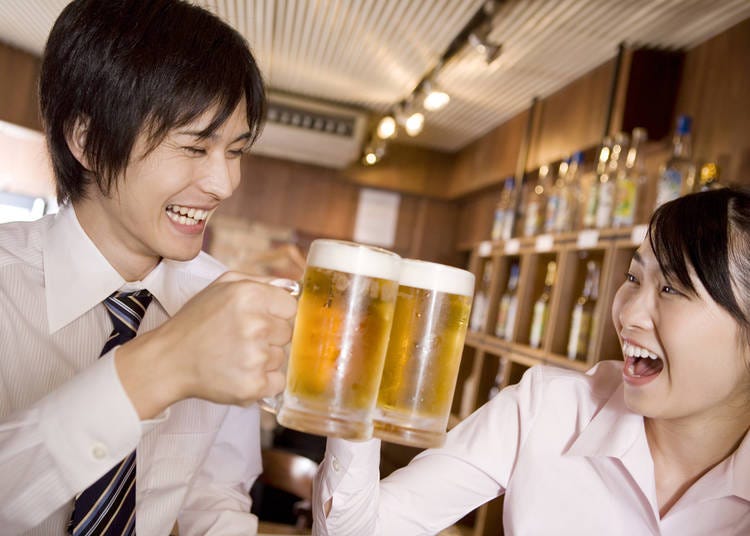
In Japan, when a meeting is over, the meeting continues. The vibe is completely different. Very often meetings move to restaurants or bars . Food and alcohol are used as a social lubricant in Japan. This is a way to connect to the person, as opposed to the business partner. You will not be judged much during these more goliardic components of the meetings, but it’s your chance to make yourself more likeable and it’s ok to get loose a little. You will very often be expected to drink (likely a lot). It’s perfectly ok not to. To avoid embarrassing moments (such as rejecting someone who wants to pour you a cup of sake), it’s best to be upfront. The same goes for dietary restrictions or allergies you may have.
15. Practice up on your karaoke
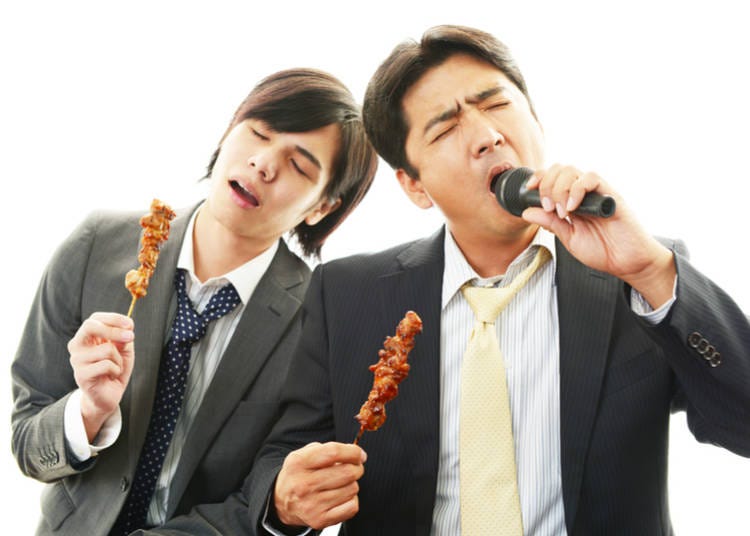
At this point it’s all about having fun, but, sometimes, calculated fun. You want to make sure that you connect with people, so it’s important to work towards not alienating them. After dinner and drinks, one of the favorite pastimes in Japan is Karaoke . You may be an awesome singer, or an awful one. No one will actually care or pay attention to it. It’s all about unwinding a little and bonding together. This does not prevent you from making some conscious choices that might make your party more comfortable. For example, many not-too-young Japanese people may not be all too familiar with the latest western hit songs, but they will most likely know (and get very excited to hear a native speaker sing) some oldies: Hey Jude, We will Rock You, Take me home, country road (they actually have a Japanese version of this song too), Happy, YMCA, and several others are almost sure successes. Going back to that Facebook group you may have created before your meeting, make sure that if you take pictures of the event you ask beforehand if you can post them. It’s unlikely someone will have a problem with that, since going a little crazy with coworkers and business partners in Japan is not considered embarrassing but bonding. Still it’s best to ask, to avoid any potential resentment.
16. Follow up
Usually a few hours after the meeting, or the following morning, it’s a good time to contact the people you’ve met with a follow up message. This message can be fairly professional, but it’s recommended to make the time spent together the focus. Thank them for their time, for the fun, and for the attention they gave to your project. Point out you had a great time in the country and with the people you’ve met. This is a very common custom in Japan and, let’s face it, it’s nice to receive this kind of message.
17. Take a little time for yourself
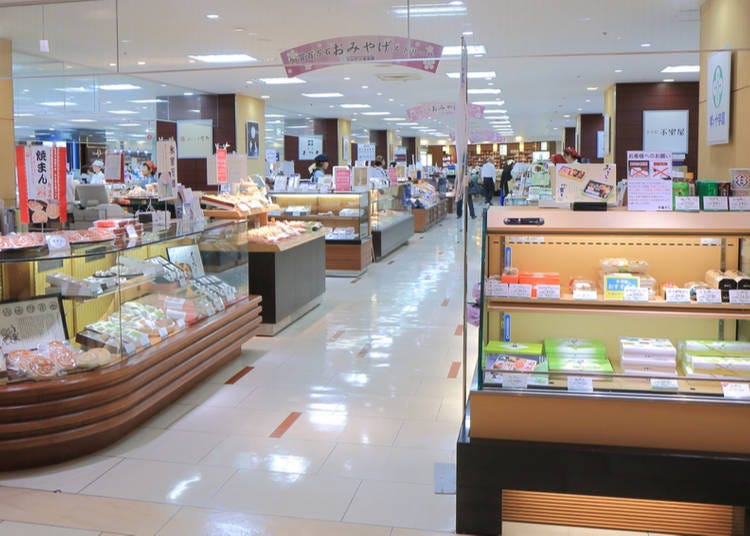
You’re all ready for your business trip and your business meetings, but don’t forget to make some time to relax and enjoy Japan. It will be well worth it. While you’re at it, especially if you’re the kind of person that can’t unplug, even when taking a break, use your time to visit department stores , music stores, and any place that could be related to your business (or not). You will be able to better soak in the level of passion, attention to detail, packaging and presentation that takes place in Japan. It will surely give you a better insight on the people, the country, and the business practices of the country.

Written by:

Lucio Maurizi
Lucio Maurizi is an automotive expert specializing in Japan's car scene and auto-tourism. With an MA in East Asian History from La Sapienza Università di Roma, he's a multi-talented contributor to travel platforms like LIVE JAPAN, Japan Travel, and GPlus Media. His Instagram account (50k+ followers) offers insider views on Japan's automotive culture. Lucio also actively collaborates with professional drivers and influencers and organizes can't-miss car events in Tokyo. Instagram: @italian_in_japan Other links: https://linktr.ee/italianinjapan
- Area Tokyo Station
- How To: Etiquette
Share this article.
Limited time offer: 10% discount coupons available now!
Recommended places for you.
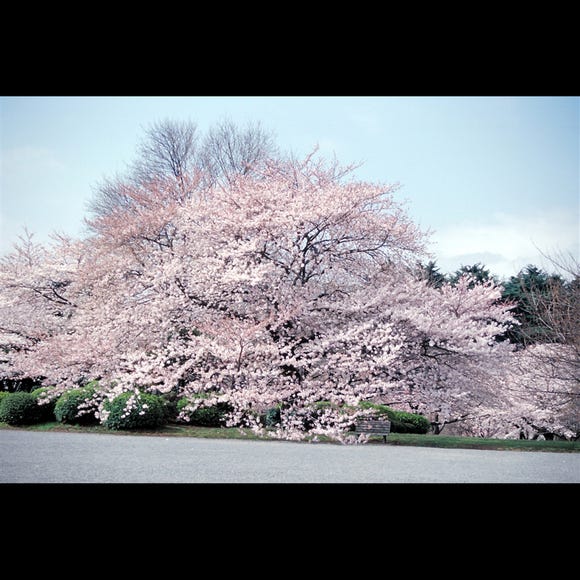
Shinjuku Gyoen National Garden

Tokyo Disney Sea®
Theme Parks
Chiba Suburbs
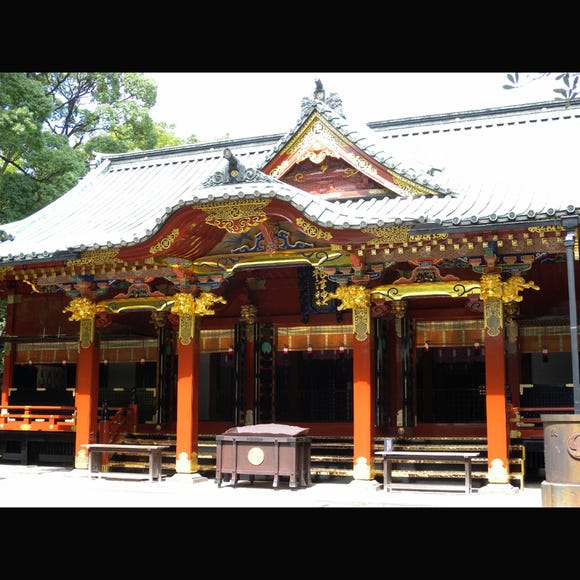
Nezu Shrine
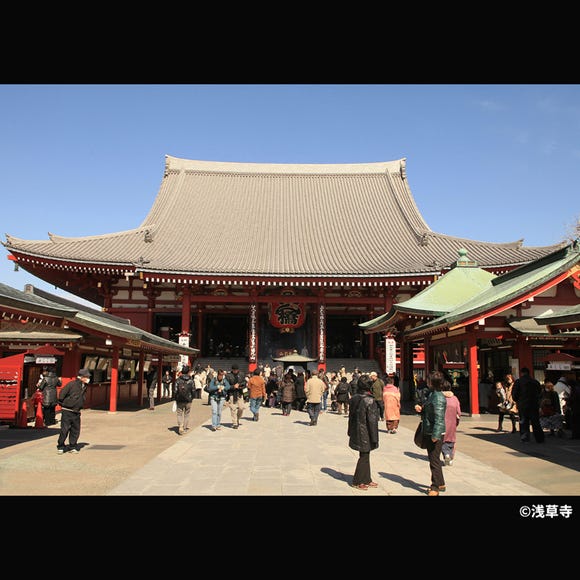
Senso-ji Temple
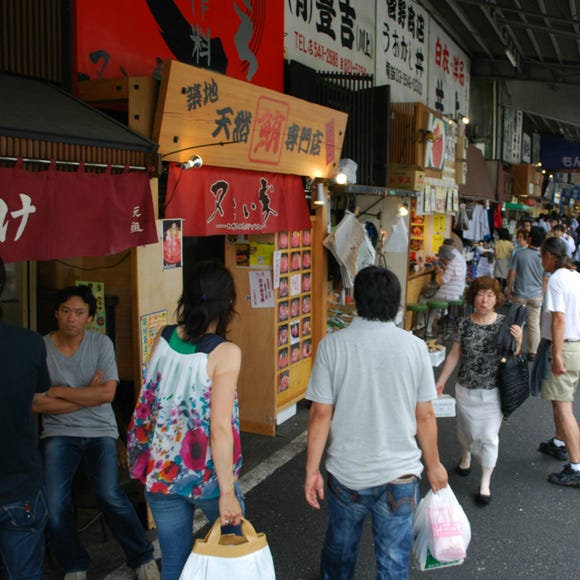
Tsukiji Outer Market
Old Towns (Shitamachi)

Kappabashi Street

Best Things to Do in Tokyo in April 2024: Events, Festivals & More

Opened in Spring 2024! What to do at Tokyu Plaza Harajuku Harakado

Step Into the Story: Inside Immersive Fort Tokyo

15 Must-Try Sushi Restaurants in Tokyo (+5 Trending Areas to Explore for Foodies)

The CASIO S100: How CASIO's Masterpiece Calculator Redefines Business Elegance With Japan-Made Reliability

Everything You Need To Know About the Kyoto-Osaka Sightseeing Pass
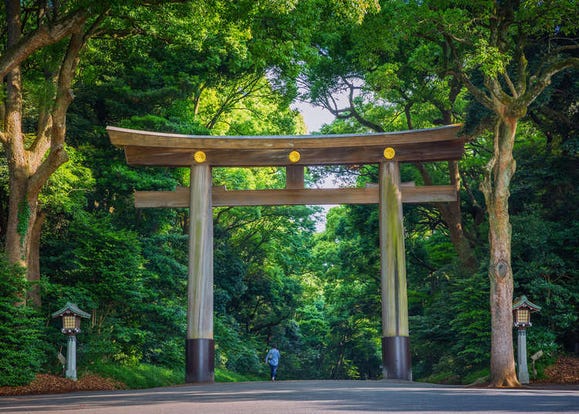
Meiji Shrine (Meiji Jingu): Exploring the Sacred Sanctuary of Peace in Bustling Tokyo

Guide to Ginza Itoya: The Century-Old Stationery Store
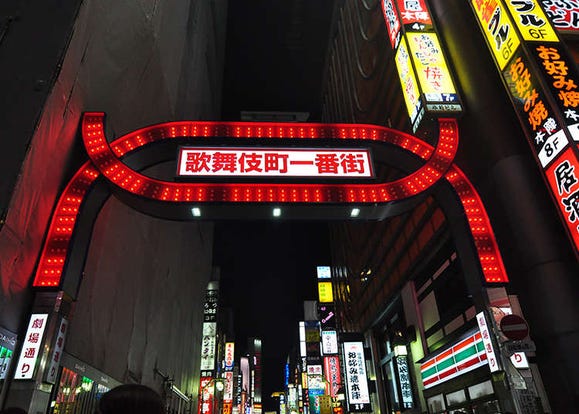
All About the Colorful Nightlife of Kabukicho!
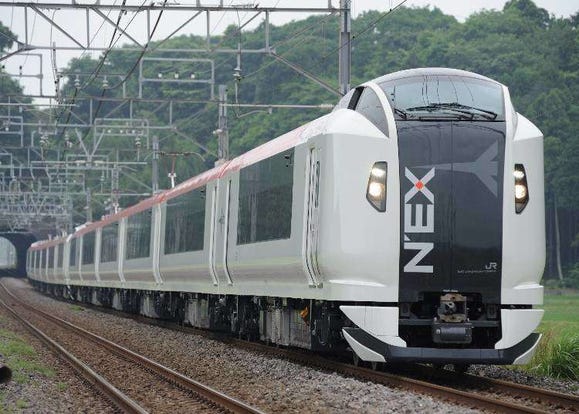
Getting From Tokyo Narita Airport (NRT) to Tokyo: Complete Guide

Carnivores, Rejoice: Roppongi's 4 Most Meatalicious Restaurants
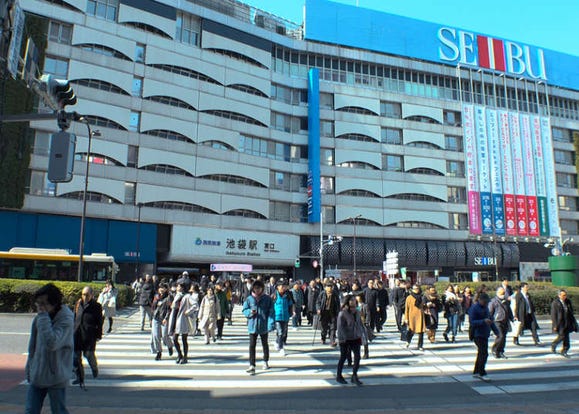
Ikebukuro Station Area Guide: Top 15 Spots When You Escape the Station's Maze!
- #best ramen tokyo
- #what to buy in ameyoko
- #what to bring to japan
- #new years in tokyo
- #best izakaya shinjuku
- #things to do tokyo
- #japanese nail trends
- #what to do in odaiba
- #onsen tattoo friendly tokyo
- #best sushi ginza
- #japanese convenience store snacks
- #best yakiniku shibuya
- #japanese fashion culture
- #best japanese soft drinks
Update April 12, 2024
Information for u.s. citizens in the middle east.
- Travel Advisories |
- Contact Us |
- MyTravelGov |
Find U.S. Embassies & Consulates
Travel.state.gov, congressional liaison, special issuance agency, u.s. passports, international travel, intercountry adoption, international parental child abduction, records and authentications, popular links, travel advisories, mytravelgov, stay connected, legal resources, legal information, info for u.s. law enforcement, replace or certify documents.
Before You Go
Learn About Your Destination
While Abroad
Emergencies
Share this page:
Travel Advisory January 8, 2024
Japan - level 1: exercise normal precautions.
Japan – Level 1: Exercise Normal Precautions
Reissued after periodic review without changes.
Exercise normal precautions in Japan.
Read the country information page for additional information on travel to Japan.
If you decide to travel to Japan:
- Enroll in the Smart Traveler Enrollment Program (STEP) to receive Alerts and make it easier to locate you in an emergency.
- Follow the Department of State on Facebook and Twitter .
- Follow Embassy Tokyo’s American Citizen Services section on Facebook and Twitter .
- Review the Country Security Report for Japan.
- Visit the CDC page for the latest Travel Health Information related to your travel.
- Prepare a contingency plan for emergency situations. Review the Traveler’s Checklist .
Embassy Messages
View Alerts and Messages Archive
Quick Facts
Duration of intended period of stay. Please note you cannot travel on a passport you have previously declared as lost or stolen even if you subsequently locate it
One page required for entry stamp
Amounts equivalent to ¥1,000,000 or above subject to declaration
Embassies and Consulates
U.S. Embassy Tokyo 1-10-5 Akasaka, Minato-ku, Tokyo 107-8420 Japan Telephone: 81-3-3224-5000 Emergency After-Hours Telephone: 81-3-3224-5000 Fax: 81-3-3224-5856 Our Navigator Assistant will guide you to the information you need.
U.S. Consulate General Osaka-Kobe 2-11-5, Nishitenma, Kita-ku, Osaka 530-8543, Japan Telephone: 81-6-6315-5900 Emergency After-Hours Telephone: 81-3-3224-5000 Fax: 81-6-6315-5914 Our Navigator Assistant will guide you to the information you need.
U.S. Consulate General Naha 2-1-1 Toyama, Urasoe City, Okinawa, Japan Telephone: 81-98-876-4211 Emergency Telephone: 81-3-3224-5000 Fax: 81-98-876-4243 Our Navigator Assistant will guide you to the information you need.
U.S. Consulate General Sapporo Kita 1-jo Nishi 28-chome, Chuo-ku, Sapporo 064-0821, Japan Telephone: 81-11-641-1115 Emergency After-Hours Telephone: 81-11-641-1115 Fax: 81-11-643-1283 Our Navigator Assistant will guide you to the information you need. All assistance at the Consulate General Sapporo is by appointment only.
U.S. Consulate Fukuoka 5-26 Ohori 2-chome, Chuo-ku, Fukuoka 810-0052, Japan Telephone: 81-92-751-9331 Emergency After-Hours Telephone: 81-3-3224-5000 Fax: 81-92-713-9222 [email protected] Our Navigator Assistant will guide you to the information you need. Routine services are provided by appointment only.
U.S. Consulate Nagoya Nagoya International Center Bldg. 6th floor, 1-47-1 Nagono, Nakamura-ku, Nagoya 450-0001, Japan Telephone: 81-52-581-4501 Emergency After-Hours Telephone: 81-3-3224-5000 Fax: 81-52-581-3190 Our Navigator Assistant will guide you to the information you need. Emergency services are provided by U.S. Consulate General Osaka-Kobe.
Destination Description
See the Department of State’s Fact Sheet on Japan for information on U.S-Japan relations.
Entry, Exit and Visa Requirements
Visit the Embassy of Japan website for the most current visa information.
There are no COVID-related entry requirements for U.S. citizens.
Entry & Exit:
- You must have a valid passport and an onward/return ticket for tourist/business "visa free" stays of up to 90 days. Your passport must be valid for the entire time you are staying in Japan.
- You cannot work on a 90-day "visa free" entry.
- "Visa free" entry status may not be changed to another visa status without departing and then re-entering Japan with the appropriate visa, such as a spouse, work, or study visa.
- Visit the Embassy of Japan website for the most current information on all visa categories.
- Japanese immigration officers may deny you entry if you appear to have no visible means of support.
- All foreign nationals are required to provide fingerprint scans and to be photographed at the port of entry. Exceptions to this requirement include diplomatic and official visa holders, minors, and individuals covered under SOFA Article IX.2. For further information about landing procedures, please visit the Immigration Bureau of Japan’s website .
- Make sure your passport is valid. Note you cannot travel on a passport you have previously declared as lost or stolen even if you subsequently locate it. Japanese authorities will likely deny you entry into Japan if you attempt to do so. If you have reported your passport lost or stolen, you must apply for a new passport before travel.
Transiting Japan:
- Ensure that your passport and visa are valid and up-to-date before you leave the United States. Passport services are not available at the airport.
- Airlines in Japan may deny you boarding for transit if you do not have the required travel documents for an onward destination in another country or if your passport does not have six months of validity remaining. For the entry requirements of the country you are traveling to, visit the State Department's Country Specific Information website.
Military/SOFA Travelers: While active-duty U.S. military personnel may enter Japan under the Status of Forces Agreement (SOFA) with proper Department of Defense (DoD) identification and travel orders, all SOFA family members, civilian employees, and contractors must have valid passports to enter Japan. Please consult the DOD Foreign Clearance Guide before leaving the United States.
See the Immigration Bureau of Japan’s website for various immigration procedures.
HIV/AIDS Restrictions: The U.S. Department of State is unaware of any HIV/AIDS entry restrictions for visitors to or foreign residents of Japan.
Find information on dual nationality , prevention of international child abduction and customs regulations on our websites.
Safety and Security
For police services in Japan, dial 110. For fire or ambulance services, dial 119.
Crime: Crime against U.S. citizens in Japan is generally low and usually involves personal disputes, theft, or vandalism. In addition:
- Robberies committed after a victim has been drugged from a spiked drink can occur, especially in nightlife districts.
- Sexual assaults are not often reported, but they do occur, and victims may be randomly targeted. Victim's assistance resources or shelters are difficult for foreigners to access.
- Hate-related violent crimes rarely occur, although some U.S. citizens have reported being the target of discrimination because of their nationality or their race.
- Pick pocketing can occur in crowded shopping areas, on trains, and at airports.
- Police reports must be filed before leaving Japan, as Japanese police will not accept reports filed from overseas.
- In instances involving credit card theft or fraud, Japanese police often provide a report number rather than a police report. You can provide this report number to your credit card company to confirm the incident with the police.
Entertainment and Nightlife Districts in Tokyo:
- Exercise caution in all entertainment and nightlife districts throughout Japan, especially Roppongi, Kabuki-cho, Shibuya, and Ikebukuro.
- Incidents involving U.S. citizens in these areas include physical and sexual assaults, drug overdoses, theft of purses, wallets, cash and credit cards at bars or clubs, and drugs slipped into drinks.
- Drink spiking at bars and entertainment venues, especially in areas such as Roppongi and Kabuki-cho, near Shinjuku, has led to robbery, physical and sexual assaults, and credit card fraud. Some victims regain consciousness in the bar or club; other victims may awaken on the street or other unfamiliar locations.
- U.S. citizens have reported being threatened with gun or knife violence in such venues so that they will pay exorbitant bar tabs or withdraw money. U.S. citizens have also reported being beaten when they have refused to pay or hand over money.
- There have been reports of U.S. citizens being forcibly taken to ATMs and robbed, or made to withdraw funds after being unable to pay exorbitant bar tabs.
- Please be aware that Roppongi, Kabuki-cho, and other entertainment and nightlife districts have also been the scenes of violence between criminal syndicates.
See the Department of State and the FBI pages for information on scams.
Police reports must be filed at the nearest police station prior to departure from Japan. The Japanese police cannot accept reports filed from overseas. Report crimes to the local police at 110 and contact the U.S. Embassy at 03-3224-5000 (011-81-3-3224-5000 from overseas). Remember that local authorities are responsible for investigating and prosecuting the crime.
See our webpage on help for U.S. victims of crime overseas .
- help you find appropriate medical care;
- assist you in reporting a crime to the police;
- contact relatives or friends with your written consent;
- explain the local criminal justice process in general terms;
- provide a list of local attorneys;
- provide information on victim’s compensation programs in the U.S. ;
- provide an emergency loan for repatriation to the United States and/or limited medical support in cases of destitution
- help you find accommodation and arrange flights home; and/or
- replace a stolen or lost passport.
Contacting Police, Fire and Ambulance Services: You can reach the police throughout Japan by dialing 110. Fire and ambulance services can be contacted by dialing 119. Note that English-speaking dispatchers may not be available. Please review advice on “Calling for Help” on our website . If you need assistance, you should be able to describe your address/location in Japanese or find someone who can do so, since few police officers speak English.
Domestic Violence: Victim's assistance resources or battered women's shelters exist in major urban areas, but are difficult for foreigners to access. These types of resources are also generally unavailable in rural areas. Investigations of sexual assault crimes are often conducted without female police officers present, and police typically ask about the victim's sexual history and previous relationships.
Tourism: The Victim's assistance resources or battered women's shelters exist in major urban areas, but are difficult for foreigners to access. These types of resources are also generally unavailable in rural areas. Investigations of sexual assault crimes are often conducted without female police officers present, and police typically ask about the victim's sexual history and previous relationships.
See our webpage for more information on insurance providers for overseas coverage.
Local Laws & Special Circumstances
Criminal Penalties: You are subject to Japanese law while you are in Japan. If you violate Japanese laws, even unknowingly, you may be arrested, imprisoned, or deported. If you are arrested in Japan, even for a minor offense , you may be held in detention without bail for several months or more during the investigation and legal proceedings.
Some offences are also prosecutable in the United States, regardless of Japanese law. For examples, see our website on crimes against minors abroad and the Department of Justice website.
The vast majority of arrests of U.S. citizens in Japan are for drug-related offenses. Japanese authorities aggressively pursue drug smugglers and users, including recreational users with sophisticated detection equipment, "sniffing" dogs, blood tests, “stop and frisk” tactics, and other methods. Penalties for possessing, using, or trafficking a drug that is illegal in Japan are severe, and convicted offenders can expect long jail sentences and fines. Please note that some drugs which may be legal in certain jurisdictions outside of Japan, including marijuana and synthetic drugs, remain illegal in Japan. This also applies to certain prescription drugs that doctors in the United States may prescribe. Japanese law makes no distinction between medical and recreational marijuana; therefore, having a prescription for medical marijuana will not help you avoid arrest or prosecution. Even possession of a small amount of marijuana for personal medical or recreational use can result in a long jail sentence and fine. Japanese customs officials carefully screen incoming packages, and individuals who are mailed drugs can be arrested and prosecuted as drug traffickers.
Confiscation of Prescription Drugs and Other Medication: It is important to note that some medications that are routinely prescribed in the United States, including Adderall and marijuana, are strictly prohibited in Japan. The Japanese government decides which medications may be imported legally into Japan. The Embassy and Consulates of Japan in the United States have limited information available and do not have a comprehensive list of specific medications or ingredients. Please see more information on importing medicines into Japan.
You must carry your U.S. passport or Japanese Residence Card (Zairyu Kado) with you at all times. In Japan, you may be taken in for questioning if you do not have your passport or Japanese residence card to show your identity and status in Japan (e.g., as a visitor, student, worker, or permanent resident).
It is illegal to work in Japan while in tourist or visa-waiver status. Overstaying your visa or working illegally may lead to fines of several thousands of dollars, and in some cases, re-entry bans as long as 10 years, or indefinitely for drug offenders. For additional information, please see Japan’s Immigration Control and Refugee Recognition Act and contact the Japanese Embassy or nearest Japanese Consulate in the United States for more information.
Driving under the influence of alcohol could also land you immediately in jail. The blood-alcohol limit in Japan is 0.03%. Punishments can be up to 10,000 USD in fines and up to five years in prison.
Possession of a gun or ammunition is a crime in Japan. Carrying a knife with a locking blade, or a folding blade that is longer than 5.5 cm (a little more than two inches), is illegal in Japan. U.S. citizens and U.S. military personnel have been arrested and detained for more than 10 days for carrying pocket knives that are legal in the United States but illegal in Japan. The possession of lock-picking tools is illegal in Japan.
Establishing a Business : Individuals establishing a business or practicing a profession that requires additional permits or licensing should seek information from the competent local authorities, prior to practicing or operating a business.
A list of English-speaking lawyers located throughout Japan is available on our website .
Arrest Notification : If you are arrested or detained, ask police or prison officials to notify the U.S. Embassy immediately. See the Department of State’s webpage and the Embassy’s website for additional information.
Counterfeit and Pirated Goods: Although counterfeit and pirated goods are prevalent in many countries, they may still be illegal according to local laws. You may also pay fines or have to give them up if you bring them back to the United States. See the U.S. Department of Justice’s website for more information .
Faith-Based Travelers: See our following webpages for details:
- Faith-Based Travel Information
- International Religious Freedom Report – see country reports
- Human Rights Report – see country reports
- Hajj Fact Sheet for Travelers
- Best Practices for Volunteering Abroad
LGBTQI+ Travelers: There are no legal restrictions on same-sex sexual relations or the organization of LGBTI+ events in Japan.
Laws governing rape, sexual commerce, and other activity involving sexual relations do not apply to same-sex sexual activity. This leads to lower penalties for perpetrators of same-sex rape and sexual assault and greater legal ambiguity surrounding same-sex prostitution.
See our LGBTQI+ Travel Information page and section 6 of our Human Rights report for further details.
Travelers with Disabilities: The law in Japan prohibits discrimination against persons with disabilities. Japanese disability laws require the public sector to provide reasonable accommodations and the private sector to make best efforts in employment, education, access to health care, or the provision of other services; however, there are no penalties for noncompliance. Social acceptance of persons with disabilities in public is not as prevalent as in the United States.
Although Japan’s accessibility laws mandate that new construction projects for public use include provisions for persons with disabilities, older buildings are not likely to have been retrofitted for accessibility. At major train stations, airports, and hotels, travelers with disabilities should encounter few accessibility problems. Note that many smaller stations are inaccessible to those who cannot climb stairs. Information on travel in Japan for travelers with disabilities is available at Accessible Japan .
Travelers with disabilities can learn more about resources available in country from the Japan National Tourism Organization’s traveling with a disability page .
Students: See our Students Abroad page and FBI travel tips .
Women Travelers: See our travel tips for Women Travelers .
Conditions at Prisons and Detention Facilities: Japanese prisons and detention facilities maintain internal order through a regime of very strict discipline. U.S. citizen prisoners often complain of stark, austere living conditions and psychological isolation. Heating in winter can be inadequate in some facilities, food portions can be significantly smaller than what many may be accustomed to, and access to specialized medical care, particularly mental health care, at detention facilities and prisons is sometimes limited. Additional information on arrests in Japan is available on our embassy website.
Customs Regulations: Please contact the Japanese Embassy or nearest Japanese consulate in the United States, or visit the Japanese Customs website for specific information regarding import restrictions and customs requirements.
Japanese customs authorities encourage the use of an Admission Temporaire/Temporary Admission (ATA) Carnet in order to temporarily import professional equipment, commercial samples, and/or goods for exhibitions and trade fairs into Japan. For additional information, please call (212) 354-4480, or email the U.S. CIB for details.
Pets: The Japanese Animal Quarantine Service (AQS) sets procedures for importing pets. At a minimum, the process will take seven to eight months, though the process can take up to a year before a pet may enter Japan. Advance planning is critical. You can find more information about importing a pet into Japan or information about exporting a pet from Japan on our Embassy website.
Employment Issues: U.S. citizens should not come to Japan to work without having the proper employment visa arranged ahead of time. Teaching English, even privately, and serving as hosts/hostesses are both considered "work" in Japan and are illegal without the proper visa.
Some U.S.-based employment agencies and Japanese employers do not fully or correctly represent the true nature of employment terms and conditions. A minimum requirement for effectively seeking the protection of Japanese labor law is a written and signed work contract. If there is no signed contract, Japanese authorities are not able to act on behalf of foreign workers. If you are coming to Japan to work, carefully review your contract and the history and reputation of your Japanese employer before traveling to Japan. Complaints against U.S.-based employment agencies or recruiters may be directed to the Better Business Bureau or the Office of the Attorney General in the relevant state(s).
Disaster Preparedness : Japan is prone to natural disasters, including earthquakes, typhoons, tsunamis, and landslides. See the Embassy’s webpage for recommendations and steps you can take to prepare for an emergency. The Japan Tourism Organization’s Safety Tips app and NHK World app provide Japanese government emergency “J-Alerts” to your cell phone in English through push notifications. “J-Alerts” can provide early warning emergency alerts on earthquakes predicted in a specific area, sometimes seconds before an earthquake hits.
Radiation: Fukushima Daiichi Nuclear Power Plant : The Government of Japan continues to closely monitor the conditions at and around the Fukushima Daiichi Nuclear Power Plant. You should comply with all travel restrictions and cautions put into place by the Government of Japan for areas surrounding the plant. For more information, contact the Japan Nuclear Regulation Authority .
For police service in Japan, dial 110. For fire or ambulance, dial 119.
Ambulance services are widely available but receiving hospitals may decline to accept inbound patients unless they can provide proof of funds to pay for services.
COVID-19 Testing:
- Travelers should contact Japanese local health providers to determine the location of testing facilities within Japan. A non-comprehensive list of some COVID-19 testing facilities can be found here on the Embassy website.
COVID-19 Vaccines:
- The COVID-19 vaccine is available for U.S. citizens to receive in Japan.
- Review the Government of Japan’s English language website on COVID-19 vaccinations in Japan.
- Visit the FDA's website to learn more about FDA-approved vaccines in the United States.
The Department of State does not pay medical bills. Be aware that U.S. Medicare/Medicaid does not apply overseas. Most hospitals and doctors overseas do not accept U.S. health insurance.
Medical Insurance: Make sure your health insurance plan provides coverage overseas. Some care providers in Japan only accept cash payments. See our webpage for more information on insurance providers for overseas coverage. Visit the U.S. Centers for Disease Control and Prevention for more information on type of insurance you should consider before you travel overseas.
We strongly recommend supplemental insurance to cover medical evacuation.
If traveling with prescription medication, check with the government of Japan’s Ministry of Health website to ensure the medication is legal in Japan; possession, use, or importation of a prescription drug that is illegal in Japan may result in arrest and criminal prosecution. Always carry your prescription medication in original packaging with your doctor’s prescription. U.S. prescriptions are not honored in Japan, so if you need ongoing prescription medicine, you should arrive with a sufficient supply for your stay in Japan or enough until you are able to see a local care provider.
Vaccinations: Be up-to-date on all vaccinations recommended by the U.S. Centers for Disease Control and Prevention.
Further health information:
- World Health Organization
- U.S. Centers for Disease Control and Prevention (CDC)
Japan has a national health insurance system which is available only to those foreigners with long-term visas for Japan. National health insurance does not pay for medical evacuation. Medical caregivers in Japan may require payment in full at the time of treatment or concrete proof of ability to pay before they will treat a foreigner who is not a member of the national health insurance plan.
U.S.-style and standard psychological and psychiatric care can be difficult to locate outside of major urban centers in Japan and generally is not available outside of Japan's major cities. Extended psychiatric care can be very difficult to obtain.
Air Quality: Visit AirNow Department of State for information on air quality at U.S. Embassies and Consulates.
Travel and Transportation
Road Conditions and Safety : Driving in Japan can be complicated and expensive. Traffic moves on the left side of the road. Those who cannot read the language will have trouble understanding road signs. Highway tolls can be very high, and city traffic is often very congested. A 20-mile trip in the Tokyo area may take two hours. There is virtually no legal roadside or curbside parking; however, traffic is commonly blocked or partially blocked by those illegally parked curbside. In mountainous areas, roads are often closed during the winter, and cars should be equipped with tire chains. Roads in Japan are much narrower than those in the United States.
Traffic Laws : Japanese law provides that all drivers in Japan are held liable in the event of an accident, and assesses fault in an accident on all parties. Japanese compulsory insurance (JCI) is mandatory for all automobile owners and drivers in Japan. Most short-term visitors choose not to drive in Japan. Turning right or left on red lights is not permitted in Japan, and all passengers are required to fasten their seat belts.
Japan has a national 0.03 percent blood-alcohol-level standard for driving, and drivers stopped for driving under the influence of intoxicants will have their licenses confiscated. If you are found guilty of driving under the influence, speeding, or blatantly careless driving resulting in injury, you are subject to up to 15 years in prison.
See our Road Safety page for more information. The National Police Agency (NPA) oversees the administration and enforcement of traffic laws in Japan. You can find further information in English on the NPA English website . Information about roadside assistance, rules of the road, and obtaining a Japanese driver's license is available in English from the Japan Automobile Federation (JAF) web site . See the Japan National Tourism Organization’s website for car rental and driving in Japan.
Emergency Assistance : For roadside assistance, please contact the Japan Automobile Federation (JAF) at 03-5730-0111 in Tokyo, 072-645-0111 in Osaka, 011-857-8139 in Sapporo, 092-841-5000 in Fukuoka, or 098-877-9163 in Okinawa.
International Driving Permits (IDPs): An international driving permit (IDP) issued in the United States by the American Automobile Association (AAA) or the American Automobile Touring Alliance (AATA) is required of short-term visitors who drive in Japan. You must obtain an IDP issued in your country of residence prior to arriving in Japan. The U.S. Embassy andU.S. consulates do not issue IDPs. IDPs issued via the Internet and/or by other organizations are not valid in Japan.
Foreign residents in Japan who use an IDP may be fined or arrested. In practice, the term “resident” involves more than simply visa status or length of stay in Japan and is determined by the police. In short, a driver license from country outside Japan is not a substitute for a valid Japanese license for foreign residents. See the U.S. Embassy’s website for more information on driving in Japan.
Aviation Safety Oversight : The U.S. Federal Aviation Administration (FAA) has assessed the government of Japan’s Civil Aviation Authority as being in compliance with International Civil Aviation Organization (ICAO) aviation safety standards for oversight of Japan’s air carrier operations. Further information may be found on the FAA's safety assessment page .
Maritime Travel : Mariners planning travel to Japan should also check for U.S. maritime advisories and alerts in the Alerts section of the Embassy’s messages. Information may also be posted to the U.S. Coast Guard homeport website , and the National Geospatial-Intelligence Agency (NGA) broadcast warnings website portal select “broadcast warnings.”
For additional travel information
- Enroll in the Smart Traveler Enrollment Program (STEP) to receive security messages and make it easier to locate you in an emergency.
- Call us in Washington, D.C. at 1-888-407-4747 (toll-free in the United States and Canada) or 1-202-501-4444 (from all other countries) from 8:00 a.m. to 8:00 p.m., Eastern Standard Time, Monday through Friday (except U.S. federal holidays).
- See the State Department’s travel website for the Worldwide Caution and Travel Advisories .
- Follow us on Twitter and Facebook .
- See traveling safely abroad for useful travel tips.
Review information about International Parental Child Abduction in Japan . For additional IPCA-related information, please see the International Child Abduction Prevention and Return Act ( ICAPRA ) report.
Travel Advisory Levels
Assistance for u.s. citizens, learn about your destination, enroll in step.

Subscribe to get up-to-date safety and security information and help us reach you in an emergency abroad.
Recommended Web Browsers: Microsoft Edge or Google Chrome.
Make two copies of all of your travel documents in case of emergency, and leave one with a trusted friend or relative.
Afghanistan
Antigua and Barbuda
Bonaire, Sint Eustatius, and Saba
Bosnia and Herzegovina
British Virgin Islands
Burkina Faso
Burma (Myanmar)
Cayman Islands
Central African Republic
Cote d Ivoire
Curaçao
Czech Republic
Democratic Republic of the Congo
Dominican Republic
El Salvador
Equatorial Guinea
Eswatini (Swaziland)
Falkland Islands
France (includes Monaco)
French Guiana
French Polynesia
French West Indies
Guadeloupe, Martinique, Saint Martin, and Saint Barthélemy (French West Indies)
Guinea-Bissau
Isle of Man
Israel, The West Bank and Gaza
Liechtenstein
Marshall Islands
Netherlands
New Caledonia
New Zealand
North Korea (Democratic People's Republic of Korea)
Papua New Guinea
Philippines
Republic of North Macedonia
Republic of the Congo
Saint Kitts and Nevis
Saint Lucia
Saint Vincent and the Grenadines
Sao Tome and Principe
Saudi Arabia
Sierra Leone
Sint Maarten
Solomon Islands
South Africa
South Korea
South Sudan
Switzerland
The Bahamas
Timor-Leste
Trinidad and Tobago
Turkmenistan
Turks and Caicos Islands
United Arab Emirates
United Kingdom
Vatican City (Holy See)
External Link
You are about to leave travel.state.gov for an external website that is not maintained by the U.S. Department of State.
Links to external websites are provided as a convenience and should not be construed as an endorsement by the U.S. Department of State of the views or products contained therein. If you wish to remain on travel.state.gov, click the "cancel" message.
You are about to visit:
The Ministry of Foreign Affairs website uses JavaScript. Please turn on "JavaScript" and use it.

With regards to visa inquiries, you can contact “Foreign Residents Support Center (FRESC) MOFA Visa Information” or “the Japan Visa Information Hotline” listed on the website of the Embassy or Consulate General of Japan. Due to the complex nature of visa requirements, we are UNABLE to respond to visa-related inquiries made through this website at the moment. We advise you to contact the Consular Section of the Embassy or Consulate General of Japan nearest you for more information and advice.
If you are a foreign national, please click the links below for specific information related to respective subjects.
1. Visa Application Procedures
2. about visa.
- 3. Visa Application Documents
4. Frequently Asked Questions
5. announcements.
- 6. Inquiries Concerning Visas
- Be aware of fraudulent website, social media, emails in an attempt to extract payments from visa applicants (July 5, 2017)
Short-Term Stay
(A stay of up to 90 days for tourism, business, visiting friends or relatives, etc. that does not include remunerative activities)
Click on the nationality of the visa applicant traveling to Japan.

Visa exemption arrangements have been resumed from 0:00 am (JST) on October 11, 2022.
It is highly recommended to purchase international travel medical insurance for your trip to Japan. Overseas travel medical insurance helps you in case of emergency.
Work or Long-Term Stay
(A stay during which the applicant performs remunerative work in Japan or a stay of over 90 days in Japan, etc.)
- Procedures chart for long-term stays
- The Working Holiday Programmes in Japan
- Japan’s Pre-Entry Tuberculosis Screening
Visa for Medical Stay
Visa exemptions for diplomatic and official passport holders.
- Points to Note and Application Procedures
- Visa Processing Time
- Validity of a Visa
- Criteria of Visa Issuance
- Visas and Landing Permission
3. Visa Application Documents (download)
- (Note1) Refer to [1. Visa Application Procedures] for details of documents required.
- (Note3) Visa application forms that are not in the QR code (PDF) format cannot be saved. Please print a paper copy of the Visa application.
- Visa application form
- Tell me why you rejected my visa application.
- I want to go to Japan. Do I need a visa?
- I want to invite a foreign national to Japan. What procedures are necessary?
- What should I do to get a Certificate of Eligibility?
- The Certificate of Eligibility will not arrive by the time I apply for a visa. Can I still apply for a visa with its copy?
- As a “guarantor”, to what extent do I need to be responsible?
Newly introduced visas
- Special highly skilled professional (J-Skip)
- Designated activities (Future creation individual, Spouse or Child of future creation individual) (J-Find)
- Designated activities (Digital Nomad, Spouse or Child of Digital Nomad)
Review on restrictions on new entry of foreign nationals into Japan
- Application for Visa for foreign nationals eligible for Phased Measures toward Resuming Cross-Border Travel
- Border measures to prevent the spread of novel coronavirus (COVID-19)
Statistics for the Number of Visas
- Number of Visas Issued in 2021(May 31,2022)
Relaxation of Visa Requirements
- Visa Waiver Measure for Nationals of the Federative Republic of Brazil in Possession of Ordinary Passports(September 30, 2023)
- Signing of the Japan-Israel Working Holiday Agreement (April 28, 2023)
- Visa Waiver Measure for Nationals of the State of Qatar based on Ordinary Passport Registration System (April 2, 2023)
- Visa Waiver Measure for Nationals of the United Arab Emirates in Possession of Ordinary Passports (November 1, 2022)
- Japan’s Pre-Entry Tuberculosis Screening (April 3, 2020)
- Japan's Visa Policy in Accordance with Measures to Combat Trafficking in Persons (February 2009)
6. Inquiries about Visas Application
Foreign Residents Support Center (FRESC) MOFA Visa Information
Yotsuya Tower 13F, 1-6-1 Yotsuya, Shinjuku-ku, Tokyo, 160-0004 Navi-Dial: 0570-011000 (For some IP phones and calls from overseas, please call +81-3-5369-6577) Monday to Friday, 09:00-17:00
Related Links
- Websites of Japanese Embassies, Consulates and Permanent Missions

- Northern Ireland
- Southern England
- Northern England
- Other Regions
- Shopping Guides
- Restaurant Guides
- Historic Attractions
- Theme Parks/Adventure
- World Heritage Sites
- Top UK Attractions
- UK National Parks
- England Airports
- Scotland Airports
- Wales Airports
- Northern Ireland Airports
- UK Airport Hotels
- North America
- Travellers Tips
- UK Travel Tips & Advice
- Articles & Inspirations
- Holiday Packages
- Hotel Reservations
Travel Tools
- UK Holidays
Business Guides
- Bus Travel Articles
- Airport Travel Tips
- Air Travel Tips
- Airline Seat Plans
- Flight Status
- Foreign Currency
Travel Bookings
- Flight Deals
- Travel Cover
Japan Business Travel Guide
Related articles, canada business travel guide, estonia business travel guide, luxembourg business travel guide.
- Website Terms
- Site Disclaimer
- Privacy Policy

What To Pack On Your Business Trip To Japan
Prepare for success on your business trip to Japan with our comprehensive packing guide. From business attire to cultural essentials, ensure you have everything you need for a productive and seamless journey in Japan's unique business landscape.
WegoPro Team
If you enjoyed our packing list for a business trip to China , we’re back with another business traveler’s guide—this time for the Land of the Rising Sun, Japan.
As the third largest economy in the world, Japan is, unsurprisingly, a major destination for international business travelers. But despite its popularity with visitors, even the slightest cultural slip-up can have an impact on the success of a business trip.
To help you have one less thing to worry about, we’ve compiled a list of packing essentials for your upcoming business trip to Japan, including items that are deemed important in local business culture.
Multiple Pairs of Clean Socks 🧦
Japanese business culture tends to involve food and drink. During your visit, you may find yourself invited to dinner or drinks at your contact’s favorite pub or restaurant. In a country where it’s customary to remove one’s shoes before entering a private home, restaurant, or bar, it pays to pack multiple pairs of clean, hole-free socks for your business trip.
Why? Well, if you’re going to take off your shoes, the last thing you want is for the dank smell of your dirty socks to waft around the room. Fresh pairs are a must— at least one for every day of your trip if you don’t want to pay for laundry.
Not only is it considered rude to track dirt into a house or business establishment, but wearing shoes indoors also ignores basic hygiene rules in Japan, where people may sit on tatami mats and dine close to the floor.
Bespoke Business Cards With Japanese Translations 📇
As we discussed in a blog post on business travel essentials in Japan , the Japanese are serious when it comes to meishi koukan, or the tradition of exchanging business cards . It’s rare for a business transaction between strangers to begin without this practice as it’s the formal beginning of a business relationship.
If there’s plenty at stake in your upcoming business trip to Japan, don’t be afraid to go the extra mile. Go ahead and order bespoke, professionally-designed business cards with Japanese translations of all your personal information (care of a professional translator or native speaker you trust) on the other side of the card.
It’s not unusual for Japanese businessmen to compliment their colleagues’ business cards, so pay attention to design. And remember to place your cards in a case to keep them in mint condition throughout the trip. You’ll also be using this case to carry any business cards you receive from the people you meet.
Printed Collateral 📃
Aside from business cards, Japan’s paper-based culture can also be seen in people’s preference for printed collateral, especially when it comes to business matters.
It’s always a good idea to have hard copies of documents, presentations, or brochures you want to give to your Japanese associates. If you can, provide Japanese translations of your collateral, which your contacts will highly appreciate.
Bear in mind that Japanese businessmen pay attention to details you may think are unimportant, such as the founding date of your organization or staff size. Be sure to include the titles of the key people in your organization as well.
Conservative Business Attire 👔
Unless stated otherwise, businessmen in Japan tend to dress in some form of business attire, even in more casual industries like gaming, music, or entertainment. Better to come wearing a plain suit than sticking out to be undressed.
For men, a dark suit and plain white or blue dress shirt paired with a plain tie and polished black shoes is a safe option for any first meeting. For women, a conservative skirt suit or pantsuit in any dark color paired with a plain blouse works well.
The Japanese tend to be conservative , so try to take a minimalist approach to your business outfits and avoid loud color combinations and exaggerated patterns.
Withdraw Cash Before Arriving At The Airport 💴
According to Boston Consulting Group, cash payments account for 65 percent of all transactions in Japan —an anomaly considering the average in other developed countries is 32 percent. The reason? The majority of small businesses still prefer cash.
The good news is that ATMs are ubiquitous. Still, it’s a good idea to bring some cash in the local currency to pay for necessities at the airport, such as a pocket Wi-Fi router, a local SIM, or your cab fare or train ticket to the city.
Credit cards are accepted in large department stores, supermarkets, and electronic stores. Travelers from Southeast Asia can also use LINE Pay to make payments with their phones. WeChat has also launched a similar service in Japan called WeChat Pay using LINE accounts.
A Meaningful Gift 🎁
In Japanese culture, omiyage is the tradition of giving gifts or souvenirs (usually edibles) to loved ones after returning home from a trip.
In business settings, it’s customary for associates to exchange gifts towards the end of a meeting. This is a great opportunity to give a little something from home, whether it’s a bottle of your favorite local wine, a jar of kaya jam, or bakkwa. If you know your contact has children, a plush merlion or chocolate is always a crowd-pleaser.
Be sure to wrap your gift in a bag and present it with both hands to your associate at the right moment.
Medication 💊
Whether you’re nursing a hangover from a night out with your Japanese contacts, jet lag, or a migraine from the cold weather, it’s always a good idea to pack headache medicine in your suitcase.
You may also find yourself gorging on the best sushi of your life. But if you’re unused to raw fish, don’t be surprised to have an upset stomach. Activated charcoal pills shorten the duration of a traveler’s diarrhea and food poisoning, so go ahead and bring some with you.
Pack Light, Pack Right
A business trip to Japan doesn’t mean stuffing your entire room’s contents into your suitcase. With a bit of planning and anticipation of your trip’s activities, you can pack the items that matter and focus on the goals of your visit. You may even get to squeeze in a bit of time for sightseeing, something every first-time visitor to Japan should do.
Stay tuned to WegoPro for the latest updates and news on the travel industry!
Sign up for more like this.
- Media & Industry
- Meetings & Events
- Select Language 简体中文 繁體中文(香港) 繁體中文(臺灣) India (English) Bahasa Indonesia 한국어 ภาษาไทย Tiếng Việt Singapore (English) Philippines (English) Malaysia (English) Australia/New Zealand (English) Français Deutsch Italiano Español United Kingdom (English) Nordic countries(English) Canada (English) Canada (Français) United States (English) Mexico (español) Português العربية Japan(日本語) Global (English)
- India (English)
- Bahasa Indonesia
- Singapore (English)
- Philippines (English)
- Malaysia (English)
- Australia/New Zealand (English)
- United Kingdom (English)
- Nordic countries(English)
- Canada (English)
- Canada (Français)
- United States (English)
- Mexico (español)
- Global (English)
- Fujiyoshida
- Shimonoseki
- Ishigaki Island
- Miyako Island
- Kerama Island
- Tokyo Island
- Koka & Shigaraki
- Hida Takayama
- Ginza, Nihonbashi
- Beppu & Yufuin (Onsen)
- Ginzan Onsen
- Nagasaki Islands

- Kumano Kodo
- Shikoku Karst
- Amami Oshima
- Hachimantai
- Omihachiman
- Aizuwakamatsu

- Diving in Japan
- Skiing in Japan
- Seasonal Flowers in Japan
- Sustainable Outdoors
- Off the Beaten Track in Japan
- Scenic Spots
- World Heritage
- Home Stays & Farm Stays

- Japanese Gardens
- Japanese Crafts
- Temple Stays
- Heritage Stays
- Festivals and Events
- Theater in Japan
- Japanese Tea Ceremony
- Cultural Experiences in Japan
- Culture in Japan

- Local Cuisine Eastern Japan
- Local Cuisine Western Japan
- Local Street Food
- Japan's Local Ekiben
- Japanese Whisky
- Vegetarian and Vegan Guide
- Sushi in Japan Guide
- Japanese Sake Breweries

- Art Museums
- Architecture
- Performing Arts
- Art Festivals
- Japanese Anime and Comics
- Japanese Ceramics
- Local Crafts

- Scenic Night Views
- Natural Wonders
- Theme Parks
- Samurai & Ninja
- Iconic Architecture

- Wellness Travel in Japan
- Japanese Ryokan Guide
- A Guide to Stargazing in Japan
- Relaxation in Japan
- Forest Bathing (Shinrin-yoku)

- Experiences in Japan
- Enjoy my Japan
- National Parks
- Japan's Local Treasures
- Japan Heritage
- Snow Like No Other
- Wonder Around Japan

- Visa Information
- Getting to Japan
- Airport Access
- COVID-19: Practical Information for Traveling to Japan
- Anime Tourism
- Countryside Stays
- Accessible Tourism
- Hokkaido Great Outdoors
- Scenic World Heritage in Tohoku
- Shikoku’s Nature and Traditions
- Southern Kyushu by Rail

- Traveling by Rail
- How to Travel by Train and Bus
- JR Rail Passes
- Scenic Railways
- Renting a Car
- Sustainable Travel in Japan
- Travel Brochures
- Useful Apps
- Online Reservation Sites
- Eco-friendly Accommodation
- Luxury Accommodations
- Traveling With a Disability
- Hands-free Travel
- How to Book a Certified Tour Guide
- Volunteer Guides
- Tourist Information Center

- Japanese Manners
- Spring in Japan
- Summer in Japan
- Autumn in Japan
- Winter in Japan
- Cherry Blossom Forecast
- Autumn Leaves Forecast

- Japan Visitor Hotline
- Travel Insurance in Japan
- Japan Safe Travel Information
- Accessibility in Japan
- Vegetarian Guide
- Muslim Travelers
- Safety Tips

- JAPAN Monthly Web Magazine
- Arts & Cultures
- Nature & Outdoor
- Festivals & Events
- Insider Blog
- Things to do
- Local Guides
- Food & drink
- Traditional
- Hokuriku Shinetsu

My Favorites
${v.desc | trunc(25)}
Planning a Trip to Japan?
Share your travel photos with us by hashtagging your images with #visitjapanjp

- Helping You Plan
All you need to know about entering, leaving and staying in Japan
Any foreign visitor entering Japan must have a valid passport for the duration of their stay, and all visitors must comply with the conditions of their visas.
See below for information about the current visa requirements for Japan.
If you have any further questions, please contact the Japanese embassy or consulate in your country of residence.
Enjoy the Digital Nomad Lifestyle in Japan
Japan introduced a new visa program specifically for "digital nomads" -international remote workers who are attracting worldwide attention.
Click here for details:
Did this information help you?
out of found this information helpful.
Thank you for your feedback.
Recommended for you.

Please Choose Your Language
Browse the JNTO site in one of multiple languages

Booking Travel to Japan: When Should You Go for Work?
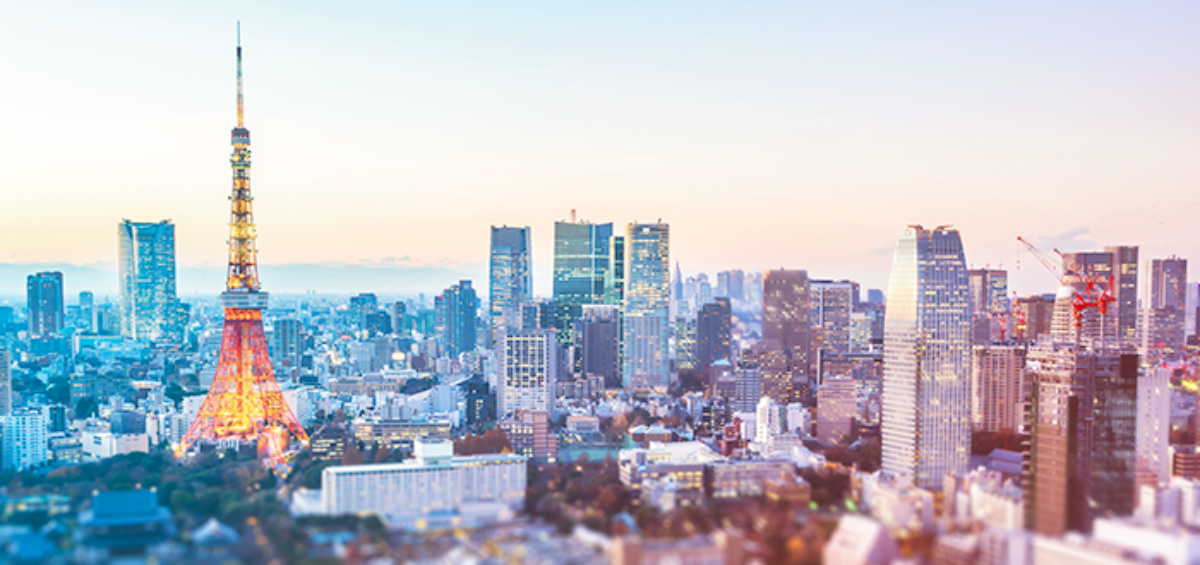
Make the most of your business trip by following these tips for booking travel to Japan.
Japan is the world’s third-largest economy, behind only the United States and China. It’s also the epicenter of commerce in the Asia-Pacific region. For these reasons and others, you may find yourself needing to book travel to Japan.
But when is the best time to visit Japan if you want to maximize your trip? When is the most affordable time to visit Japan if you want to keep costs down? And are there bad times to visit Japan that you should avoid altogether?
To help you plan your business trip to Japan , here are answers to those questions plus other important information on traveling to this important business destination.
Good Times to Visit Japan
The best times to visit Japan are spring (March to May) and fall (September to November). Visiting during these time windows helps you avoid Japan’s cold winters and hot, humid summers. Rainfall is also low during these months, so there’s less chance of weather events disrupting your travel plans. As an added bonus, if you visit in spring, you’ll get to see the bloom of Japan’s famous cherry blossoms.
The months of October, November and December may be slightly busier than other times of year. During these months, many Japanese citizens living abroad travel home to visit family and friends. While you can find great weather by visiting Japan in October and November, you may find airports and hotels more crowded.
If your business thrives on trade shows and conferences, you may also want to plan around a significant event. Here’s a list of major trade shows that take place in Japan each year:
- Mobile Solutions Expo (February): A tradeshow for mobile technologies.
- World Smart Energy Week (February): An exhibition and conference for the energy industry.
- Beautyworld (February): A conference for the cosmetics and beauty industries.
- Forestrise (August): A wood-related conference that brings visitors from around the world.
- IREX (November): A robot-focused exhibition.
- Mass-Trans Innovation (November): A tradeshow for railroad technologies.
Of course, there are many other conferences and tradeshows for various niches. It might be a good idea to build your trip around a tradeshow for your industry, allowing you to schedule other meetings and client visits before or after the show.
Cheap Times to Visit Japan
Japan isn’t a budget destination for business travel. Most visitors fly in and out of Tokyo, which is one of the largest and most expensive cities in the world, so expect to pay a premium for airfare, hotels and other travel services.
If you’re looking to save, plan your visit for the beginning of the year. The number of visitors to Japan is at its lowest from January to March, which means prices tend to be low during this period, too.
Always check calendars and schedules for major events, though. Japan is an important international destination, which means often hosts events for international audiences (like the 2020 Summer Olympics, which will take place in Tokyo). If you try to visit Japan during an international event, you may have a hard time getting flights and hotels — and you’ll likely pay exorbitant rates if you do find them.

Bad Times to Visit Japan
Bad times to visit Japan depend on where you’re going within the country and what’s most important when you get there. For example, destinations in the southern portion of Japan (like Osaka and Hiroshima) are going to be hot in summer but mild in winter. Conversely, destinations in the northern portion of Japan (like Sapporo) are going to be mild in summer and cold in winter. Also, different parts of Japan experience rainy season (June and July) to varying degrees.
Weather might not be a priority for you, though. In fact, business travelers that embrace particularly cold, hot or rainy times of year may find that travel is cheaper during those seasons and that airports and hotels tend to be less crowded.
If you’re traveling for business, it’s a good idea to avoid holidays, too. The most important time to avoid is around the Golden Week Holidays, which happen across seven days in late April and early May. Many people travel around the Golden Week Holidays, which makes airports and train stations incredibly crowded. Also check for one-day holidays during other times of year before booking travel to Japan.
Get Help From JTB Business Travel
Planning and booking travel can feel like a full-time job — especially when you’re trying to balance the best times to go with the most affordable times.
At JTB Business Travel, we help companies save money on trips while ensuring that travelers find itineraries and accommodations that best meet their needs. We use a common sense approach to business travel to give our clients the tools and guidance needed to make fast, effective decisions.
Contact us to learn more about how we can help as your corporate travel agency.
Related Post

So, What Do Flight Attendants Do Anyway?
They give a safety briefing and pass out some drinks, but their jobs are much more important than you might initially think. So, what do flight attendants do in the modern age of flying? Read more

What is Skiplagging? Think Twice Before You Skip!
Plenty of travel hacks aim to help you travel further, for cheaper — but many come with downsides. So what is skiplagging, and is it worth the risk? Are you familiar with the travel influencer Read more

Meet Peggy Regan: Advocating for Clients and Supporting Traveler Goals
For this senior account manager, travel is simply in her DNA. Chicago-based Peggy Regan started working in the travel industry in the 1980s. Today, she’s one of the newest members of the JTB Business Travel Read more

5 Tips for Business Travel Expense Management
Whether you’re a Traveler, Executive, or Travel Manager, travel expense management comes with its challenges. It’s no secret that the global economy hasn’t exactly been in spectacular condition over the last few years. According to Read more
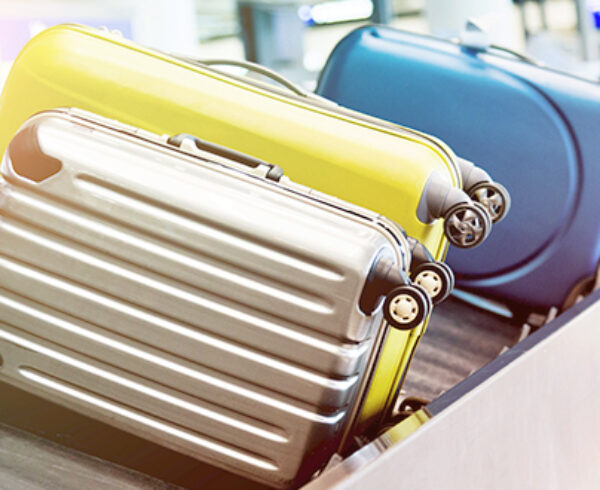
Credit Cards That Cover Baggage Delays
Baggage delays can derail your business trip; luckily, credit cards that cover baggage delays can alleviate some of the stress. When you’re traveling, there’s a whole host of things that can go wrong. Your flight Read more
Leave a Comment
Add to the conversation or ask a question: cancel reply.
This site uses Akismet to reduce spam. Learn how your comment data is processed .
Post Categories
- For Executives
- For Travel Managers
- For Travelers
- Press Release
Recent Posts

Travel by Train vs. Plane for Short Trips

Prioritize Traveler Mental Health and Wellbeing with Stress-Free Travel
Stay up to date.
The Choice Is Yours - Get the exact Business Travel information you want delivered directly to your inbox.
TravelConcierge News
TravelConcierge News (Japanese)
- Travel Risk Alerts
Waypoint Monthly News
JTB Event Updates
The latest from JTB Business Travel
- So, What Do Flight Attendants Do Anyway? They give a safety briefing and pass out some drinks, but their jobs are much more important than you might initially think. So, what do flight attendants do in the modern age of flying? As a frequent business Traveler, you may take flight attendants for granted and hardly notice them, even as they tryRead […]
- Travel by Train vs. Plane for Short Trips When it comes to choosing travel by train vs plane, there’s a lot to consider: speed, convenience, price—and, of course, sustainability. Depending on where you live in the world, your first instinct might be to take the train if the journey’s short enough. This is especially the case if you live in a region withRead […]
- What is Skiplagging? Think Twice Before You Skip! Plenty of travel hacks aim to help you travel further, for cheaper — but many come with downsides. So what is skiplagging, and is it worth the risk? Are you familiar with the travel influencer community on social media? If so, you’re likely well aware of just what lengths these individuals will go to, toRead […]
- Prioritize Traveler Mental Health and Wellbeing with Stress-Free Travel Ensure your Travelers are more productive on the road and willing to take that next business trip. Prioritize more positive and stress-free travel experiences. It’s no secret that much of the world is living in a stressful state as of late. According to an Ipsos report from late 2023, 62% of survey respondents said theirRead […]
- The In’s and Out’s of Carbon Accounting Take your sustainability efforts to the next level with carbon accounting. Here’s everything you need to know about getting started. More and more employers and employees alike have begun considering their impact on the planet both while at home and while traveling for work. If you’re among them, you may have come across a rangeRead […]
- Meet Peggy Regan: Advocating for Clients and Supporting Traveler Goals For this senior account manager, travel is simply in her DNA. Chicago-based Peggy Regan started working in the travel industry in the 1980s. Today, she’s one of the newest members of the JTB Business Travel team, joining us as a senior account manager in October 2022. Keep reading to learn more about how Peggy gotRead […]
- 5 Tips for Business Travel Expense Management Whether you’re a Traveler, Executive, or Travel Manager, travel expense management comes with its challenges. It’s no secret that the global economy hasn’t exactly been in spectacular condition over the last few years. According to a World Bank January 2024 press release, the end of 2024 will cap off the slowest half-decade of GDP growth inRead […]
- Credit Cards That Cover Baggage Delays Baggage delays can derail your business trip; luckily, credit cards that cover baggage delays can alleviate some of the stress. When you’re traveling, there’s a whole host of things that can go wrong. Your flight could be delayed, resulting in you missing a connecting flight. Public transit can break down, making it difficult for youRead […]
SAP Concur Partner | TMC Elite
Privacy Statement
GDPR and Privacy Statement Europe
GDPR Privacy Statement
CCPA Privacy Policy
Copyright 2022 JTB Business Travel. All Rights Reserved. CST#2031531-50
Site by Ruff Haus
JTB Business Travel Services:
• Home
• For Travelers
• For Travel Managers
• For Executives
• Contact Us
Stay Connected:
- Trip Disruption Assistance
- Travel Ready, Travel Safe
- Book Travel Anytime
- Before Your Trip
- During Your Trip
- After Your Trip
- Business Intelligence
- Duty of Care
- Traveler Care
- Account Management Services
- Cost Saving Programs
- Full Content
- Travel Technologies
- Cost Avoidance
- Virtual Payments
- Risk Mitigation
- Travel Management 2.0
- Our Expertise
- Spend Management
- Corporate Meetings & Events
- JTB AnswerCenter
- Business Travel InSight
- Traveler Training
- Video Library
- Waypoint Blog
- Go Like a Pro with National
- eSIM Phone Services
- eVisa Assistance
- Global Entry Locations
- Print My Invoice
- Travel Requirements Help
- Travel Reports
- Traveler WorldCue
- TSA PreCheck Map
- JTB Business Travel
- JTB Business Travel Brand Resources
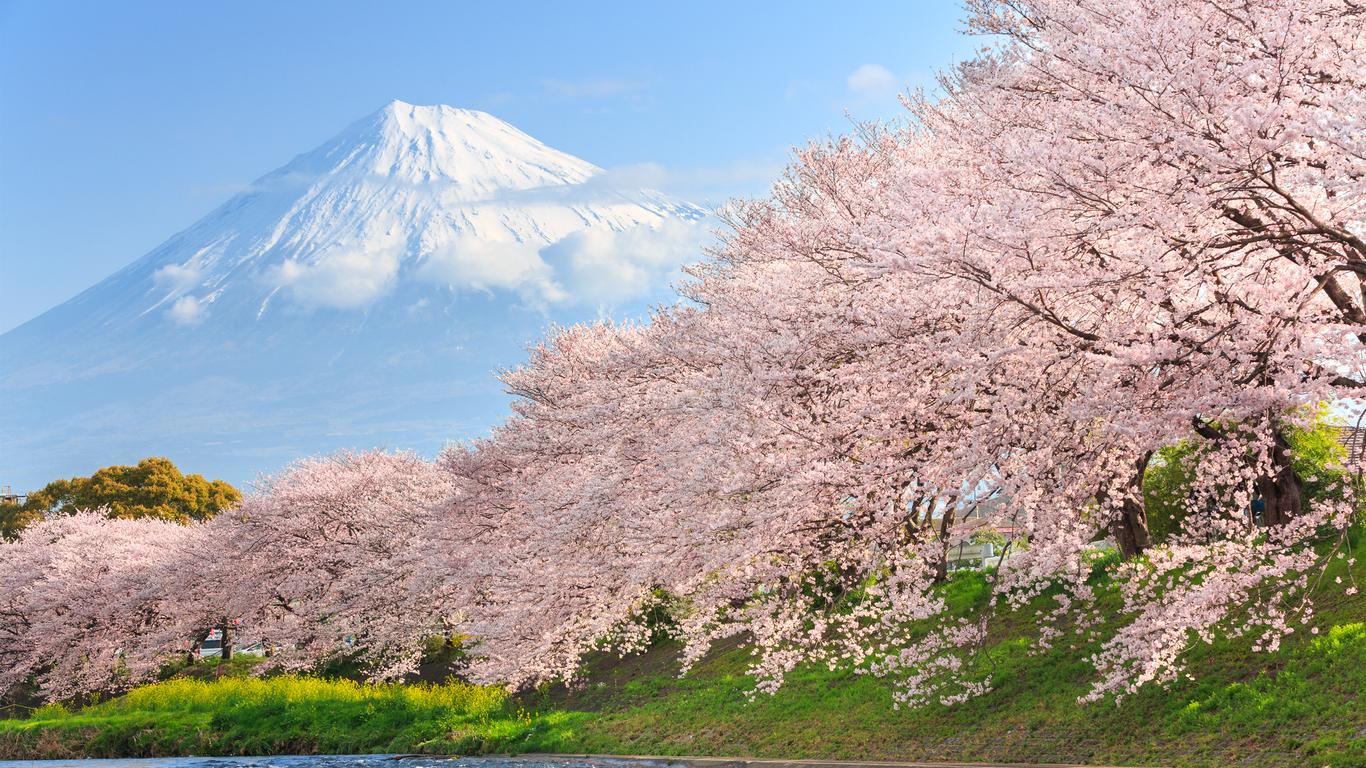
Find Business Class Flights to Japan
Latest business class flight deals to japan.
Cheapest round-trip prices found by our users on KAYAK in the last 72 hours
Good to Know - Business Class Flights to Japan
Faqs for japan business class flights, which airline has the best lounge for business class flights to japan.
If you are flying with Japan Airlines, you will be eligible for the Sakura Lounge, which is an exquisite facility with an executive waiting area and bathroom amenities. You will get treated with first-class Japanese cuisine, modern Japanese art, and complimentary drinks and snacks.
Which airline has the best flat beds for business class flights to Japan?
Get rest and good sleep on your flight by booking business class to Japan. Air Canada offers you comfort and style on your flight. The seats have amazing cushions and pillows; the comfort can be extended by changing the seats to flat beds. You can order drinks, meals, pillows, and bedding from a digital display.
Which airline has the best business class amenities for flights to Japan?
KLM Royal Dutch Airlines promises to be exemplary with your choice to fly with them to Japan. Business Class cabin experience by KLM will give you the following advantages: priority clearance, avoiding queues when boarding and alighting, world-class customer service experience, a fine dining experience, and isolated seating arrangements for your privacy.
What is the most popular airline offering Business Class flights to Japan?
Among KAYAK users, American Airlines is the most popular airline offering Business Class seats on flights to Japan.
Which airlines offer Business Class tickets on flights to Japan?
Traveling to Japan and want to offer yourself a Business Class experience? Depending on the origin, the following airlines offer seats in Business Class: American Airlines, United Airlines, British Airways and Air Canada.
How does KAYAK find such good deals on Business Class tickets to Japan?
KAYAK is a travel search engine. That means we look across the web to find the best prices we can for our users. With over 2 billion flight queries processed yearly, we are able to display a variety of prices and options on flights to Japan for economy class as well as Business Class travelers.
How much is a business class flight to Japan?
Business class tickets to Japan differ in price depending on the departure airport. On average, business class fares cost $3,290 for a return trip to Japan, while the cheapest price found on KAYAK in the last 2 weeks was $999.
What is the best airline for business class flights to Japan?
The highest-rated airline by KAYAK users offering business class flights to Japan is ANA, with an overall rating of 8.4.
Top tips for finding business class flights to Japan
- International flights to Japan will only be received in the five international airports that connect Japan to the world by air, the major one being Narita International Airport. The second one, which is also in Tokyo, is Haneda Airport.
- Are you flying to Japan for business or pleasure? We are convinced that you will find the whole trip enjoyable when you book a business class flight to Japan. Several advantages are offered by major airlines. For example, you can get extra baggage allowance with no hidden charges.
- For international flights to Narita International Airport Japan, you will be received through either Terminal 1 or 2. Booking business class will give you access to premium lounges.
- To get a below average price, try to book at least 1 week in advance of your departure date.
- The most expensive day to fly Business Class to Japan is Saturday, while the cheapest is Wednesday.
Top 5 airlines flying to Japan
An excellent experience. The aircraft, crew, services, and amenities were all top notch for an economy class ticket. It has been quite a while since I've had this level of service on an airline.
Everything about this airline I like! Will definitely choose Starlux over any other airlines out there when it is available!
My husband and I like this airlines , lt looks new ,clean & good service. Then we will fly with STARLUX again. And I love their time , it is perfect for my family. See you soon.
Great experience! Food, staff, Entertainment Center, leg room was great!
Very new plane with premium economy seats reclining to 45 degrees, more than most other competitors. Staff service was excellent and friendly.
The plane is very clean. The selection of movies is excellent!
Starlux has now won me over from all other airline for Asia. They are friendly and very serviced focus with us passengers.
Great ! The services of crew members were excellent. The pilot did landing smoothly.
First time on Starlux. I was impressed. Very eager to assist flight crew
Premium Economy on Starlux- a worthwhile way to cross the Pacific. This is a great premium economy experience. The seats are comfortable, wide and provide decent foot rests. The seatback TV is large, high resolution and plenty of content. Bluetooth connection for your headset and control from your phone is available. Food was decent and in line with the cabin class. The seat could be improved by providing more lower leg support especially for taller guests (6ft myself). Cabin crew will be moving up and down the aisle a lot since the galley is in front.
The flight crews were extremely professional, helpful, and courteous. Departure and arrival times were accurate. No delay. I will use K airline again. Thanks
We were seated at the back and that was very uncomfortable for me with the turbulence we experienced on our way to Chicago.
I enjoyed flying on Korean Air. The service was great and the food was yummy, especially the bibimbap and cold spicy noodles. The only thing that bummed me out on this red-eye flight was that my seat did not properly recline so I was not able to sleep.
Crew was ok, but some passengers were a bit rude. Again, all outlets were not working, only the really slow charging usb plug on the entertainment system. Entertainment system was also bugged, some features just crash, the touch screen wasn't working and when trying to watch a movie the onscreen display kept flashing off and on making it very difficult to watch.
Great crew, decent food Charging plugs were broken on both seats next to me. Only the USB port was available, and that charges, very, very slowly. Seat was also broken, it would not lock into position when reclining.
Korean Air had great service and the Bibimbap dish was the best airplane food I’ve ever had. It was a long flight so in between the two meals they served customers could get Shin ramen. The flight attendants let my children use a pair of nice headphones for the flight and had earbuds and slippers for all the adults. The flight was long but the time passed by relatively quickly because they have many great shows in their entertainment TV. I watched the BTS Love Yourself and Speak Yourself concerts 💜
not too bad but not too great either. Service on all airlines declined ever since covid. Your Delta Stewardess are not that friendly at all. :-(
You did not put me on a Korean Air flight! so I do not have nothing to say
My flight was diverted to Atlanta and I was not given enough time. I paid my travel on April 23, 2023. It was originally Delta from Norfolk to NY, then Korean Air from NY all the way Philippines which is my final stop. Instead from Atlanta to Korea I flew Delta which is okay. Then Korea to Philippines, I flew Asiana Airlines. What I did not like, Ieagle did not sent me an email that my flight was change and so when I went to check in Wednesday the 10th, at 4:30 a.m they told me my flight was delayed at 6;00 p.m and diverted in Atlanta and I am flying Asiana from Korea to Philippines. I do not appreciate that Kayak or Ieagle chenge our flights 5 times and then last minute change again during my day of flight. I hope that you will not make any changes of my flight o Feb 15th because it has to be the same flight with my husband. That is the reason why we made the arrangements early on.
Wonderful cabin crew!!!!! Food was poor, in flight entertainment was just ok. They need to serve more water on a 15 hour flight--we were dehydrated and kept asking for water.
The space for the seats i like it. Its not too close like other air line. The food is ok and also the staff. I'm waiting for my flight rewards point because until now i didn't recieved it.
The staff, ground and air, at ANA was very helpful and friendly during check in, boarding and during the flight. This is the reason why I always fly ANA whenever I go to Manila. The food was not the best but the flight crew more than makes up for the shortfall.
First I will say this was really NOT an ANA flight. ANA used a UNITED jet to perform this flight. I specifically booked with ANA because I did NOT WANT TO FLY UNITED FOR INTERNATIONAL FLIGHTS. So to spend $1800.00 and then discover after booking that it was going to be handled by United was very disappointing. I will be more careful next time when I book. The interior was very cramped in economy class; the dinner meal was terrible and also had extremely small portions for an international flight - the bread roll was ice cold and stale - that salad was very wilted; I’ve never had a “snack” that was so salty that it was difficult to eat; the breakfast “waffle” was practically unrecognizable. Really horrible meals for a very expensive international flight. Bathroom floor was also pretty dirty. I’m hoping my return flight is a real ANA airplane that is cleaned and serviced by ANA personnel with ANA meals. I will never book with ANA again if they continue to use UNITED airline jets. Yuck!!!🤢
Ticket was purchased as a United Airlines flight (operated by All Nippon) like what does that even mean? Makes for a VERY confusing flight experience. For instance, what do I look for a United drop off signage and ticket counter or ANA? No explanation anywhere to be found. I also felt a little bit scammed by the obsurdely restrictive seat selection provided. Only middle seats available!! Are you kidding me!! On 6hr + 10hr flights you're forcing me into the middle seat without telling me before I purchased the ticket?? This should be illegal. And to top it off, on the Tokyo LA leg there were quite a few empty seats including window seats! I must also say, the food was a dissappointing as well for my taste, fish with rice ( mostly plain white rice) or a vegetable medly for the breakfast meal? Should be at least 4 choices and at least 1 with eggs. Outside of these issues flight was otherwise ok.
Ground and flight crew were all courteous, extremely helpful and professional. Overall, process is really organized, from boarding to disembarkation.
This is a very long flight and the first time I have flown on a Japanese airline. I was very impressed with the staff. They worked hard and offered food and drink regularly. Plane was very well cared for. The let room was good . Food was ok but better than other airlines.
It was very nice. I was a bit disappointed by the few meal services. There were probably more drink services that I missed while sleeping, but I would have liked the crew to bring more than one drink service before landing and to bring more than one drink service and coffee service after take off
The space and bed was very comfortable , flight attendants very nice. The food was not tasty at all. I ordered the rib eye and it was so tough I couldn’t cut it.
Seat was roomy enough . The Asian selection for a meal was good . The tortellini was not very good. Service was excellent. O
It was very good. Lots of room with superior food and service. I will not hesitate to fly ANA in the future!
Plane and service were great. The entertainment is only for Koreans. Wish there were vegetarian options for food. All in all pleasantly surprised. Economy premium was quite good.
This form doesn’t work. Can’t type in, had to copy-paste. The crew constantly telling everyone about minor things is unnecessary. Did you put the belt on, push your bag more under the seat… The seat space was good for tall people, the food was decent for airplane.
Roomy seats for the given price! I couldn’t ask more!
Great airline, but there was no English entertainment (movies or shows)
Check-in was an absolute disaster, taking more than an hour and half because they offered no online check-in and Kiosks were not available to use. In-flight entertainment was exclusively Korean media with a selection of only 5 or 6 movies to choose from. Korean television shows were also available. The food was lackluster. My chicken and tomatoes had 3 small pieces of chicken next to a mountain of soggy wedge potato fries. The seats were more comfortable than other airlines I’ve flown with and the staff aboard was extremely pleasant and helpful.
One of our luggage items was damaged during our flight to Newark from Incheon. Although our email communication was not responded to, when discussing the matter with the staff at the Newark checkin before our return flight to Incheon, we were provided with a free replacement luggage item. This customer service was, overall, very satisfactory.
I would have enjoyed some hot tea, preferably green tea, but they only serve hot coffee.
10 Hours delay on departure of the return flight and in-flight Wi-Fi was not available entire flying time all that caused monetary loss to my business.
Some favorite food ran out of service and I have to eat what was left available. Also I had to drink cold red wind! Why could not have been kept in room temperature?
It was a good flight, with great crew and service. I will definitely fly with them again. Excellent experience and very friendly. Excellent value.
The food was not that good. I liked the miso, green tea, and ice cream. I wasn’t able to put my carry on bag under the seat in front of me. The flight was smooth. Please expand your choices of movies especially the new ones. I can’t choose any of those films. They’re old.
I like the braised beef., miso soup,, and green tea. Very little choices of hollywood movies. The PA announcement in English was not very clear and very soft. I could hardly hear.
More updated movies & Chinese movies. The food sometimes overcooked. Prefer to have more neat snacks in between than just choose from the menu. Please change the menu every now and then. This is my second time flying within one year and the menu didn’t change at all!
Food is lagging. Very poor choice. Like vending machine fast food.
Please change the menu more often. The beef is not tender, more choice in ice cream flavor. Dessert is not good too.
The Experience was fantastic, it's a quick flight so no entertainment or food. Just a refreshment
Again I paid for an upgrade on my credit card didn’t get it need a refund. . American I not good at gettin in contact for refunds.
l enjoyed the variety of good and drink choices. The flight attendants were very quick and efficient to our needs.
-Bathrooms were regularly checked/maintained. -Food was okay, but the miso soup was good. -Top of my foot got bitten by a bug when I took off my shoes and was only wearing my socks. It was swollen and very itchy for several days.
Truly impressive service in the air. After the main meal, they have a delicious a la carte menu that you can order anytime until 1.5 hrs prior to landing. Flight crew were so pleasant and very efficient. Wish I could fly JAL more often!
Book business class Japan plane tickets
Recent round-trip business class deals, search by stops, search by airline, search by price, recent one-way business class deals, flights to japan, return flight deals:.
Japan - United States
Cabin classes:
Browse origins:.
- Flights »
- United States
Browse destinations:
- Worldwide »
- Business Class

TRAVEL to JAPAN – Tips and Information Guide (2024)
Everything you need to know about travel to Japan in our brand new Japan travel guide.
Japan is an island nation with a tremendous amount of history and culture intertwined with is present fast-paced reputation.
From the epic wilderness of Hokkaido down to the tropical beaches of Okinawa, travelling to Japan is an experience like no other.
Whether you’re into food, culture, history or the outdoors Japan has it all. Travel to Japan is on the rise and it’s easy to see why.
Of Japan’s four main islands Honshu gets the vast majority of visitors. Travellers are in constant awe of the spectrum of Kyoto’s temples, taken captive with Nara’s deer and consumed by eating everything in sight in Tokyo.
However, the islands of Hokkaido, Kyushu and Shikoku are also home to some of the country’s most stunning scenery and are definitely worth a visit.
Whatever you want, you can find it in Japan. Let us help you plan your journey to one of the most awe-inspiring destinations on the planet!
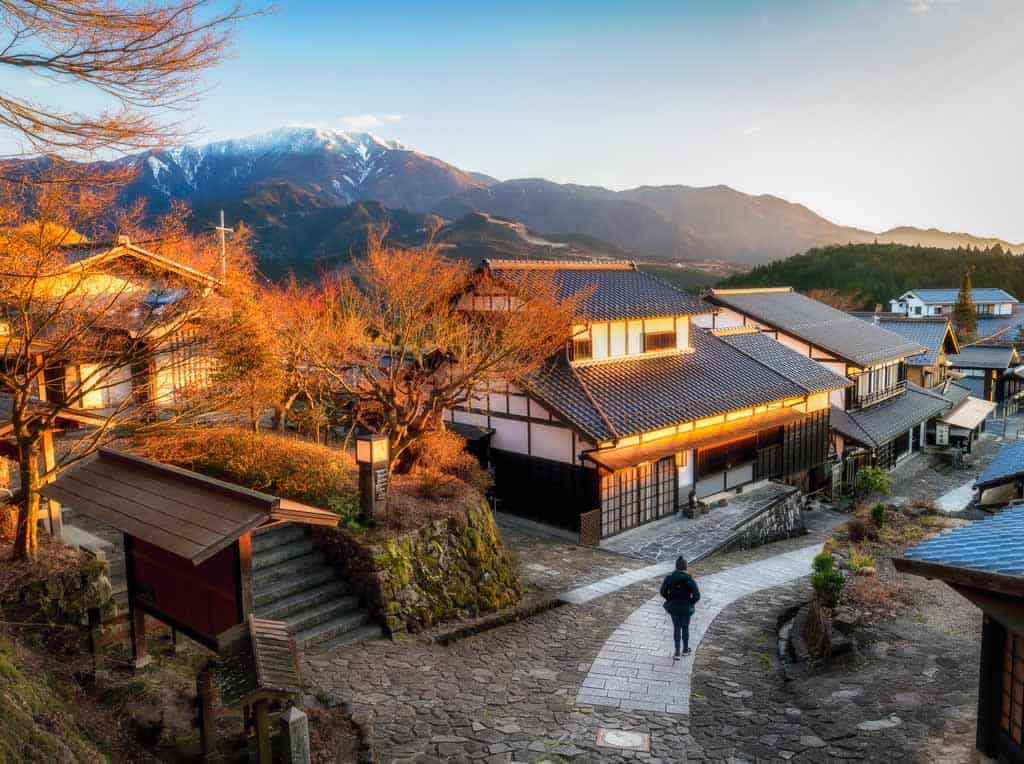
The Perfect 3 Days in Tokyo Itinerary
The best day trips from every city in japan [2024], 18 amazing things to do in kyoto at night (2024 guide), travelling in japan: at a glance.
Here are the basics about travel to Japan.
OTHER MAIN CITIES:
Osaka , Kyoto , Nagasaki, Fukuoka , Sapporo and Nagoya
Yen (See current exchange rates ) (1$USD is approximately 108 yen) 1 beer is approximately 500 yen (USD$5)
ENTRY / VISA:
Visa requirements for Japan are very straightforward. Most travellers are visa-free and can stay for 15, 30 or 90 days depending on their nationality. For information about which countries are granted visa-free access click here.
Japanese is the official language in Japan. And while most of the world speaks a fair amount of English, do not expect Japanese people to speak it. However, in some hostels and hotels, English is spoken. Before travelling to Japan be sure to learn a few key phrases to help you enjoy your travels more and, of course, to show respect for the Japanse way of life. Many signs are in both Japanese and English and announcements at subway and train stations are often in both languages.
Japan is one of the safest countries in the world for both men and women. Petty theft and violent crime are extremely rare. Stories of people leaving wallets, passports and bags on trains and being reunited with them are the norm. However, you should still be sensible and follow the usual travel precautions.
ELECTRICITY:
100 volts / Type A and B electric sockets (Be sure to get your universal travel adapter before you leave)
TRANSPORTATION:
By far the most common way to get between cities in Japan is by using the JR Pass. Within the larger cities, you can very often make your way around using public transportation. Traditional taxis are also available in most cities and suburban regions. And rideshares such as Uber are on the rise as well – though don’t count on one of these outside of the main Japanese metropolises.
Don’t Forget to Pack the Most Important Thing: Travel Insurance !
TOP 5 TRAVEL EXPERIENCES IN Japan
With so much to see and do in Vietnam, it really is hard to pick the top experiences.
However, we think that to truly appreciate Vietnam you need to plan to do these 5 activities during your visit.
Gorge yourself on sushi.
Japan is known for sushi. You can find it everywhere. For added enjoyment, try your hand at making it!
Book a sushi cooking class here .
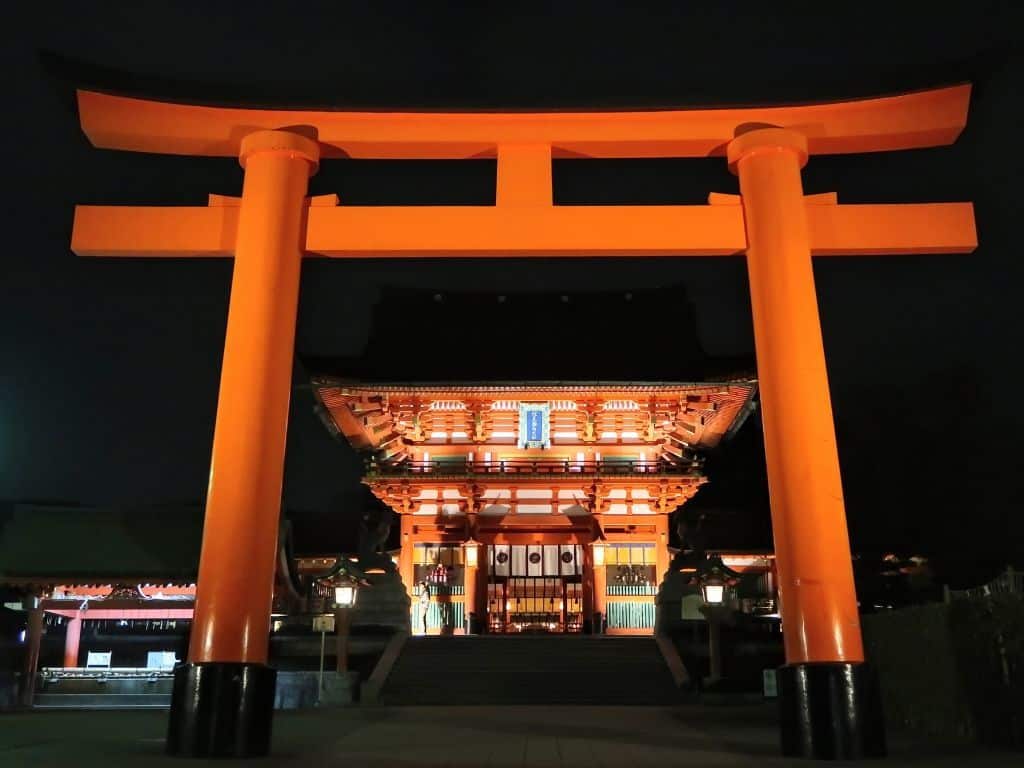
Visit ancient temples in Kyoto
Kyoto is the magical, ancient city of Japan known for being the spiritual centre of the country. Immerse yourself in the beauty and stillness of its many temples.
Check out our 3 days in Kyoto itinerary here.
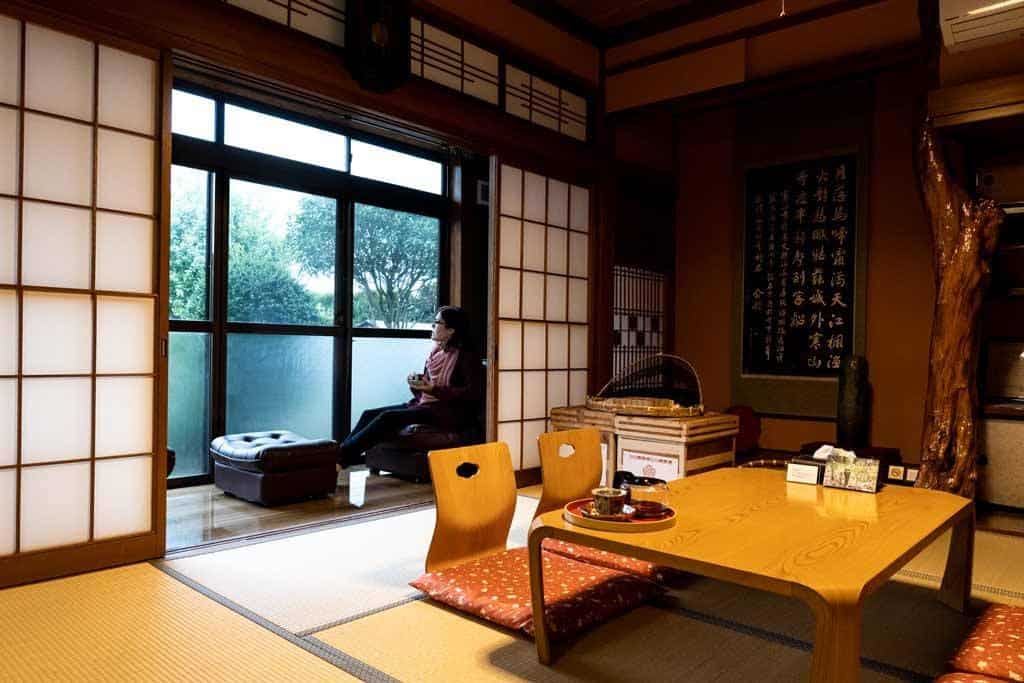
Spend the night in a Ryokan
Staying in a ryokan is the most authentic way to experience Japan. Splurge on the experience and find yourself turning Japanese after a refreshing stay!
You can stay in a great ryokan in Murakami .
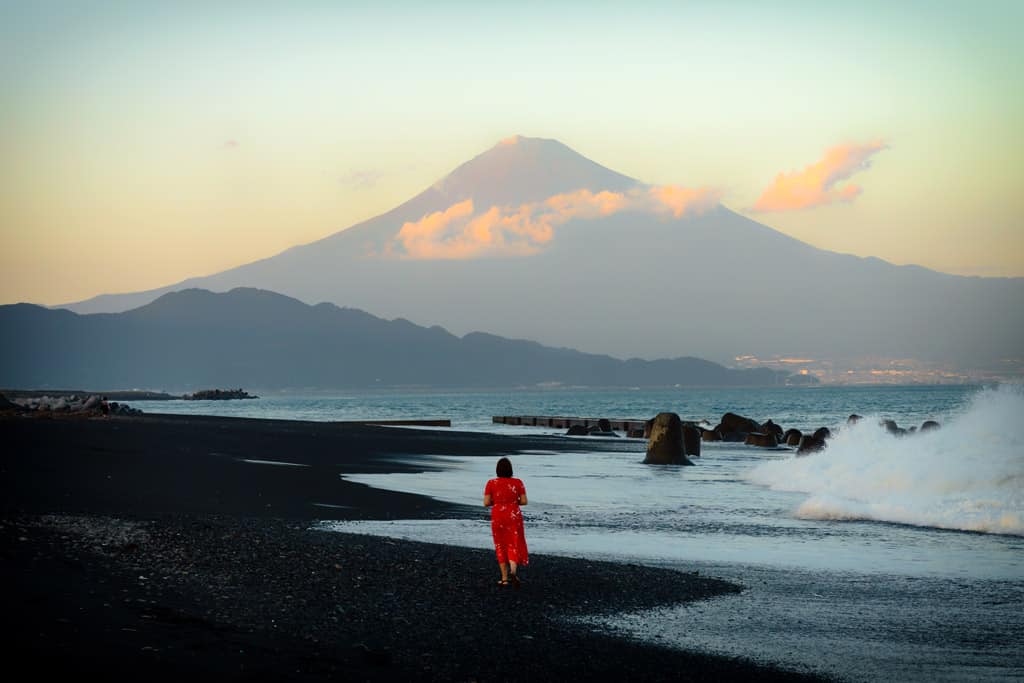
Climb/View Mt. Fuji
One of the most picturesque volcanic mountains in the world is accessible to climb, or simply view, throughout much of the year.
This is the best Mt. Fuji day trip you can find anywhere
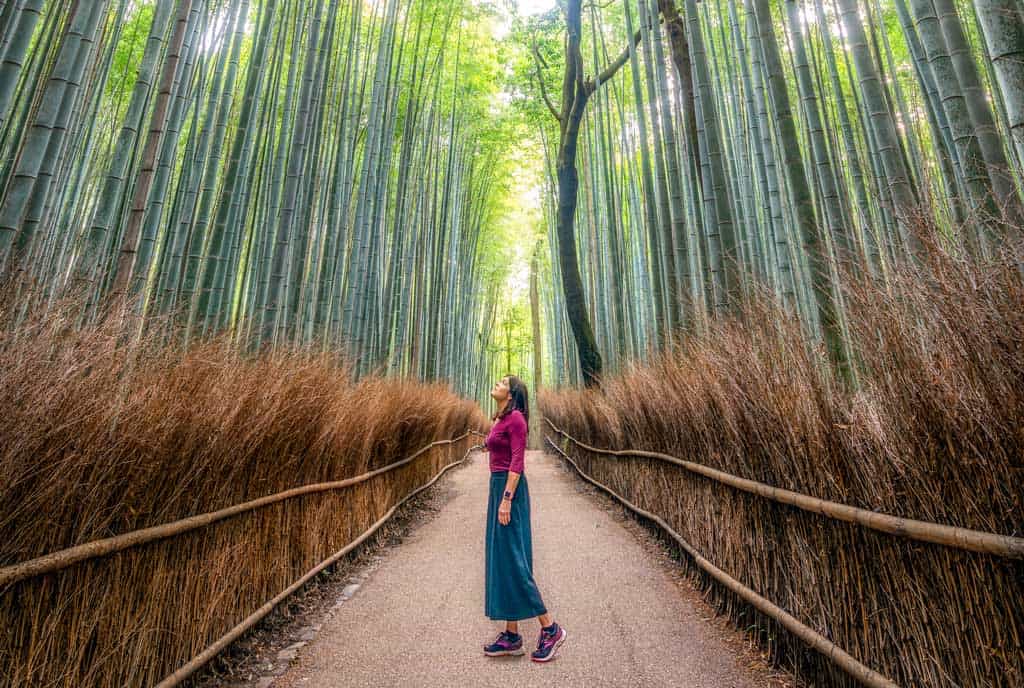
Get lost in a giant bamboo forest
Bamboo that stretches to the sky can be found in Kyoto. Be mesmerized by the sound of the swaying forest.
Other Things to do in Japan
Party with robots in Tokyo: The 90-minute show is one of the most unique and bizarre must-do activities in Tokyo. It may take you a few minutes to figure out what you’re watching (don’t miss that video of it). But you’ll definitely be glad you went!
Watch a sumo wrestling match . Sure, sushi can be found on every street corner. But eating it at every meal won’t give you a chance against world-famous sumo wrestlers. Catch a match and be a part of a long and sacred activity.
Cross the world’s busiest pedestrian intersection . Shibuya Crossing in Tokyo will blow your mind with the number of people moving at any given time when the traffic stops to let pedestrians cross. Head to the QFRONT building to watch 2,500 people cross the streets below.
Hang out with deer in Nara . The normally shy creatures are anything but shy as they can be found in abundance in Nara Park . Whether you want to interact with them, or simply view them in nature, the experience is worthwhile!
Spend the night in a capsule hotel . Japan is known for tiny packaging. A Capsule hotel is just as it sounds: a tiny box-like structure intended for one person to spend the night. Warning, this is not for the claustrophobic!
Relax in an onsen . Onsens are hot springs that can be found in natural and man-made settings. You haven’t relaxed until you’ve spent a few hours in an Onsen. Just know sometimes the dress code is your birthday suit! Check out this one in Hokkaido . Just be careful if you have tattoos, because many onsens don’t allow them.
Go diving in Okinawa . While the northern Japanese islands have a tendency to be cold, Okinawa is located in a more tropical climate and lends itself to spectacular diving. You’ll love the underwater world of these islands!
Go Kart dressed as your favourite cartoon character . If you’ve ever played Mario Kart and wondered where in the world you could go and ride around a go-kart dressed up like Mario, Yoshi, Princess Peach or your other favourite characters, this is it.
Watch the cherry trees blossom . Japan has cornered the market in cherry tree blossoms. This is so much so that every year thousands of people participate in cherry blossom festivals as the trees unload their dazzling colour across the country. If you visit Japan in spring be sure not to miss out! This particular tour is incredible as a day trip from Tokyo .
Hike with monkeys . If you enjoy hiking AND monkeys then the 30-minute hike outside of Kyoto is for you! But if you just prefer to hike and don’t want anything to do with monkeys, there are plenty of other great trails to hike in Japan!
BE SURE TO CHECK OUT THESE OTHER AMAZING THINGS TO DO IN JAPAN
READ MORE...
The Ultimate Travel Guide to Chino in Nagano, Japan
The ultimate travel guide to nakatsugawa, japan (2024), the ultimate travel guide to oita, japan (2024 edition), the ultimate sado island japan travel guide [2024], ryokan ochiairo review – is this japan’s best ryokan, best places to visit in japan.
There are plenty of amazing places to visit in Japan. Depending on your interests, trip duration and time of year you will find plenty of things to do during any length of stay.
There’s a reason Tokyo is considered one of the most incredible, vibrant, unique and fascinating cities on the planet! Where ancient meets modern, history rubs shoulder with the future and the world’s best cuisine is out in full force.
Japan’s capital and a city full of awesome things to do !
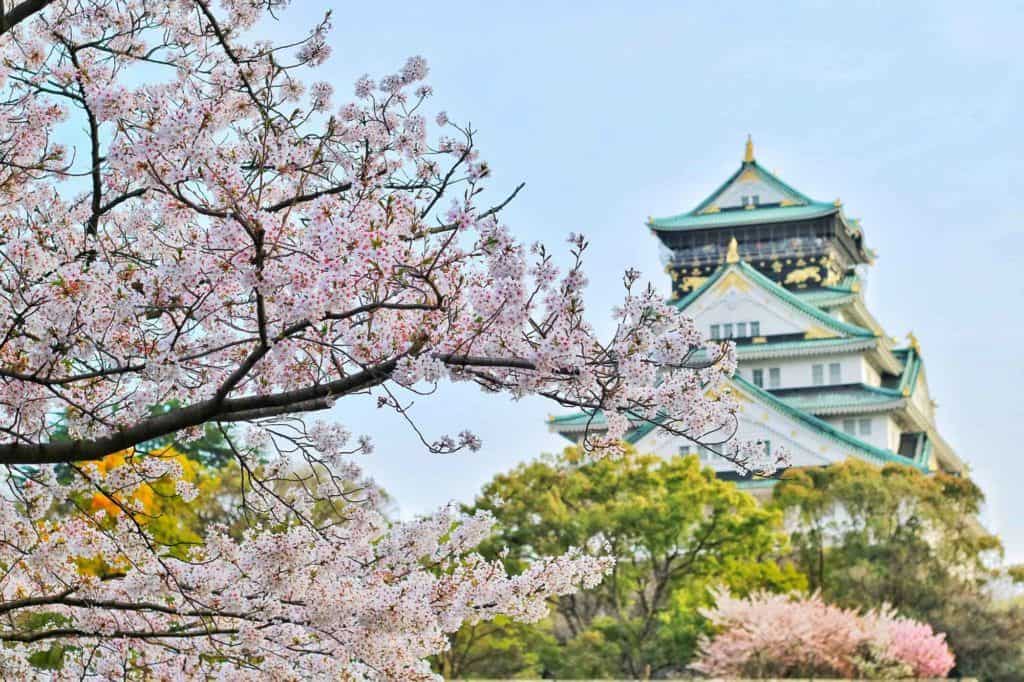
A city where ultra-modern meets ancient and you can do just about anything you can imagine.
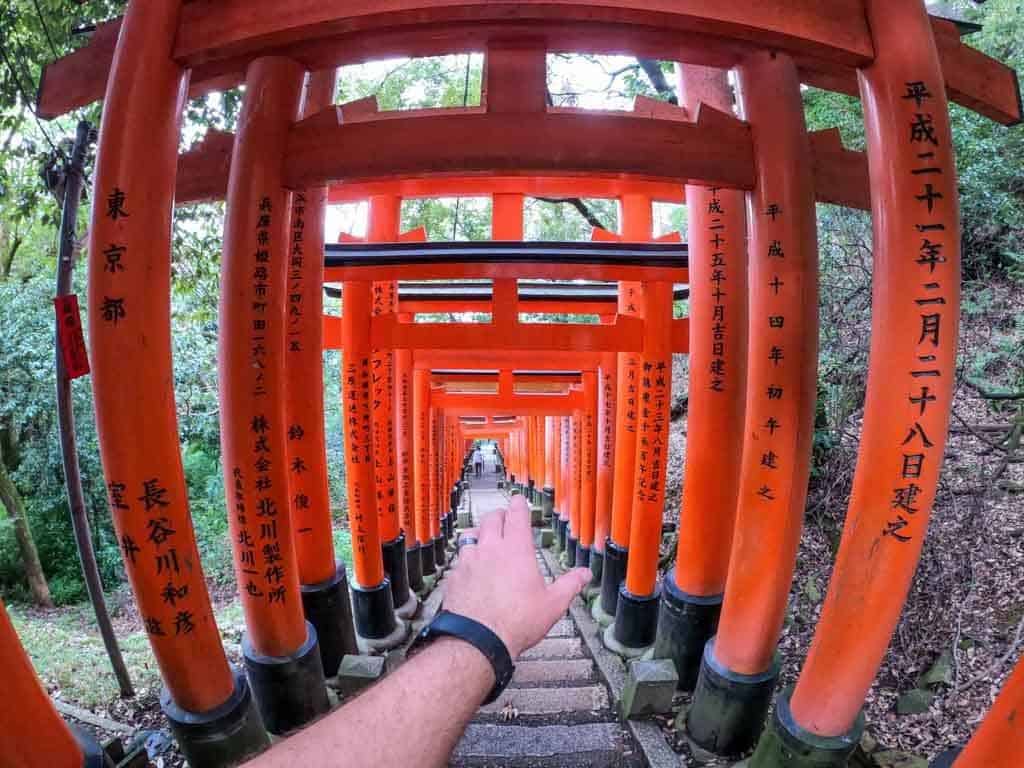
A magical place to explore Japan’s rich culture and history .
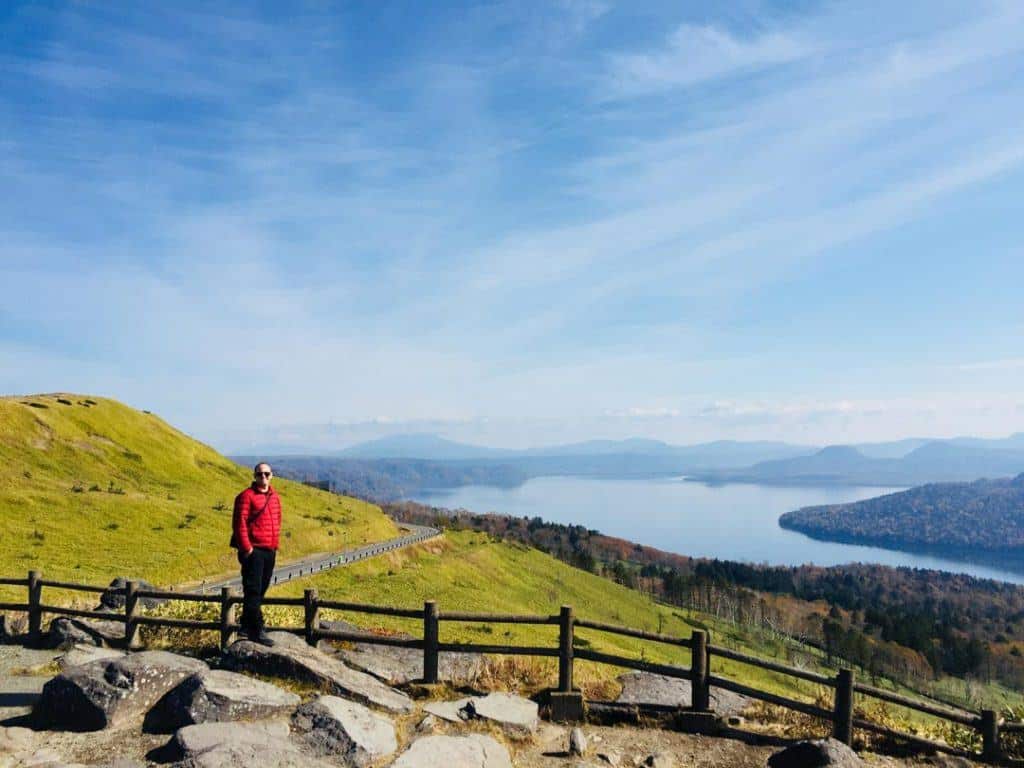
Get away from the cities and explore the gorgeous island of Hokkaido !
For more information on specific things to do in the top places to visit in Japan, reference our following city travel guides:
- 3 Day Tokyo Itinerary
- Day Trips from Tokyo
- 3 Day Kyoto Itinerary
- Day Trips From Kyoto
- 3 Day Osaka Itinerary
- Day Trips From Osaka
- 3 Day Yokohama Itinerary
- Day Trips from Yokohama
- Hokkaido itinerary
- Hokkaido activities
BE SURE TO CHECK OUT THESE OTHER AWESOME PLACES TO VISIT IN JAPAN .
BEST JAPAN TRAVEL ITINERARY
Depending on whether you are starting from scratch or have a general idea of what kind of things you would like to see and do, we’ve put together a few itineraries that are sure to leave you wanting for nothing at the end of your visit.
There are so many amazing things to do in Japan that planning an itinerary for your travel can be a little overwhelming.
In this section, we’ll not only help you plan a 1-, 2-, or 3-week Japan itinerary but also give you an overview of many of the places you might want to consider visiting and things you may want to do.
Of course, no one-size-fits-all plan will suffice. But if we were to head back to Japan these are the top places and things that we would want to do!
KEEP AN EYE OUT FOR AWESOME DAY TRIPS FROM EVERY MAJOR JAPANESE CITY
3-Week Japan Travel Itinerary Highlights
Even with a country that seems as small as Japan, three weeks is hardly enough time to get started in seeing it all!
However, with three weeks you can have a really nice time both spending more time in places many people only glance by as well as visiting some places that most people don’t see when they visit Japan.
Here’s an overview of how we’d spend 3 weeks in Japan.
2-Week Japan Travel Itinerary Highlights
With two weeks to travel to Japan, you are going to have to cut out some of the nicer places you could see with an extra week or two.
But the good news is you are still going to see and do a lot while you are here!
This is an idea of how we’d spend 2 weeks in Japan.

1-Week Japan Travel Itinerary Highlights
If you only have 1 week to visit Japan, don’t worry it is definitely worth your time. Of course, you’re going to have to pick and choose where you go and what you do much differently than if you had more time.
And you likely won’t want to spend all of your time travelling from one island to the next.
So if we had just 1 week in Japan, this is how we’d spend it.
JAPAN TRAVEL PLANNING
You’re well on your way to becoming an expert when it comes to travel to Japan! Now we’ll fill you in on the rest.
Best Time to Visit Japan
There really is no best or worst time to visit Japan. The timing of your trip all depends on what you want to see and do and how willing you are to share your Japan travel experience with other travellers.
Across the country sakura (cherry blossom) season in Spring is one of the most popular times to visit. But it happens at different times across the country due to the differences in climate from north to south along the island chain.
Another less popular, but no less stunning, time to visit is Autumn as the leaves begin to change colour.
Whilst this doesn’t quite bring in the crowds like sakura season does, the sheer array of colours on display is absolutely stunning, particularly on Japan’s most northerly island, Hokkaido.
Summer brings sweltering temperatures and typhoons in the south. However, Japan is extremely well prepared for such events. As such is still possible to travel to Japan during this of year.
Winter brings some of the world’s best skiing on Hokkaido as snow makes some roads and hiking trails impassable. However, this is also the best time to see the famous ice flows close to the Shiretoko National Park.
And, of course, it’s a great time to shred some powder if you’re looking for some world-class slopes!
Japan Travel Budget Guideline
Japan has an unfair reputation for being incredibly expensive. And whilst you could easily empty your bank account in a short time, it is possible to travel in Japan for less money than you think.
Budgeting Tips
To make your money go further here are a few tips:
1. Purchase the rail pass you need. There are a huge number of different types of rail passes available in Japan. This is your one-stop-shop for a variety of rail passes.
2. Take advantage of low-cost internal flights. You can fly affordably between most major cities.
3. Utilise convenience stores for finding cheap and delicious eats.
4. Japan has an extensive and reliable night bus service. Use it to save on travel and hotel fees.
5. Limit your alcohol intake, it’s surprisingly expensive. 1 beer = 500-600 yen (USD$5-$6).
6. Check the subway passes available in the city in which you’re staying and purchase the rail pass you need.
CHECK OUT OUR JAPAN BUDGETING GUIDE TO HELP MAKE YOUR MONEY GO FURTHER.
But there are a few things you should know about the different budgets at which you can choose to travel.
Note: Budgets shown as Single Traveller / Couples per day.
Budget Traveller ($50-60 Single / $80-110 Couples)
Hostels are the best options for single budget travellers. However, if travelling as a couple it’s often cheaper to get a private room.
There are plenty of awesome free things to do all over Japan. You will need to think outside the box and do your research but it is very possible to travel in Japan on a budget like this.
Your meals will likely come from low-cost restaurants and corner stores. And you’re likely going to spend a fair amount of time walking and taking public transportation.
Mid-Range Traveller ($60-100 Single / $120-180 Couple)
Whilst you may not get much of an upgrade on the accommodation front, travelling in this budget range will put you in the position to possibly rent a car to explore parts of Japan that are more difficult to reach.
In addition, you may be able to spend more time eating in some funky izakayas and sushi restaurants and participate in a few formal tours.
Luxury Traveller ($250+ Single / $400+ Couple)
Luxury hotels and fancy restaurants are the order of the day here. If money is no object then travelling in Japan can extremely luxurious!
For instance, you can stay in beautiful ryokans instead of hostels or hotels. And you can order a variety of different meals to enjoy while dining at some of the finer restaurants.
Of course, you’ll also be able to do more by way of renting a car and/or joining up on a variety of different tour groups to keep your itinerary completely packed.
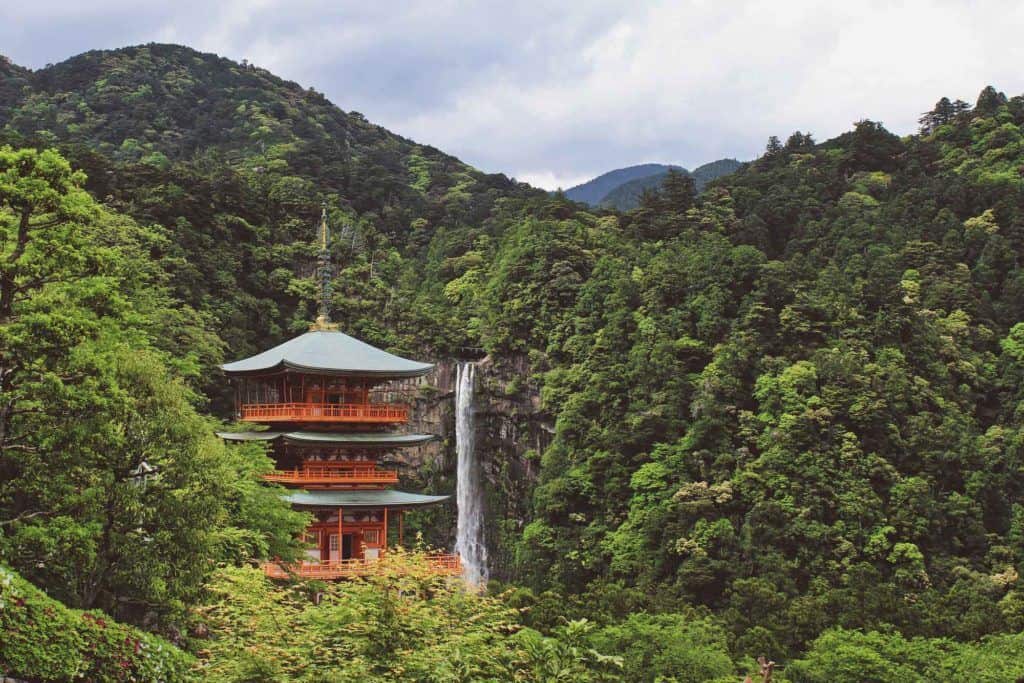
Getting To and Around Japan
Japan is an island nation, thus travelling to Japan is limited to only air or water transportation.
The majority of International Flights will take you to Tokyo’s Narita or Haneda Airport’s or Osaka International Airport. From there you will connect, as necessary, to other Japanese destinations.
Entry Requirements
Visa requirements for Japan are very straightforward.
Most travellers are visa-free and can stay for 15, 30 or 90 days depending on their nationality. For information about which countries are granted visa-free access click here.
Getting Around Japan
Travelling in Japan is both easy and convenient.
The public transport network is wide-ranging and extremely reliable. And compared to many places in the world, it can also be quite affordable.
Additionally, hiring a car is both easy and safe.
Travelling by Air
Japan has an excellent domestic air travel network. There are two passes run by JAL and ANA that will allow you to take domestic flights for around $100.
The price can sometimes vary depending on where your origin and destinations.
If you plan this effectively with other transport options available it has the potential to make your visit to Japan even more convenient and affordable.
Travelling by Car
Although the country is fairly well connected with both public and private transportation options, hiring a car is an excellent option for travelling in Japan.
The best part is that it is not as difficult as you may imagine.
Driving in Japan is safe and easy. For Hokkaido, Kyushu and Shikoku, a car is the best way to see most of each island’s most beautiful sights outside of the city centres.
Travelling by Bus
There are a number of bus companies operating in Japan. The biggest of these is Willer Bus Service.
Not only are fares convenient and affordable, but they can also help you consolidate expenses if you travel at night.
Combining overnight bus travel with a JR pass can save you a fortune as the difference in price between regional, 1 week national and 2-week national passes are huge.
Travelling by Boat/Ferry
Often the only way to access some of Japans smaller islands, particularly in the Seto Inland Sea, is by boat or ferry. Japan boasts an excellent maritime transport network.
Generally, ferries are affordable and in some cases, they are covered by a JR pass (the ferry to Miyajima being the most well-known example).
Naturally, the costs increase if you ferry a car or if you are taking a long-distance ferry.
Travelling by Train
Japan’s train network is simply incredible as it can take you from the north of Hokkaido to the south of Kyushu.
But it can also be confusing as, like with a lot of things in Japan, there is a myriad of different options available to you.
PURCHASE YOUR JR PASS TODAY
How to Maximise a JR Pass
Because your travel to Japan will very likely involve transportation on a JR line at some point, we’ve put together a few tips to help you plan your JR Pass use accordingly.
- Download Hyperdia – This amazing app allows to research train times and more importantly prices. Currently, it is free to use for 3 months (after that you will need to pay). You can work out which JR pass is the best financial option. Do note that the seat fare (sometimes two-thirds of the cost) is not optional, you will need to pay it.
- You don’t need a rail pass for your entire time. Some people may be visiting Japan for 2 weeks and will buy a 2 week nationwide JR pass. You are likely not going to be using the train every day and it’s likely you will pay more than you need to.
- Activate your JR pass at the right time. To activate you pass you will need to go to the station and inform them of when you want to activate it. Make sure you activate it when you really need it so you can get the most out of it.
- Check out the regional passes. There are numerous regional passes available that are much cheaper, but they cover a smaller area and don’t last as long. However, they can be a fantastic option. Combining such passes with night bus services can save you plenty of money.
Apps and Technology
Japan is definitely well connected when it comes to technology.
When you visit Japan you are likely going to want to remain connected to the outside world as well as take advantage of mobile apps that make travelling through Japan a little easier.
Here are a few we think you should definitely acquaint yourself with prior to your travels:
- Hyperdia – Hyperdia is the premiere app for helping you to understand the transportation system in Japan. Find the right rail line, station and even schedules to help navigate what could otherwise be a complicated transportation system.
- XE Currency – Transfer, monitor and calculate currency as the need arises. This app may not be totally necessary as you are typically tied into rates the banks charge for services. But it is handy to have around.
- Express VPN – This will protect your sensitive information wherever you travel – not just in Japan. Be sure to have this to keep your online information secure as you travel.
- GuruNavi – This app will help you to find food options in whatever prefecture you happen to be at the moment. You can search through different types of cuisine as well as to filter your selections for things like English-speaking staff and WiFi availability.
- Google Translate – Even if you don’t know more than a handful of Japanese words, iTranslate will help you communicate as you travel in Japan.
Best Things to Eat in Japan
Japanese cuisine is justifiably one of the worlds popular. It focuses heavily on high-quality ingredients and as a result portion sizes are smaller than you may expect.
Although fried dishes are common in Japanese cuisine, Japan has the lowest rate of childhood and adult obesity amongst the OECD nations.
This is down to a mixture of smaller portions and a culture that promotes restraint and health.
Yakiniku: Japanese BBQ. These restaurants can be found all over Japan, and it is very rare that they are anything other than delicious. Many offer time based all you can eat/drink deals. Look out for the characters 放题 as they usually don’t advertise this in any language other than Japanese.
Katsu Curry: Fried chicken or pork cutlets smothered in Japanese curry. Heaven on a plate.
Kushikatsu: All manner of meat and veg skewered and deep-fried.
Sushi and Sashimi: This can go from cheap to eye-watering expensive. Conveyor belt sushi restaurants offer the cheapest prices. Be brave and try delicacies like sea urchin, horse or chicken sashimi.
Sukiyaki: Meat and vegetables cooked in a hot pot with a small amount of water and soy sauce.
Ramen: The nations most popular noodle dish, often an excellent budget option.
Gyoza: Pan-fried dumplings, often filled with pork.
There is certainly much more available than this, but hopefully this gives you a quick overview.
Convenience Stores: For budget eating options convenience stores like lawsons, family mart and 7-11 are often an excellent option for a cheap and hearty meal!
Izakaya : No mention of eating in Japan would be complete without mentioning Japan’s most famous eating places; the Izakaya (居酒屋).
An izakaya is a Japanese pub that is generally a place where friends, colleagues and family members will go to eat, drink and chat.
The huge menus consist of small plates that are shared amongst the group. Expect to find sashimi, yakitori, cold dishes, salads, fried dishes and desserts.
ACCOMMODATION IN JAPAN
Japan has a huge range of accommodation options. The most obvious difference is whether it’s a Japanese or western style room.
In Japanese style rooms, you will be sleeping on tatami mats on the floor, which are actually incredibly comfortable.
This option is far more common outside of popular tourist destinations. Western-style rooms have regular beds.
Many single rooms in hostels, guesthouses or hotels will have bunk beds to fit more people. This will usually be stated when booking.
It is not always the most romantic option but it does help you get more bang for your buck.
Types of Accommodations
Whilst hostels exist in Japan, they are not as cheap South East Asia. There is a reasonably good hostel network throughout Japan. But hostels are not as common or widespread as in other popular travel destinations.
If travelling in Japan as a couple or pair, a hotel room is often cheaper than 2 beds in a dorm. It’s always worth comparing, hostels are not always the cheapest option when there’s more than one of you.
Western-Style Hotels
These will be the traditional hotels that you would find in most places in the world.
They include major Japanese and international brands and are more common in larger cities.
You can expect amenities and comfort similar to those you’d find in other destinations.
Capsule Hotels
A unique way to spend a night or two in Japan is in a capsule hotel. As the name suggests, these are small enclosed spaces usually only large enough for a bed.
Sometimes you will have a television and a small storage space. But more often you can expect to have to stash your gear in a locker. You’ll also, obviously, be using shared restrooms.
Traditional Japanese Ryokans offer luxurious stays in often gorgeous accommodation and locations. However, they can sometimes be very expensive.
It’s not uncommon for Ryokans to have an onsen. But if you want an authentic Japanese overnight experience you won’t find anything that surpasses a stay in a Ryokan.
Another good option in recent years is AirBnB, and there are more and more amazing places popping up to stay for very affordable prices every day.
As is typical in many destinations where Airbnb accommodations are popping up, you’ll likely find great value and a little more personal space with an Airbnb stay.
Onsen Hotels
Last, but by no means least; Onsen Hotels. In short, these are hotels that have an onsen attached.
They cover a wide variety of budgets but often they are not the cheapest options available.
However, the luxury of being able to have an onsen whenever you want is well worth it.
Just note that with onsens there are some basic rules to follow. These will often clearly displayed, but here they are:
- You must be completely naked – no bathing suits. Leave awkward at the door, with your clothes.
- Do not put your towel into the onsen water. Most people wrap it around their head.
- Shower before you enter the onsen, taking care to splash others with your shower water.
Or, if you’d like to check out a few options on your own here are a few resources to get you started!
JAPAN TRAVEL TIPS
Travelling in Japan can definitely be rewarding. But it can also be a bit of a headache – especially if your knowledge of the Japanese language and culture is limited.
Further, not being prepared for adventure can hamper your optimism as well.
Imagine you’re all set for your day of walking around majestic Kyoto and you failed to pack an umbrella or raincoat.
Of course, you have your own reasons for travelling to Japan. So likely you know whether you plan to dive in Okinawa or climb Mt. Fuji.
But for everything else in your journey, let us remind you of a few travel tips for Japan to make your adventure safer, more enjoyable and more affordable.
General Japan Travel Tips
While there are many basic travel tips we suggest you use when travelling to Japan, there are also plenty of Japanese-specific tips that will make your visit the best it can be.
Here are a few we recommend you consider as you plan your trip to visit Japan:
1. Research Cultural Norms and Behaviour
Japan is a country with a very strong national identity and behaviour. Breaking these behavioural norms is most definitely frowned upon.
Here are a few basic Japanese cultural expectations:
- Do not talk loudly or answer your phone on the subway, bus or train.
- Do not eat on the above.
- Walking and eating are sometimes frowned upon.
- Stand on the left-hand side of an escalator.
- Follow the rules in an onsen.
- Do not litter – Japan is immaculately clean.
If you’re not sure if something is ok, just ask.
Many Japanese people know that foreigners are unlikely to be aware of Japanese norms and expectations and will be happy to help you.
2. Eat, Eat, Eat.
Japanese food tastes so much better in Japan. Take the opportunity to try things that you are very unlikely to find in your home country.
3. International Drivers Permit
If you plan on renting a car in Japan you MUST have this document.
Without it not only will you be unable to rent a car, but you also will not be given a refund if you have already paid.
4. Take your own chopsticks
Single-use chopsticks are the norm in Japan. Take your own and do a little bit for the planet.
5. Do your research
A bit of planning and research does make a real difference, especially for utilising public transport. Getting a handle on this will leave you in the best place to get the most out of your trip.
6. Show respect and places of worship:
All temples and shrines will have rules and guidelines clearly displayed in English or with pictures, yet some people are still not able to understand them. Don’t be one of those travellers that give everyone else a bad name.
7. Remove your shoes
This is common everywhere in Japan. In some cases, you may need to remove them before entering the lobby of a hotel.
However, it is more common that you are expected to leave your shoes in the coves next to the door of your hotel room. This is especially common in more traditional Japanese hotels.
8. Embrace Japanese toilets
The gadgets available in Japanese bathrooms are the stuff of legend. Soft music can be played so no-one can hear you doing your business, seats can be warmed on cold winter mornings and the variety of spray options will leave you feeling as clean as a whistle.
Japan Packing List
We always travel with a core packing list wherever we go. And when it comes to Japan, many factors will affect what else you need to bring along with you.
Check out our travel essentials and be sure to add any of the other additional items listed below.
TRAVEL INSURANCE. SIMPLE & FLEXIBLE.
Which countries or regions are you traveling to, what’s your country of residence, enter traveler’s age, staying safe in japan.
Japan is a relatively safe country in which to travel.
Clearly you should always practice some basic safety guidelines no matter where in the world you travel.
- Keep copies of your passport and financial documents in the event they are lost or stolen.
- Don’t be flashy with expensive items or cash. You’re not very likely to be targeted as a tourist in Japan. But this would surely set you apart.
- Avoid travelling alone at night. Call a taxi or Uber in advance and wait inside the venue until it arrives.
- Be aware of your surroundings, particularly if you’ve had a night out drinking.
- Keep your personal items close. Pickpocketing is about as bad as you can expect in Japan, so make sure your purse, wallet and phone, etc are secure particularly when travelling in crowded public transportation.
We won’t bore you with a more extensive list. Unless this is your first trip out of your home country you’ll be better off when you travel in Japan than many other places in the world.
If this is your first trip, congratulations!
If you practice many of the same common-sense habits you would at home, then you’ll be quite safe and enjoy your time in Japan.
Staying Connected in Japan
Japan is an ultra-modern country, particularly when it comes to technology. Thus staying connected when you travel to Japan will be no issue.
Of course, like any place in the world, the further you go away from metropolitan areas the more you can expect slow to no-service in areas.
For phone and data service, first check with your local cellular carrier to determine if your current plan will cover you when you travel to Japan.
In many cases, carriers have expanded their international coverage to popular places such as Japan.
If not, they will likely have a very expensive option for you to purchase on a daily/weekly basis.
We feel like your money will go a lot further if you consider a few other options.
Purchase a SIM Card
First and foremost is to pick up a local SIM card upon arrival in Japan. You will need to make sure that your device is unlocked before you can switch SIM cards.
However, this will be a reasonably inexpensive and fairly common way to access Japanese cellular networks without paying outrageous international travelling fees through your home carrier.
Rent a Portable WiFi Device
A second option would be to rent a portable WiFi device that will allow you a certain amount of data/service over a set period of time.
These are relatively affordable compared to most cellular plans’ international options.
You’ll typically have to pick these up from central locations such as the airport or train station. But it’s likely you’ll be passing through here anyway.
Access Free WiFI
And finally, you could always just ensure that your device is on aeroplane mode and then hop from one WiFi hotspot to another.
Plenty of places in the towns and cities you will visit will offer WiFi.
From restaurants, hotels, railway and train stations and even some public spaces, you’ll find many venues that will cater to your need to stay connected.
Be a Responsible Traveller in Japan
Being a responsible traveller in Japan is important on many levels.
First, you represent yourself wherever you travel.
Nobody likes a jerk – especially people minding their own business in their own country.
Taking the time to learn about Japanese customs and culture will help you understand how you can be more responsible when you travel to the country.
Second, you represent your home country and other travellers. If you act or say things that reflect poorly on yourself while travelling in Japan then these actions also reflect poorly on other travellers.
While stereotypes suck – the truth is that most people form opinions based on first experiences. So let’s try to make your interactions with others positive while travelling in Japan.
Additionally, the resources of the world are limited.
Even though you might have certain customs or routines back in your home country does not mean you need to extend them when you travel to Japan.
For instance, carrying a reusable water bottle is loads more responsible as a traveller – although you may not think twice about using disposable bottles back home.
Key Japanese Travel Phrases
You don’t have to be fluent in Japanese to have a great time when you travel to Japan. But it does help to know a few key phrases.
This will not only assist you in your travels but it will also show respect to the local Japanese people that you are doing your best to assimilate into their culture.
Books To Read About Japan
Maybe you already know everything about Japan. Chances are you don’t!
But even if you are well-read, here are a few suggestions that might be worth your time while you’re on the plane to Japan.
A Geek in Japan . A fascinating read that takes you into the heart of understanding Japanese culture. This is a top pick among most Japan travellers.
Memoirs of a Geisha . Perhaps the. most well-known book in recent times thanks to its popularity as a movie. The historical fiction follows the story of a young woman thrust into the life of a geisha.
Rice Noodle Fish . A creative way of exploring Japan from a culinary standpoint. Tantalizing pictures of delicious food accompanies the personal story and in-depth information about some of Japan’s best eats.
Hokkaido Highway Blues . Follow a hilarious and entertaining journey by the author to traverse Japan in stride with the cherry blossoms. Meet a cross-section of Japanese culture through the lens of the author.
BOOKING RESOURCES
I know, I know – we’ve already mentioned these resources a bunch in this travel guide.
But here’s the thing… we know you’re going to want and need these resources to help you save money and have a more enjoyable trip
Table of Contents
Read our vietnam posts, budget travel in japan – ultimate backpacking guide [2024], 25 awesome things to do in tokyo, japan, 7 best day trips from osaka, japan (2024 travel guide), 12 awesome things to do in hakone, japan (2024 guide).
15 things to know before going to Japan

Mar 31, 2024 • 7 min read
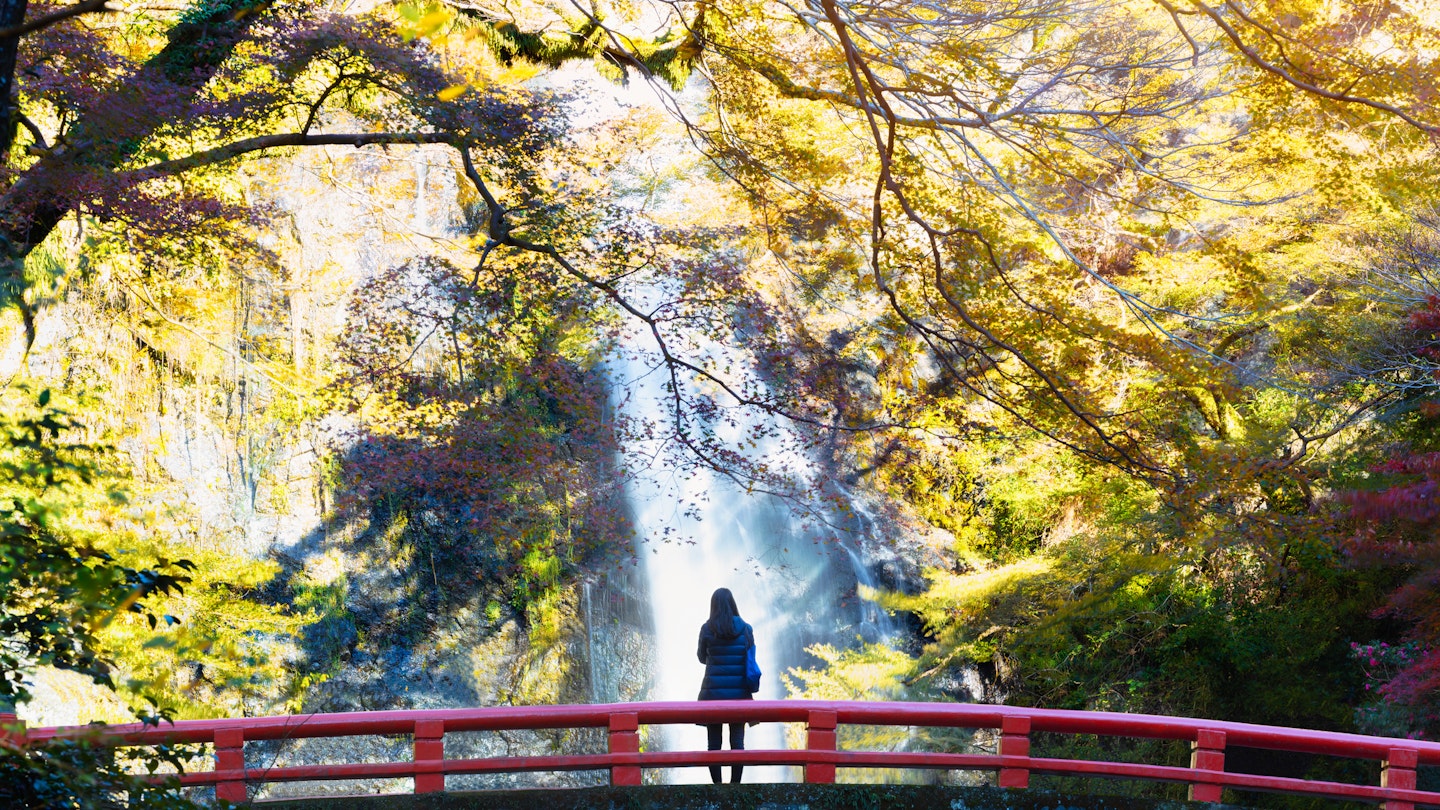
Be ready for a visit to Japan with these tips on health, safety and etiquette © pat138241 / Getty Images
Japan has a reputation as an etiquette-bound place that can be intimidating for first-time visitors.
The truth is, though, that the traditions here are no more formal or constricting than in many other destinations around the world. Moreover, most locals are more than willing to help out or give foreign travelers a pass for any perceived faux pas.
As with just about anything in life, expectation management is key. Put your mind at ease with our top tips for smooth traveling in Japan .
1. Book accommodation in advance (and arrive at the right time)
You can probably get a room at a basic business hotel without a reservation in a pinch, but why risk it? Top accommodations can book up weeks or even months in advance, so it's best to plan ahead.
Particularly busy travel periods include the first week of January, cherry blossom season (late March through April, depending on the destination), “Golden Week” (April 29 to May 5) and August.
You should also keep in mind that smaller inns or ryokan (traditional Japanese inns) often have fixed check-in times outside of which staff won’t be present, and rooms won’t be made up. Coordinate your arrival time in advance.
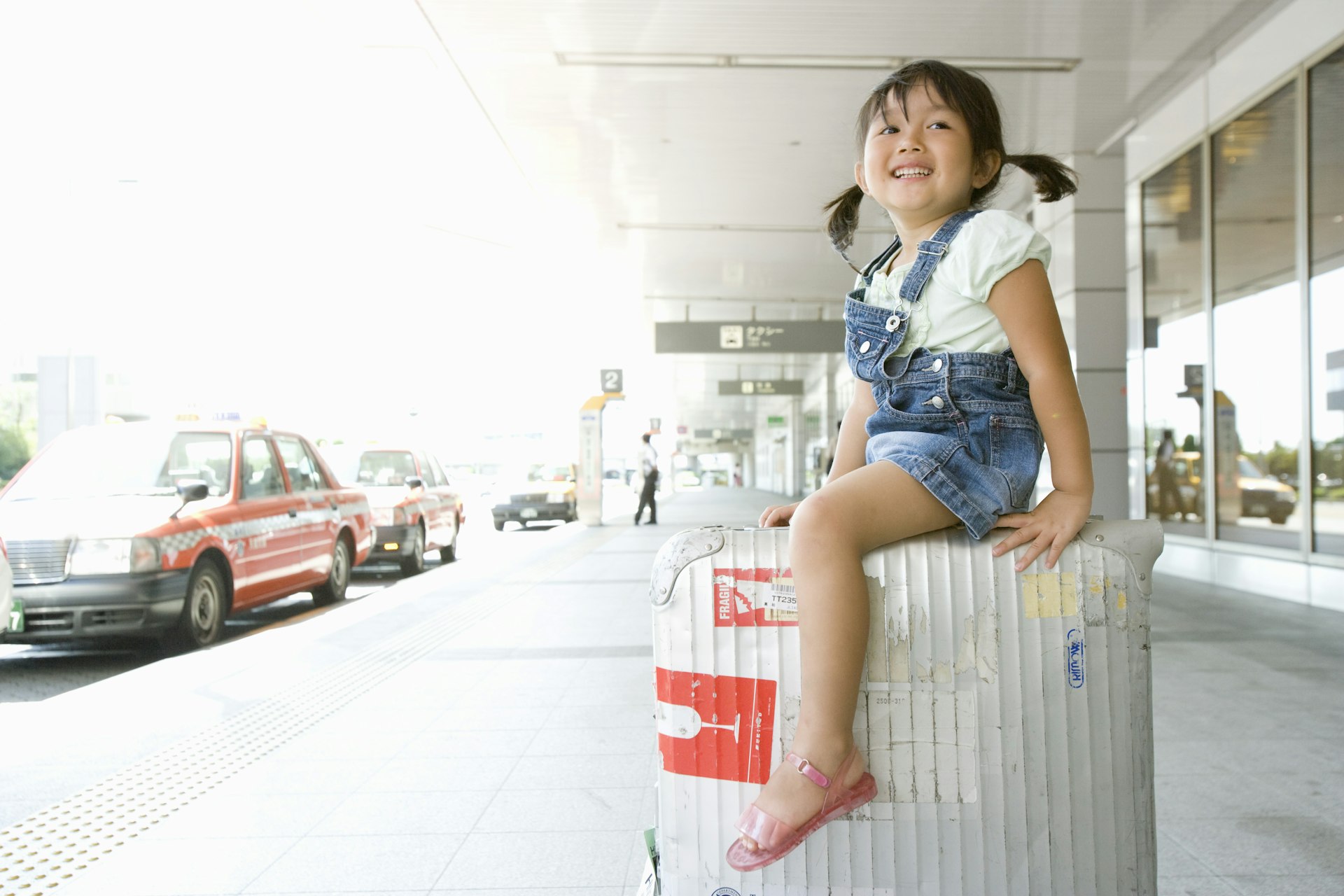
2. Pack light for a visit to Japan
Since hotel rooms in Japan tend to be small, especially in cities, there is little room for large suitcases – which can also be a pain to wrangle on public transport . Packing on the lighter side is always a good idea, but especially advisable for Japan.
Note that religious sites such as Buddhist temples and Shintō shrines don’t have dress codes. High-end restaurants, bars and clubs sometimes do, but that usually just means no sleeveless shirts or sandals on men.
Keep in mind that you might find yourself sitting on the floor when dining out, which can be uncomfortable in short (or tight) clothing.
3. Buy a data-heavy SIM card at the airport
Finding your way around in Japan can be tricky. The address system is notoriously difficult to navigate – even for locals – so smartphones with navigation apps have been a real boon for travelers.
This means you're likely to be using a substantial amount of data getting from place to place, so buy a data-heavy SIM card at the airport upon arrival.
Ready to go to Japan? Here are 24 of the best things to do when you get there

4. Bring shoes you can easily slip on and off
Comfortable walking shoes are a must. You’ll also likely have to take your shoes off frequently at religious sites, traditional inns and some restaurants – you’ll thank yourself later if you pack shoes that are easy to slip on and off.
Since you’ll be slipping into a pair of communal slippers when you take your own shoes off, many visitors prefer to wear socks.
5. Learn how to use a bidet toilet
Called “washlets,” Japan’s high-tech, electronic bidet toilets will wash and dry your delicate parts with the touch of a button. (Don’t worry about any language barrier; the pictograms on the buttons are easy to understand).
Other toilet customs in Japan might throw you for a loop. Motion-sensor-activated sound machines are intended to conceal, um, sensitive noises. Also expect dedicated toilet slippers in shoes-off establishments.
Note that there is frequently a lack of towels and hand dryers (locals carry small cloths with them for this reason).
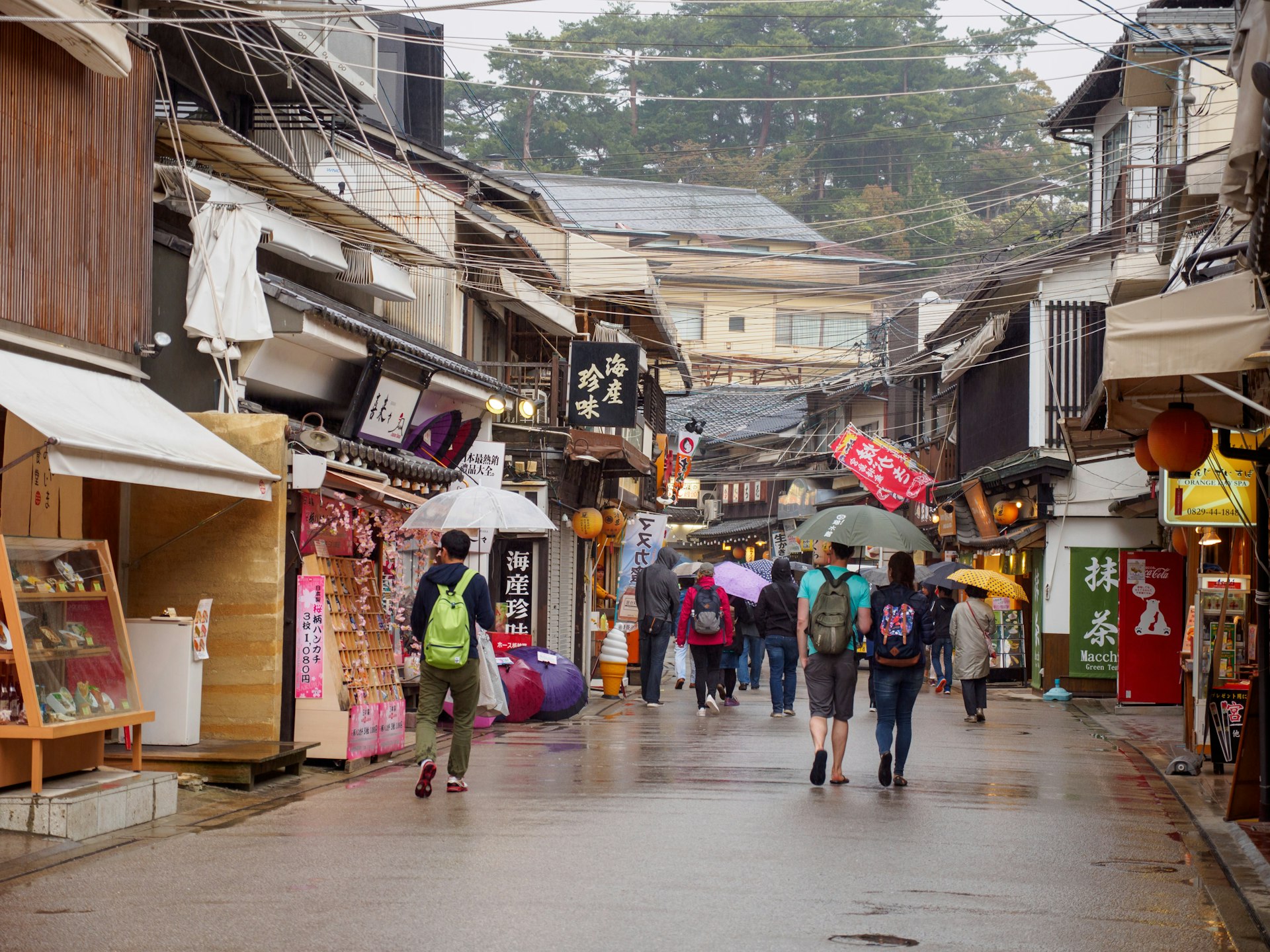
6. Come prepared for the weather
Summers in Japan are hot and humid, which can mean a real risk of heatstroke. Carry water with you, and a folding umbrella with UV blocking is useful – and does double duty in case of a sudden shower.
Late June is the start of the annual rainy season, when it can rain without end for days; this can last a few weeks or through most of July.
Rains, as well as punishing winds, are likely again during typhoon season , which runs from September through October (earlier in Okinawa ).
Typhoons can cause serious travel disruption; monitor the situation with the Japan Meteorological Agency ’s storm and other weather warnings, which are available in English. Winters can get chilly, and Tōhoku and Hokkaidō up north can get huge dumps of snow.
Japan’s ubiquitous convenience stores are handy for weather-related necessities like umbrellas, hats, cooling wipes and pocket warmers.
7. Make sure to carry cash...
In rural Japan and at older family-run businesses in cities, credit cards may not be accepted. It’s wise to assume you’ll need to pay cash at country ryokan and smaller restaurants and shops; stock up when you’re in a town with an ATM (cashpoint).
To pay as the Japanese do, place your cash or card in the small tray at the register rather than handing either to the cashier.
8. ...But don’t worry about tipping
Though tour guides who regularly take foreign tourists around might expect extra, Japan has no custom of tipping, and an attempt to add to your bill will more often than not fluster or embarrass staff.
In lieu of tipping, some bars and restaurants will charge a flat-rate service fee, usually around ¥300–500 per person; others, typically fancy ones, will automatically add a 10% service charge to the bill.
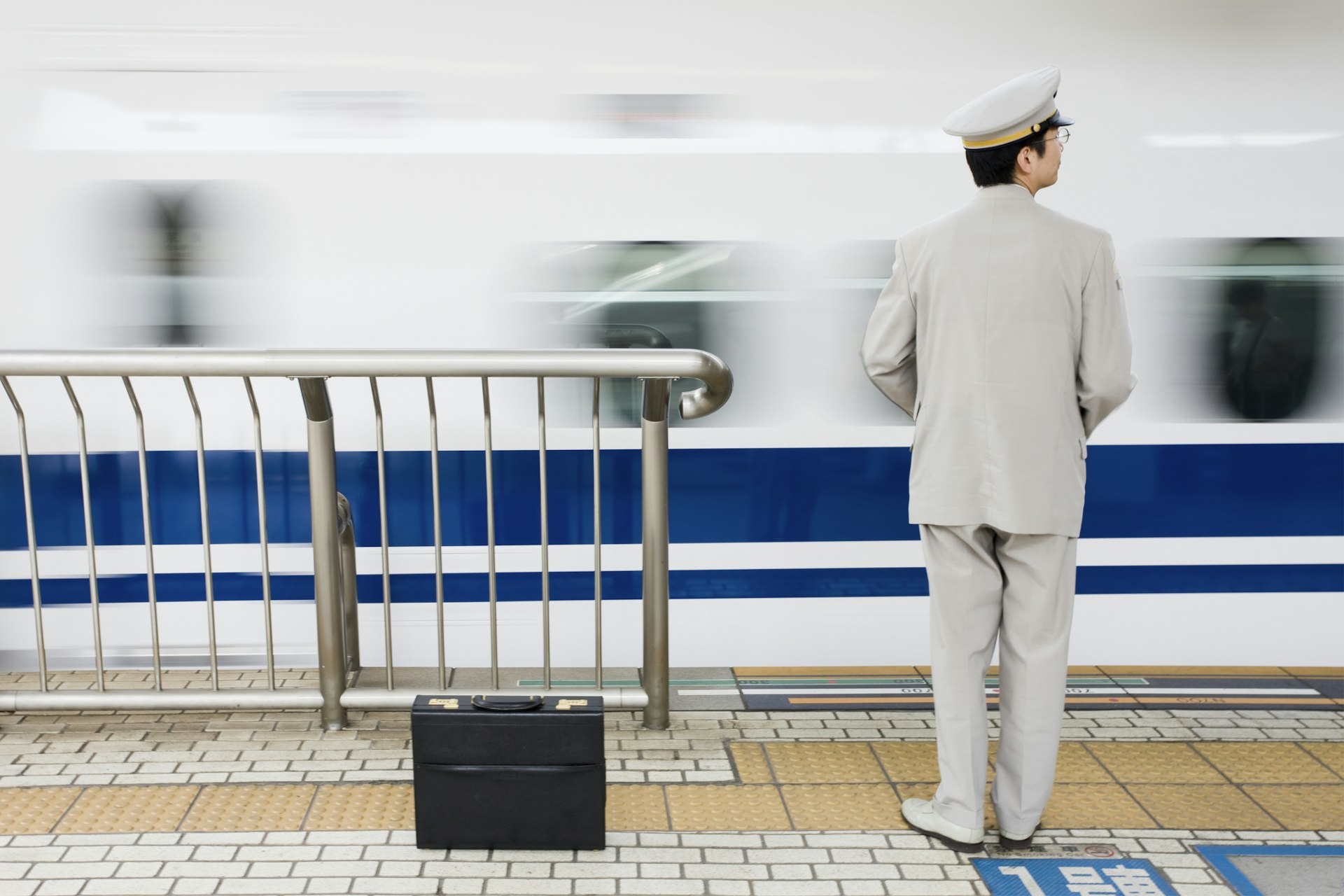
9. Learn the art of queueing in Japan
The Japanese are big on queues, forming neat lines everywhere from check-out counters to train platforms. (Regarding the latter: after the train doors open, it’s everyone for themselves when it comes to scoring a seat.)
10. Stand to the left (or to the right)
Always ride on one side of the escalator – but which side depends on where you are. In Kanto and eastwards, it’s to the left; in Kansai and westwards, it’s to the right. (The dividing point is somewhere just west of Nagoya ).
Incidentally, train operators want passengers to stand on both sides of the escalator and refrain from walking altogether, even if commuters have so far shrugged at these guidelines.
11. Note when the last train leaves
City subways run until 1am at the very latest. If you miss the last train for the night, the alternative is to catch a taxi, which can be expensive.

12. Avoid the morning commute in Tokyo
For Tokyoites , the morning commute is a contact sport. On weekdays from 7:30am to 9am, millions squeeze into trains across the city, sometimes helped along by station staff who make sure everyone’s packed in.
Shinjuku Station, the busiest in the world, sees an average of over 3.5 million commuters daily; there are more than 200 exits leading in and out of the complex.
13. Eating in public is generally a no-no in Japan
It’s considered bad form to eat in public, especially while walking. Exceptions include the shinkansen (bullet train) and other reserved-seat limited-express trains, where it is customary to eat a bentō (boxed meal) on board; plus at festivals or market streets with food vendors; on a picnic; and of course if you're eating ice cream.
It’s also okay to take sips from a resealable beverage container, like a water bottle.
14. Know what to do in an earthquake or tsunami
Japan is one of the most seismically active places on the planet. While strong earthquakes are rare, minor temblors happen all the time. If this occurs during your time here, stay calm and take your cue from those around you.
Head under a table or stand in a doorway if the shaking picks up; strict building codes generally keep harm to a minimum.
Rarer but more dangerous tsunami can follow a significant quake. Should this occur, listen for tsunami warnings and get to higher ground fast if you are near the coast.
15. Learn some Japanese lingo
English is widely spoken in cities and around major tourist attractions; in rural areas, though, it can be hit or miss. Some Japanese words that will come in handy when dining out:
• omori (large portion, often free at ramen stalls) • okawari (refill) • mochikaeri (takeaway) • tennai de (eat-in) • onegai shimasu (please). Follow up any of your orders or requests with this; for example, if you want tea, say, “O-cha onegai shimasu.” • sumimasen (excuse me) • arigato gozaimasu (thank you). Because it’s a bit of a mouthful, it’s tempting to shorten it to simply arigato . Think of it as the difference between “thank you” and “thanks” and go for the politer “arigato gozaimasu.” • toire (toilet; pronounced “to-ee-rey”)
This article was first published April 2022 and updated March 2024
Explore related stories
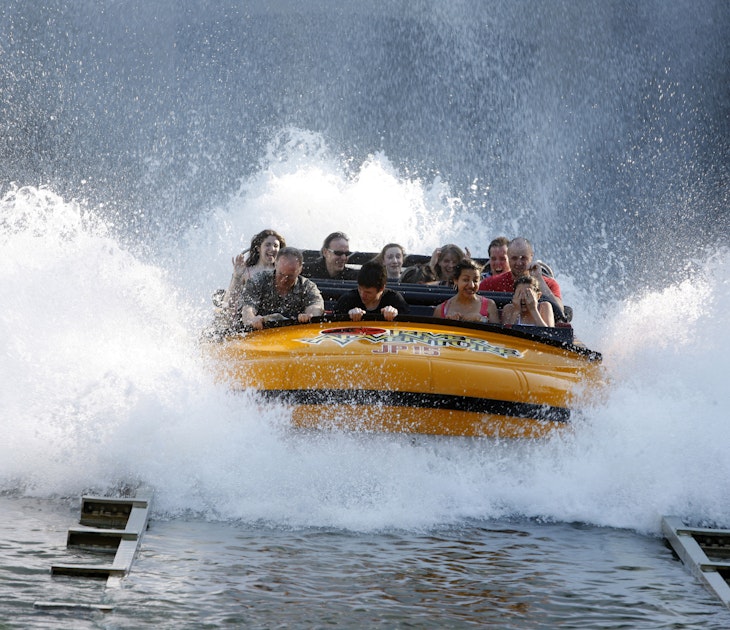
Apr 14, 2024 • 6 min read
Florida is famous for sun and sand, but for many families it's all about the theme parks. Here's our pick of the best theme parks in the Sunshine State.

Apr 3, 2024 • 17 min read

Mar 28, 2024 • 7 min read

Mar 28, 2024 • 6 min read

Mar 26, 2024 • 8 min read

Mar 25, 2024 • 6 min read

Mar 23, 2024 • 7 min read

Feb 9, 2024 • 12 min read
Cookies on GOV.UK
We use some essential cookies to make this website work.
We’d like to set additional cookies to understand how you use GOV.UK, remember your settings and improve government services.
We also use cookies set by other sites to help us deliver content from their services.
You have accepted additional cookies. You can change your cookie settings at any time.
You have rejected additional cookies. You can change your cookie settings at any time.
- Passports, travel and living abroad
- Travel abroad
- Foreign travel advice
Entry requirements
This advice reflects the UK government’s understanding of current rules for people travelling on a full ‘British citizen’ passport from the UK, for the most common types of travel.
The authorities in Japan set and enforce entry rules. If you’re not sure how these requirements apply to you, contact the Japanese Embassy in the UK .
COVID-19 rules
There are no COVID-19 testing or vaccination requirements for travellers entering Japan.
Travel in Japan
There are no official COVID-19 restrictions on travel, dining out or other activities. However, the Japanese government still recommends social distancing, mask wearing and other basic precautions. Public compliance with these recommendations is high.
Passport validity requirements
If you’re visiting Japan, your passport must be valid for the length of your stay. No additional period of validity is required.
Check with your travel provider that your passport and other travel documents meet requirements. Renew your passport if you need to.
You will be denied entry if you do not have a valid travel document or try to use a passport that has been reported lost or stolen.
Visa requirements
If you have a ‘British citizen’ passport, you can travel to Japan for tourism or business for up to 90 days. You will get a visa in your passport on arrival, and you do not need to apply before you travel. The Japanese immigration authorities may extend your visa by another 90 days at their discretion. You will need to apply for an extension.
If you have another type of British passport, you must get a visa.
To stay longer (to work or study, for or for other reasons), you must meet the Japanese government’s entry requirements. Check which type of visa or work permit you need with the Japanese Embassy in the UK .
It is illegal to work in Japan without the correct visa however informal or temporary the work.
If you overstay your permission to remain in Japan, you risk arrest, detention and a heavy fine.
For residency information, see the Japanese Immigration Services Agency website and living in Japan .
Vaccination requirements
At least 8 weeks before your trip, check the vaccinations and certificates you need in TravelHealthPro’s Japan guide .
Customs rules
There are strict rules about goods you can take into or out of Japan . You must declare anything that may be prohibited or subject to tax or duty.
It is illegal to bring meat products (including sausages, bacon and ham) to Japan without permission from the Japanese Animal Quarantine Service . Penalties include a heavy fine and prison sentence.
Whale meat is available in Japan but importing it into the UK and EU is illegal. If you import whale meat to the UK, you can get a fine of up to £5,000 and a prison sentence. Customs officers will seize the meat.
Taking money into Japan
People mainly use cash in Japan.
You may have difficulty using credit and debit cards issued outside Japan. Cirrus, Maestro, Link and Delta cash cards are not widely accepted. Japanese post offices, 7-Eleven stores and JP Post Bank have cash machines that will accept some foreign cards during business hours.
Check with your bank before travelling and take alternative sources of money.
Related content
Is this page useful.
- Yes this page is useful
- No this page is not useful
Help us improve GOV.UK
Don’t include personal or financial information like your National Insurance number or credit card details.
To help us improve GOV.UK, we’d like to know more about your visit today. We’ll send you a link to a feedback form. It will take only 2 minutes to fill in. Don’t worry we won’t send you spam or share your email address with anyone.

Ultimate Guide to Japan Travel Requirements: Everything You Need to Know
When it comes to traveling to Japan, there are certain requirements that you need to be aware of before you embark on your journey. From visas to essential documents, vaccinations to customs regulations, and transportation rules to travel tips, this ultimate guide will provide you with everything you need to know about Japan travel requirements. So, let’s dive right in!
Understanding the Visa Process for Traveling to Japan
Essential documents you must have before departure, important vaccinations and health precautions for japan, customs and entry regulations: what to expect upon arrival, transportation rules and regulations within japan, tips for a smooth travel experience in japan: dos and don’ts, q: do i need a visa to visit japan, q: how long can i stay in japan without a visa, q: what documents do i need to enter japan, q: are there any health precautions i should take before traveling to japan, q: can i drive in japan with my foreign driver’s license, expert advice on japan travel requirements.
If you are planning to visit Japan, one of the first things you need to consider is the visa process. The type of visa you require depends on the purpose and duration of your stay. Here are some key points to keep in mind:
- For short-term visits, tourists from many countries can enter Japan without a visa for up to 90 days.
- If you plan to stay in Japan for more than 90 days, you will need to apply for a long-term visa, such as a work visa, student visa, or spouse visa.
- To apply for a visa, you will generally need to submit a valid passport, a completed visa application form, a recent photograph, and any additional documents required for your specific visa type.
- It is important to apply for your visa well in advance of your planned departure date, as processing times can vary.
Before you travel to Japan, make sure you have the following essential documents with you:
- A valid passport with at least six months of validity remaining.
- Your visa, if required.
- A copy of your travel itinerary and accommodation details.
- Proof of sufficient funds to cover your stay in Japan.
- Travel insurance that provides coverage for medical expenses and emergencies.
Prior to your trip to Japan, it is recommended to ensure that you are up-to-date on routine vaccinations. Additionally, there are a few specific vaccinations and health precautions to consider:
- Hepatitis A and B vaccines are recommended for all travelers.
- Japanese encephalitis vaccine is recommended for those planning to stay for an extended period, particularly in rural areas.
- It is advisable to check with your healthcare provider regarding any other recommended vaccinations based on your individual health status and travel plans.
- It is also important to take precautions against mosquito bites, as Japan is known to have cases of dengue fever and other mosquito-borne diseases.
- Carrying a basic first aid kit with essential medications and supplies is always a good idea.
When you arrive in Japan, you will go through customs and immigration. Here are some important customs and entry regulations to be aware of:
- Declare any items that are restricted or prohibited, such as firearms, drugs, or certain food products.
- Japanese customs regulations are strict, so make sure to familiarize yourself with the list of prohibited items before your trip.
- Upon arrival, you will be fingerprinted and photographed as part of the immigration process.
- It is important to comply with all customs and immigration procedures to ensure a smooth entry into the country.
Getting around in Japan is a breeze, thanks to the country’s efficient transportation system. However, there are a few rules and regulations to keep in mind:
- When using public transportation, like trains and buses, always follow the designated rules, such as giving up your seat to elderly or disabled passengers.
- Smoking is prohibited on most trains, buses, and in many public areas.
- It is important to obtain and activate a prepaid transportation card, such as the Suica or Pasmo card, for convenient use on trains, buses, and even for making purchases at some stores.
- When driving in Japan, make sure to have an International Driving Permit (IDP) in addition to your valid driver’s license from your home country.
To ensure a smooth and enjoyable travel experience in Japan, here are some dos and don’ts to keep in mind:
- Do respect local customs and traditions, such as bowing when greeting others.
- Don’t tip in Japan, as it is not customary.
- Do try traditional Japanese cuisine and explore local food markets.
- Don’t talk loudly or disturb others in public places.
- Do carry cash, as many smaller establishments may not accept credit cards.
- Don’t forget to pack comfortable shoes, as you will likely be doing a lot of walking.
Frequently Asked Questions about Japan Travel Requirements
Here are some commonly asked questions about Japan travel requirements:
A: The visa requirements for Japan depend on your nationality and the duration of your stay. Some countries are exempt from requiring a visa for short visits.
A: Visitors from many countries can stay in Japan without a visa for up to 90 days. However, it is important to check the specific requirements based on your nationality.
A: You will need a valid passport, a completed arrival card (which is typically provided on your flight), and any required visas or permits.
A: It is recommended to be up-to-date on routine vaccinations and consider additional vaccinations based on your travel plans. It is also important to take precautions against mosquito-borne diseases.
A: To drive in Japan, you need to have both a valid driver’s license from your home country and an International Driving Permit (IDP).
For expert advice on Japan travel requirements, it is always recommended to consult with the Embassy or Consulate of Japan in your home country. They will provide you with the most accurate and up-to-date information regarding visas, entry requirements, and any other travel-related queries you may have.
Izumi Kenta
Hi, I’m Izumi Kenta from Japan. By profession, I worked as a tourist guide and interpreter in Japan. Besides this profession, I’m a hobbyist blogger. I love to talk about different things about Japan and share them with a wider audience who wants to know about my country. To share my thoughts, I’ve created this site Visitjapan and brought some Japanese travel enthusiasts and tourists worldwide to share their experiences.
Leave a Reply Cancel reply
Your email address will not be published. Required fields are marked *
Save my name and email in this browser for the next time I comment.
Recent Posts
Why Does Japan Have So Many Earthquakes? Discovering the Secrets Behind Japan's Seismic Activity
Japan is a country that is known for its frequent earthquakes. The question of why Japan experiences so many earthquakes has intrigued scientists and researchers for years. In this article, we will...
Unlocking the Secrets: Kobe Beef Price per kg Revealed!
Unlocking the Secrets: Kobe Beef Price per kg Revealed! Understanding the Factors Affecting Kobe Beef Price per kg Kobe beef, renowned for its exceptional quality and flavor, is a delicacy that...

Nomadic Matt's Travel Site
Travel Better, Cheaper, Longer
The Perfect 7-Day Japan Itinerary for First-Time Visitors

Japan captured my heart from the moment I firs visited. The delicious food, the rich culture, breathtaking landscapes, vibrant history, and the very friendly and polite people – it all blew my mind.
But Japan often feels impenetrable, especially to first-time visitors. While I think Japan deserves a minimum of 10 days, I get that some people might only have a week, so I wanted to write this, my ideal seven-day itinerary for Japan for a first-time visitor.
With only a week, there’s not much you can see unless you really rush it. And I don’t think you should do that.
So this itinerary only focuses on Tokyo and Kyoto (the most popular destinations) as well as some day trips from each. If you wanted to rush things a little, you could add in Osaka (more on that at the end).
(Note: If you purchased a Japan Rail Pass , activate it on arrival. That way, you can take advantage of the free JR trains throughout the city.)
Table of Contents
Japan Itinerary Day 1: Tokyo
Japan itinerary day 2: tokyo, japan itinerary day 3: tokyo, japan itinerary day 4: kyoto, japan itinerary day 5: kyoto, japan itinerary day 6: nara, japan itinerary day 7: tokyo, an alternative itinerary.

Tsukiji and Toyosu Fish Markets Cure your jet lag with some food! In 2018, Tokyo’s main fish market moved to Toyosu. It is now twice the size of Tsukiji (the old one), making it the largest such market in the world. Here you can eat fresh sushi for breakfast, just a few feet from where it was hauled in from the sea, while marveling at the chaotic atmosphere.
You can still head to the old market in Tsukiji to eat, shop, and wander as well. I like it a lot, because there are more food options! Food and drink tours of the Tsukiji Outer Market are available for around 15,000 JPY.
Toyosu Fish Market is open Monday-Saturday 5am-5pm, though most shops don’t open until 7am. Admission is free, but you have to pick up a visitor’s pass when you enter. Tsukiji Fish Market’s hours vary by shop (usually 5am-2pm). Admission is free.
teamLab Planets This digital art installation is a multi-sensory and immersive experience in which you become part of the artwork, walking barefoot through the four exhibition spaces and gardens as you interact with the installations’ elements in unique ways. It’s really fun! TeamLab is generally sells out in advance, so I recommend getting your tickets online ahead of time .
Take a walking tour Walking tours are a great way to get the lay of the land while connecting with a local guide. I always go on one or two when I arrive somewhere. Tokyo Localized offers many free tours, including a classic overview and ones of both the famed Harajuku and Shinjuku neighborhoods. Its Imperial Palace tour would be the most convenient one after teamLab.
The Imperial Palace Formerly Edo Castle, the Imperial Palace was built in the 15th century, and some of the walls and moats from that time are still in use to this day. When the emperor moved from Kyoto to Tokyo in 1869, he took Edo for his new palace and renamed it. While you can’t go inside, it is surrounded by beautiful grounds, a moat, and a park worth wandering through. You can also see the changing-of-the-guard ceremony (though it’s relatively low-key and unassuming). Admission to the grounds is free.
Shinjuku Gyoen National Garden This park is over 144 acres and home to some 20,000 trees. Most of the original park was destroyed in World War II but was rebuilt and reopened in 1949. During spring, it is one of the best places to see cherry blossoms. My favorite area is the landscape garden, which has several ponds with bridges and islands. It’s a peaceful oasis away from the urban hustle and bustle.
Depending on how you feel relative to your jetlag, you could fit a few more activities before you end your day. Check out this post for suggestions .

- Senso-ji – This is Tokyo’s most popular and famous temple. Beautifully painted, it sits in a scenic spot near a pagoda and the lovely Kaminari Gate. There’s a huge statue of Kannon, the goddess of mercy, inside the main hall. It’s very busy during the day, so maybe check out the grounds in the evening.
- Asakusa Shrine – This nearby Shinto shrine is much more peaceful, with fewer visitors, but with people praying, meditating, or performing traditional rituals. It was built during the Edo period (1603–1868) and survived the air raids of World War II.
Afterward, head to Ueno Park . Spanning over 133 acres, Ueno Park was established in 1873 on land formerly owned by a 17th-century Buddhist temple. It gets super busy in cherry blossom season, as there are over a thousand trees here. Throughout, you’ll find various stalls and vendors selling snacks, drinks, and souvenirs. On weekends, there are usually cultural events or festivals showcasing traditional arts, music, and dance. Four of Tokyo’s main museums are here:
- Tokyo National Museum – Established in 1872 on the north end, this massive building is the oldest and largest art museum in Japan. It houses one of the world’s largest collections of art and artifacts from Asia, particularly Japan.
- Tokyo Metropolitan Art Museum – This museum showcases rotating exhibitions of contemporary and traditional Japanese art.
- National Museum of Nature and Science – This museum features a wide range of permanent and temporary exhibitions covering natural science and history.
- Tosho-gu Shrine – This beautiful 17th-century Shinto shrine has carved gold doors and other ornate carvings. It’s worth seeing up close!
Afterward, walk down to Akihabara to explore the video game parlors, arcades, and anime shops. This very buzzy area is ground zero for all things electronic, and it’s fun to play many of the games. This is where you’ll find the famous maid cafés, where servers dress up as maids and serve you food and drinks. These range from big touristy ones to holes-in-the-wall (the girls on the street are promoting the latter, which are a lot more culturally fun). They aren’t cheap, though, as you have to buy drink packages and pay a fee, but they’re kitschy and fun.
In the evening, visit Shinjuku and then drink in Golden Gai . In Shinjuku, you’ll find a plethora of cool bars, bright lights, and tiny hole-in-the-wall eateries. Be sure to wander down Memory Lane (aka Piss Alley) for tiny izakaya joints and bars. Afterward, head over to Golden Gai, a warren of narrow alleyways with a bit of a red-light-district feel, flanked by diminutive backstreet bars. It’s quite touristy but also a lot of fun. I’ve had some wild nights here!
With Arigato Tours , you’ll learn about the neighborhood while stopping to sample Japanese classics like sushi, yakitori, and ramen. The 23,900 JPY cost includes a drink and dishes at four stops.

Kamakura Here you can see a 13-meter (43-foot) bronze statue of Buddha that was built in 1252. It was initially constructed within Kotoku-in Temple, but that has since been washed away by several storms, so it now sits in the open air. Admission to enter the temple grounds is 300 JPY, while it’s 20 JPY to go inside the statue. The journey there — around an hour — is free with a Japan Rail Pass .
Tokyo Disneyland I’m a sucker for Disney. You’ll find many of the same classic rides from Disney World here, like Splash Mountain, Big Thunder Mountain, The Haunted Mansion, and everyone’s favorite teacup ride, The Mad Tea Party. But there are several unique attractions as well, like Pooh’s Hunny Hunt and Journey to the Center of the Earth.
Ticket prices vary depending on the day and time, but full-day admission begins at 7,900 JPY for adults and 4,400-6,200 JPY for children. It’s best to book in advance .
Mount Fuji Mount Fuji is located an hour outside of Tokyo. An active stratovolcano (which last erupted in 1708) and covered in snow for almost half of the year, it stands an impressive 3,776 meters (12,389 feet) and provides one of the most iconic views in the country. One of the Three Holy Mountains of Japan, Mount Fuji is both a Special Place of Scenic Beauty and a UNESCO Cultural Site. In the summer, the mountain is open to hikers, who take 5-12 hours to reach the summit (traditionally, they depart at night to arrive at the top for the sunrise).
If you don’t want to hike, you can simply visit on a day trip. There are buses that can take you partway up, where you’ll be offered sweeping vistas of the surrounding area. Guided day tours from the city cost around 12,000 JPY.

Wander the Bamboo Forest For a relaxing break, head to Arashiyama and let the dense and towering stands of bamboo envelop you. Located near the famous Tenryu-ji temple, it’s one of the most beautiful places in the entire country. It’s not that big, but there are some hidden areas to explore. Just make sure to arrive early if you want to enjoy it without the crowds (it fills up fast after sunrise).
While there, I would also recommend visiting the Okochi Sanso Garden, which (along with the home) belonged to the famous Japanese actor Denjir? ?k?chi (1898–1962). It’s not free (it’s 1,000 JPY), but it’s really nice and has some wonderful views.
Visit the Golden Pavilion Originally built in the late 14th century as a retirement villa for the shogun (military governor), this iconic structure was later converted into a Zen Buddhist temple. The present-day edifice dates only to the 1950s, however, when a monk attempting to kill himself burned the historic original to the ground. The rebuilt temple is covered in brilliant gold leaf, symbolizing purity and enlightenment. Each of the three stories exhibits a different architectural style. Completing the scene are the serene reflecting pool and traditional Japanese gardens that contain lush foliage, manicured trees, and scenic walking paths.
1 Kinkakuji-cho, Kita-ku, Kyoto-shi, Kyoto, +81 075-461-0013, shokoku-ji.jp. Open daily 9am-5pm. Admission is 500 JPY.
Admire Ryoan-ji Temple This is my favorite temple in Kyoto. Originally established in 1450 as a residence for a high-ranking samurai, it was soon converted into a Zen temple and is now a UNESCO World Heritage Site, with a mausoleum that houses the remains of seven emperors. Its traditional rock and sand garden is considered one of the best in the country. There’s also a teahouse where you can experience the traditional Japanese tea ceremony ( chanoyu ) as you overlook the Kyoyochi reflecting pool.
There are other temples in the area to check out as well:
- Daitoku-ji Temple – This massive complex dating back to 1315 covers almost 60 acres. It contains several dozen temples and is a good place to see a variety of Zen gardens and architectural styles. It’s also deeply linked to the Japanese tea ceremony, as several of the country’s most noteworthy masters studied here.
- Toji Temple – This is home to Japan’s tallest pagoda (five stories high). Founded in 796, just after Kyoto became the capital, it was one of only three Buddhist temples allowed in the city.
Go on a sake brewery tour Kyoto has a sake (rice wine) brewing tradition going back 400 years and is known for some of the best in the world, due to using the area’s pure natural spring water in the brewing process. Arigato Tours offers an excellent three-hour tour of Fushimi (the brewing district) for 23,320 JPY, including stops at several breweries, a guided tour of the Gekkeikan Okura Sake Museum, and tastings.

See the Fushimi Inari Shrine This mountainside Shinto shrine, dating back to 711, is dedicated to Inari, the god of rice and prosperity. It’s known for its thousands of vibrant orange torii gates that form a network of trails leading up Mount Inari. You can hike the trails on your own while enjoying panoramic views of Kyoto below or join a guided hiking tour , on which you’ll get off the paved paths and into hidden bamboo groves. Get here as early as possible to avoid the crowds.
68 Fukakusa Yabunouchicho, +81756417331, inari.jp. Open 24/7. Admission is free.
Walk around Higashiyama Spend an afternoon walking along the narrow streets of one of the oldest and best preserved districts on your own or on a walking tour . The traditional machiya buildings (traditional wooden townhouses) are filled with small shops selling local specialties and handicrafts, as well as restaurants and teahouses. It’s a popular area in which to participate in a tea ceremony . Another nice place to stroll in this neighborhood is the Philosopher’s Path, which follows a cherry-tree-lined canal that’s beautiful and meditative even when the blossoms aren’t in season.
Visit Kiyomizu-dera One of a number of UNESCO sites in ancient Kyoto, Kiyomizu-dera (meaning “pure water temple”) is located in the foothills of Mount Otowa in the eastern part of the city. It’s one of the most famous temples in all of Japan. It was established in 778, but most of the existing buildings date to the 17th century. There’s not a single nail used in the construction, which becomes all the more impressive once you see how large the temple is, which is best known for its wooden terrace that juts out over the hillside. The temple’s name comes from the nearby waterfall whose waters (from which you can still drink today) are said to have wish-granting and healing powers.
1 Chome-294 Kiyomizu, +81 75-551-1234, kiyomizudera.or.jp. Open daily 6am-6pm. Admission is 400 JPY.
Explore Shorin-ji Temple This small temple dates back to the 16th century. What makes it worth visiting is its meditation classes. You’ll get to tour the temple and then be instructed in zazen , the Japanese style of meditation. It’s a very unique experience and something that I think will add a lot of depth and nuance to your visit (especially if you’ve seen a lot of temples). Just make sure to dress comfortably.
15 Chome-795 Honmachi, +81 75-561-4311, shourin-ji.org. Open daily 10am-4pm. Admission is 800 JPY.
Wander the Nishiki Market Nishiki Ichiba is now one of the biggest indoor markets in town. Known as “Kyoto’s Kitchen” and spanning over five blocks, it is full of vendors selling traditional dishes from the region, classic Kyoto souvenirs, and really just about anything else. There are over a hundred stalls here, many of which have been in the same family for generations. Opening hours depend on the shop but are typically from 9am to 6pm.
To dive deeper into Japanese food culture, you can take a food tour of the market . It’s the best way to learn about all the food you’ll see, as well as the market’s history.
Explore Gion Gion, the historic geisha district, is renowned as being one of the most iconic and atmospheric areas of town. It’s known for its traditional wooden machiya houses, narrow alleyways, cobblestone streets, and preservation of geisha (known locally as geiko) culture. Lining the main street are ochayas (teahouses where geishas entertain), small shops, and many restaurants, ranging from upscale kaiseki restaurants serving traditional Kyoto cuisine to casual eateries.
To really learn more about this amazing party of town and its past, take a walking tour of Gion . You’ll learn a ton and get a lot of context. They cost around 1,800 JPY.
At night, go to the Pontocho Row , a narrow street lined with restaurants, hole-in-the-wall bars, and jazz clubs. It’s one of the more lively areas in Kyoto.

Nara was the capital of Japan in the eighth century, so there are lots of buildings and temples here that are upwards of a thousand years old (which is rare in Japan, due to the prevalence of fires and earthquakes, as well as World War II). Some things to do:
- Frolic with deer – The real draw in Nara are the deer. Since the 17th century, those in and around the city have been considered sacred. You can buy crackers to feed them or just watch them stroll around carefree.
- See the Buddha – Don’t miss a visit to Todai-ji, the world’s largest wooden building, home to a 16-meter (52-foot) Buddha statue. It was built in 738 and is now a UNESCO World Heritage Site.
- Take a walking tour – This guided half-day walking tour for 11,500 JPY includes all of Nara’s highlights as well as a traditional lunch.

Ryogoku Kokugikan, Japan’s most famous sumo wrestling arena, hosts tournaments three times each year, in January, May, and September. Tickets sell out quickly, so book online in advance. Prices vary but start around 3,200 JPY for arena seats. You can book a ticket online here (you’ll be accompanied by a guide too, so you can learn more about the tradition as it unfolds before your eyes).
To learn more about the sport in in the off-season, book a tour of a sumo stable .

So, if you want to add another city to this itinerary you can follow this breakdown:
- Days 1 & 2: Tokyo
- Days 3 & 4: Kyoto
- Day 5: Nara
- Days 6 & 7: Osaka
Tokyo, Kyoto, and Nara are all covered above. As for Osaka, some of my favorite things to see and do:
Take a food tour Known as “the Kitchen of Japan,” Osaka boasts a diverse culinary scene. Mouthwatering sushi and sashimi, Kobe beef and Japanese BBQ, and flavorful ramen can all be found here in abundance. Plus, there are local specialties like okonomiyaki (a savory pancake with egg and vegetables) and kushikatsu (kebab skewers). You can take a food tour for around 13,000 JPY, a ramen and gyoza cooking class for 9,500 JPY, or just wander and eat.
Osaka Castle One of the most famous landmarks in the country, the castle was originally built in the late 16th century by Toyotomi Hideyoshi and played a pivotal role in the unification of Japan during the Sengoku period (1467-1615). Over the centuries, it has been destroyed and rebuilt multiple times due to wars, fires, and natural disasters. The current version dates to 1931. The castle is situated amid sprawling grounds and surrounded by a moat. It’s also home to a small but insightful museum and an observation deck that offers some picturesque urban views.
Dotonbori This is arguably Osaka’s most iconic district, known for its vibrant nightlife (bars, clubs, theaters, and music venues), colorful signage, and delicious food. It’s best seen at night due to the plethora of huge neon lights and signs lining both the canal and streets, which have become symbols of Osaka’s nightlife. A guided walking tour that includes Dotonbori as well adjacent neighborhoods is 6,500 JPY.
Shitennoji Temple This temple is one of the oldest Buddhist temples in Japan, founded in 593. The architecture is a blend of traditional Japanese and East Asian styles, featuring impressive pagodas, gates, and shrines set amid serene gardens. Stroll through the tranquil grounds, admire the beautiful architecture, and learn about the temple’s historical and cultural significance at the museum. The temple is 300 JPY to enter, the garden is 300 JPY, and the museum is 500 JPY.
Japan is one of my favorite countries. While it’s relatively small, it offers an amazing array of things to see and do (as well as some of the best food in the world). With seven days, you can easily see a good number of the main highlights and get a taste for the incredible history and culture. It will be a busy week, but this itinerary ensures you’ll still have some time to slow down, relax, and take in the local pace of life.
Just make sure you get a Japan Rail Pass before you go. While it’s not as cheap as it used to be, it will likely save you time and money!
Book Your Trip to Japan: Logistical Tips and Tricks
Book Your Flight Find a cheap flight by using Skyscanner . They are my two favorite search engines, because they search websites and airlines around the globe, so you always know no stone is being left unturned!
Book Your Accommodation You can book your hostel with Hostelworld as they have the most comprehensive inventory so they are best for booking a hostel. If you want to stay in a hotel or guesthouse in Japan, use Booking.com as it consistently returns the cheapest rates for guesthouses and hotels.
Don’t Forget Travel Insurance Travel insurance will protect you against illness, injury, theft, and cancelations. It’s comprehensive protection in case anything goes wrong. I never go on a trip without it, as I’ve had to use it many times in the past. My favorite companies that offer the best service and value are:
- Safety Wing (best for everyone)
- Insure My Trip (for those over 70)
- Medjet (for additional evacuation coverage)
Looking for the Best Companies to Save Money With? Check out my resource page for the best companies to use when you travel! I list all the ones I use to save money when I travel — and I think they will help you too!
Be sure to check out the Japan Rail Pass if you’ll be traveling around the country. It comes in 7-, 14-, and 21-day passes and can save you a ton of money!
Looking for More Travel Tips for Japan? Check out my in-depth Japan travel guide for more ways to save money, information on costs, tips on what to see and do, suggested itineraries and reading and packing lists, and much, much more!
Got a comment on this article? Join the conversation on Facebook , Instagram , or Twitter and share your thoughts!
Disclosure: Please note that some of the links above may be affiliate links, and at no additional cost to you, I earn a commission if you make a purchase. I recommend only products and companies I use and the income goes to keeping the site community supported and ad free.
Related Posts

Get my best stuff sent straight to you!
Pin it on pinterest.

35+ Helpful Japan Travel Tips To Know BEFORE You Go
J apan is a remarkable country filled with so much history, natural beauty and modern touches. I’ve just returned from my second trip to Japan and was reminded of so many things I had forgotten about the country! Traveling in Japan is an amazing and enriching experience, however it is also a country filled with traditions and unique ways of operating that visitors may not be used to. Below I share the best Japan travel tips to help you make the most of your trip.
Disclosure: Some of the links in this post are affiliate links, meaning at no additional cost to you, I will earn a commission if you click through and make a purchase.
Top Japan Travel Tips to Know BEFORE You Go
Before you head off to Japan, there are a few things you will need to know in advance and to plan for. While most things on this list can be figured out while in country, a few MUST be done before you leave your home. Whether you opt for the classic tourist circuit Japan itinerary or get off the beaten path , these tips will go a long way to help you enjoy your trip to the fullest.
Get A Japan Rail Pass in ADVANCE
If you want a Japan Rail Pass , it is only available to purchase for overseas tourists BEFORE they enter the country. Once you are in country, you can no longer purchase a JR Pass, so if you plan to use the bullet train between destinations quite a bit, this is a must do before you leave. You must also give yourself plenty of advance notice as well as the pass is still mailed to a physical address.
However, I will say that sometimes it’s not actually cheaper to get a JR Pass. Research the Shinkansen trains here and which trains you plan to take to budget accordingly. Often you can take a train that is just a bit slower, for a lot cheaper.
Regardless, the most important piece of advice for the JR Pass is once it is activated you CANNOT lose it. If you lose it, it is gone. You will not be able to print a new pass. You will not be given a refund. You cannot buy another pass until it is expired as it is connected to your passport. A fellow traveler on my recent trip had this experience, and it was not pleasant to lose a $600 pass on day 1 of his trip!
Keep Your Train Tickets With You
Along with the JR Pass information above, another thing to know when traveling on the trains in Japan is to keep your train ticket with you at all times. One, you will often be asked to show it on many longer distance train journeys and you will need it to exit the stations. Even better is to get a transportation card mentioned below for city travel as it is a little less easy to lose. Trust me, these tiny slips of paper are easy to misplace!
Get an IC Transport Card
There is nothing worse than arriving to Japan, transferring through the airports and needing a drink but unable to get one! Japan’s vending machines and many shops do not take US or foreign credit cards. What do you do when you only have a vending machine as an option in the airport? The best way to deal with this is to download and preload an IC card BEFORE your arrival. Not only does a Suica card or Pasmo card provide easy access to public transportation, it can also be used at vending machines and for small purchases at convenience stores.
Insider Japan Travel Tips You MUST know: If you have an iPhone, you can go to your wallet, click the plus sign, then click Transit Card. Now you can search “Japan” to see the Suica option. Now you can select the amount to add to your card and go through the payment portal. BAM. You are ready to roll upon hitting the ground in Japan.
If you cannot load it on your phone, you can purchase Suica Cards at most train stations. You can also order Suica Cards online and have them mailed to your house abroad prior to your trip to be sure you will have access when in the country.
Learn Basic Japanese Words
While you might find some level of English in the big cities or top tourist spots, much of Japan still exists without much English. I always find this interesting, but again, how cool that they have managed to keep their language and Japanese culture so true to themselves! That said, if you plan to get off the beaten path at all, make sure you know a few phrases and have your Google Translate handy!
The top phrases I found useful while in country include:
Hello – Konichiwa
Thank you – Arigato
Thank you very much – Arigato Gozai mas
Delicious – Oishi
Cute – Kawaii
Cheers – Kanpai
Sorry, Excuse me, Pardon me – Sumi masen
Download Google Translate
One of the most important travel tips I can provide is to download the Google Translate app and Japanese packet as you will often need it. As mentioned above, there is often still quite a bit of a language barrier in Japan, especially in smaller towns or off the beaten path at all. Having Google translate will help you when you want to say something to someone but can’t communicate. The translate will provide it in text for the other person to read which is super helpful. Additionally, you can actually just turn on your microphone and let a person speak into your app and get the translation quickly. This is a great help throughout Japan!
Cash is King
Tipping is not customary.
Contrary to the West, tipping is not customary here and in some cases can be considered rude. To be honest as an American who is asked for a tip at every turn, this was a welcome change. I was so happy to not have to worry about tipping at restaurants, bus drivers or our guides. If you are unsure you can ask, but in general it is not done!
Don’t Expect a Western Breakfast
One of the things I most remembered from my first trip to Japan was the very different, for me, breakfast options. While I am all for trying things and diving into the local culture, sometimes you want a little something that is reminiscent of home. For me that is often breakfast. At most restaurants and hotels, you can expect to see very little western offerings for breakfast. If you want something you are used to (coffee even) you will need to seek out western establishments. I don’t often go to McDonalds at home or abroad, but I sure do like that sausage egg mcmuffin after a week in Japan!
Walk on the Left Side of the Street
Without even noticing it, I found myself crossing over a path of people in the underground to get on the “right” side of the walking path. You will see that people traffic flows very smoothing in Japan and most of that is because of how the Japanese walk on the correct side. Watch the flow of food traffic and you will quickly see where you need to be! When I was in Sapporo, there was an entire city of underground walkways. I quickly realized that everyone was sectioned off in the direction of their travel. It made it very easy to get through even with large end of day crowds. But beware of those very useful, but pesky bumps for sight impaired. They are everywhere and are not really an indicator of which side of the street you should be on!
Get Ready to Take Off Your Shoes
While it isn’t as common to remove your shoes in Japan as it is for say India, you will need to remove your shoes for more traditional establishments including restaurants. We had to remove our shoes at the front door to one of our hotels even and couldn’t put them back on until we were leaving! I love not wearing shoes indoors, but it was not always easy especially when I was wearing my Blundstones that are so difficult to get on/off!
Take Your Passport Shopping
If you would like to take advantage of tax-free shopping, make sure to take your passport with you when you go shopping. Some shops like UNIQLO will automatically give you the tax free savings right away once they see your passport, helping you to avoid doing it at the airport. Other shops will require you get a refund at the airport. If you plan to do any shopping, just take it with you!
Respect the Japanese Traditions
One of the most amazing parts of traveling to Japan is how it is SO different than what many of us are used to. Historically, Japan has been a closed off society. Most of the country is Japanese origin with little Western influence. It is one of the many things that makes it so unique. That said, the most important thing is that you recognize and respect their traditions even if it’s very foreign to you. Take time to learn and ask about the traditions and practice them during your visit. It’s a great way to show respect and fully immerse yourself in the country.
Prepare Yourself for A Japanese Onsen
One of the most beautiful parts of Japanese society is the public bathing system of the onsen. These hot springs are located throughout the country in stunning locations. It is definitely a big part of life here and something tourists should try at least once. I will warn you though, that unless you are having a private onsen, they are completely nude and can be mixed gender as well. I could write an entire article on how to visit an onsen as there are customs and rules to know, but in general you will need to fully shower and bathe with soap before entering the pools, they are totally nude and many do not allow people to enter with visible tattoos. If you are staying in a ryokan with no private shower facility in your room, make sure the staff are aware of any tattoos in advance so they can make arrangements for you.
Transportation Etiquette
Don’t be afraid of shopping at convenience stores.
In Japan, convenience stores are everything. And EVERYWHERE! There are so many varieties from 7-11 to Lawson’s to Family Mart or more local shops like SeicoMart in Hokkaido that you can never be very far from one. Here you can literally get anything you want including breakfast or dinner! You can find ready made meals like fried chicken in Hokkaido to udon noodles, tempura, sandwiches and more. They also have chargers if you happen to have soaked your phone and need a cordless charger. They have candy and sweets, beer, iced coffee and so more more.
Get Ready to Carry Your Trash Around
One thing that is always a surprise to me when I’m in Japan is the lack of trash cans in public spaces. They are not on the roadsides or even that frequently found in shops. You will carry a lot of trash in your pockets all day long! Carry a small plastic bag for your trash to make life easier, but do remember to say no to plastic bags at most places as they are given very freely still or a minimal extra cost.
Separate Your Trash
Japan is not super up on the “use less plastic” concept, but they are very strict about separating their garbage. Hopefully this means they have a much better track record of recycling than we do in the US! If you are not used to separating your trash, educate yourself a bit on what is compostable, what is recyclable and what is landfill trash. At big festivals or events you will find very trash cans (as mentioned above), but when you do, they will expect you to seperate it all into the correct containers.
Eating, Drinking & Smoking in Public
While I am not 100% if there are rules on this, but in general you will notice that the Japanese people do NOT eat, drink or smoke while walking. There are of course designated areas for smoking, which is not allowed all over the place. But for drinking your morning coffee on the way to the train station? Nope, you won’t see Japanese people do this. Is it an unspoken rule or just a custom I am not certain, but I tried to follow suit as much as I could.
Throughout history, Japan has been a closed off society. Would you believe that almost 99% of the country is Japanese? The result is a unique culture with little Western influence and little English. So don’t be surprised if you ask questions or try to converse with people, but don’t receive much of a response. It’s not because they are rude, they simply know they can’t speak your language, and you likely can’t speak Japanese
Japanese Toilets Will Spoil You
Ok, one of the BEST things about Japan has to be their toilets. From the airport to public restrooms, you will find some really great toilets to literally write home about! My absolute favorite that I didn’t realize until I got back home was the heated seats. It really does feel so nice to sit down on a toasty toilet in the middle of the night. There are also several bidet options, drying options and of course also “privacy” sounds/music for many public toilets. Make sure to have your phone handy though as you may need to translate some of the buttons if they aren’t obvious. I have found myself stuff with the water on, not knowing how to turn it off! All of that said, you will also still find squat toilet options in most public bathrooms. They typically have a sign on the door indicating what type of toilet you can expect.
Get an e-SIM For Your Phone
If you haven’t tried an e-SIM yet, you need to get on the wagon. They are SO easy to use, super affordable and available all over the world. For my recently 2 week trip, I used a 10 GB e-SIM card which allowed me to have data access wherever I went. While there is often free Wi-Fi around major cities, often the log-in screen is only in Japanese which makes it challenging to login quickly. Get $3 off your first purchase at AIRLO using my code: KARILY0402
Stay at Ryokan At Least Once
One of the coolest Japanese cultural experiences I can recommend is to stay in a ryokan. A ryokan is basically traditional Japanese inns. While they come in many forms these days including a super traditional ryokan where you sleep on the tatami mats, you can also opt for ones that do have more “western” beds. I have stayed in all various forms and personally I love being able to plop down in an actual bed, but for a one night experience I would recommend trying the super traditional way as well.
As part of the experience, you might find that you have a traditional kaiseki meal for dinner or breakfast, you might also have no private shower in your room or have to take your shoes off at the hotel entrance. It is so fun and cool to see Japanese locals having their dinner or breakfast in the provided yukata (robe in the room) and wearing the slippers. I find this to be one of the most immersive cultural experiences you can have in Japan and well worth the price tag. (Shockingly they are usually quite a bit more expensive than western style hotels).
Japan is Not THAT Expensive
Japan has a reputation of being an excessively expensive country. While it is definitely more expensive than it’s other Asian counterparts, it is also not as pricey as some places in Europe! There are ways to reduce your expenses quite easily. One recommendation to mix up accomodation options – stay in a traditional ryokan, but also stay in chain hotels like Tokyu Stay. We had a great room at Tokyu Stay with a washer/dryer in our room for less than $80 a night. There are plenty of small shops for meals that will run you $5-10 a meal, while more traditional kaiseki meals will cost more. The biggest expense tends to be transport between cities, so that is why it is important to price it out in advance and check for internal flights and getting the JR Pass.
Do NOT Lose (or Keep) Your Hotel Key Card
Traditional hotels still use actual keys, so those are much easier to keep track of and not loose. If you are worried about losing one, you can drop it off with reception before you go out for the day.
Japan Trains Run VERY Timely
While I can’t say that Japanese trains run on time always because I have experienced delays with them, overwhelmingly they do run on a very tight schedule with very little disturbances. This is great as long as you are early, but it’s tough when you are running late! Always plan for delays in the train station and arrive with plenty of time.
Check for Seasonal Festivals
Regardless of when you visit Japan, there is sure to be some type of festival happening. These are often the best places to fully immerse yourself into the culture. For example, the cherry blossoms in the spring often have many festivals that accompany it, which can be quite fun. In Sapporo, there is an Autumn Festival in September that brings in tons of amazing food options every day for visitors to sample.
Bring Snacks With You
Whether it is a bus or train journey, do not plan on food being available. There are no dining cars on trains regardless how many hours they are. We found out the hard way that we needed to always have water and snacks with us because options were not always available. Shockingly though, you can eat and drink on the long distance trains, just make sure to take all of your trash with you.
Tap Water is Safe to Drink
One of the best things about travelling in Japan is that the tap water is safe to drink. I loved not having to purchase water bottles all the time or worry about water being bad quality. I even drank from a mountain spring in Rishiri Island that was crisp and cold and so delicious. Bring you recyclable water bottle and fill up in the hotels every day instead of buying more plastic.
Public Space & Japanese Etiquette
Japan has a concept called “ma” or personal space. Respect it, especially in crowded places with lots of people. Many of these etiquette rules are unspoken, but if you take time to look around you, you will notice that the Japanese people strictly adhere to them. Again, one of the best Japan travel tips I can provide is to look around you and follow what the locals are doing!
Wear Your Bag In Front on Crowded Trains
In places like Paris or New York, you might see people wearing their backpacks on their front on busy trains, but in Japan this is not for safety as much as it is a respect for fellow passengers. When you wear your bag on the front you are making sure that you are not accidentally hitting other people. This culture is one that is very fond of respect for others and I just love this example!
Safety in Japan
Overall I feel VERY safe in Japan at all hours of the day and night. Trains can get super crowded and you will see people wearing their bags in front like I mentioned above, however that is not necessarily for safety as it might be in other cities. All of that said, I would still be aware of your belongings when in crowded public places and wear your mobile on a strap like this one to make sure it isn’t snatched!
Use Google Maps for Train Travel
If you don’t already use Google Maps, one of my top Japan travel tips is to download it now! One of the coolest features of Google maps is that it will tell you how to walk to a train station, which train to get on and even which exit to look for when you arrive to the destination train stations! However it is important to note that oftentimes your internet may not work in the subway stations, so it is a good idea to have it all loaded before you get underground.
Expect Lines at Restaurants
Dietary restrictions are challenging.
In Tokyo you can often manage with dietary restrictions more easily, but once you leave the big city, it can often be quite challenging to deal with dietary restrictions. I personally am allergic to MSG, which meant asking everywhere if I could eat the food prepared. For the most part, most chef’s knew instantly whether they used it or not. In the more rural parts of Japan in the far north of Hokkaido, I ran into a few more challenges. If you are a strict vegetarian, it is also a bit cumbersome to find food that does not include any fish sauce as it seems to be included in a ton. Just take your time and ask around as there are often places that can cater to your needs.
An International Drivers License is Required in Japan
If you plan to hire a car and self drive during your visit to Japan, make sure you acquire an International Driver’s license before you leave home. If you are in the US, this is easily obtained at AAA for around $20 in one day. This is just an additional piece of paper that says that yes, your license is for driving and you are able to drive outside of your home country.
Japanese Wait for the Walking Sign
Just like in Germany, for the most part Japanese people do not jaywalk or cross until the walking sign is illuminated. I have seen a few people here and there cut across the road or go before the walk sign is lit up, but by far the general rule is that you wait patiently on the sidewalk!
Try All the Drinks, But Don’t Expect Much More than Coke
In Japan you will quickly notice that the only western drink you can purchase by and large is Coca Cola and not even diet, just regular coke. I was so surprised when our Japanese exchange student had never had a Sprite, but after my recent visit I was reminded why – it’s tough to come by! Only occasionally did I see a Sprite in a convenience store and almost never in a vending machine. Overall, you will be presented with a ton of drinks that are only Japanese!
Also, I found out after much sampling and discussion with our Japanese hosts – you will never find sweetened tea in the vending machines unless it is Chinese or American. They do not put sugar in their green tea at all. I purchased MANY tea varieties looking for a sweet option, with absolutely no luck!
Buy From ALL the Vending Machines
One of my top Japan travel tips includes buying stuff from the vending machines. I just love the vending machines in Japan. And I love that you can purchase almost anything in the world from them. At one of my onsen visits, they had a vending machine with underwear (new!), razors, earbuds and more. We saw a vending machine selling frozen ramen which would be the perfect take out food if you lived there. You will of course find drinks machines everywhere you go as well. My favorite one of the entire country has to be the “cake in a can” vending machine in Sapporo. The cake was amazing as is the concept. It was pricey, but worth it at least once.
Another great one to look out for and try is a coffee vending machine. You can usually adjust how strong you want the coffee, how much sugar and how much milk. It is so fun to just pay 100 yen and have a hot coffee. Additionally, on most regular machines you can look for the signs that say hot/cold as some machines dispense BOTH hot and cold drinks. You want a hot tea, but your friend wants a cold drink. You got it. Seriously, these machines are the best and one of my favorite things to check out while wandering around towns!
Japan is a country with a rich culture and history, so embracing its traditions and customs can really enhance your travel experience.
There really is no “best time” to visit. There are distinct seasons, each offering unique experiences, so you do not have to only go during the high season of summer (or during the cherry blossom season in spring!). The colorful foliage in fall is worth a trip as is seeing the country blanketed in snow! Wherever you go, have fun and enjoy all the differences that you are sure to find!
MORE TRAVEL AROUND JAPAN
We hope you enjoyed these Japan travel tips! For more travel around Japan, see the links below:
- 3 week Classic Japan Itinerary in Photos: Tokyo, Kyoto, Snow Monkeys & More
- Get off the Beaten Path in Hokkaido: Rishiri & Rebun Islands
- The Best Food in Japan That You MUST Try!
If You Enjoyed This Post, Sign Up To Receive Posts By Email or…
- Join us on Facebook for regular updates and related articles
- Check us out on Instagram to see what we are up to in photos
- Follow us on Twitter for links to great travel articles curated just for you
- Or share this post with others by pinning on Pinterest!
The post 35+ Helpful Japan Travel Tips To Know BEFORE You Go appeared first on No Back Home .
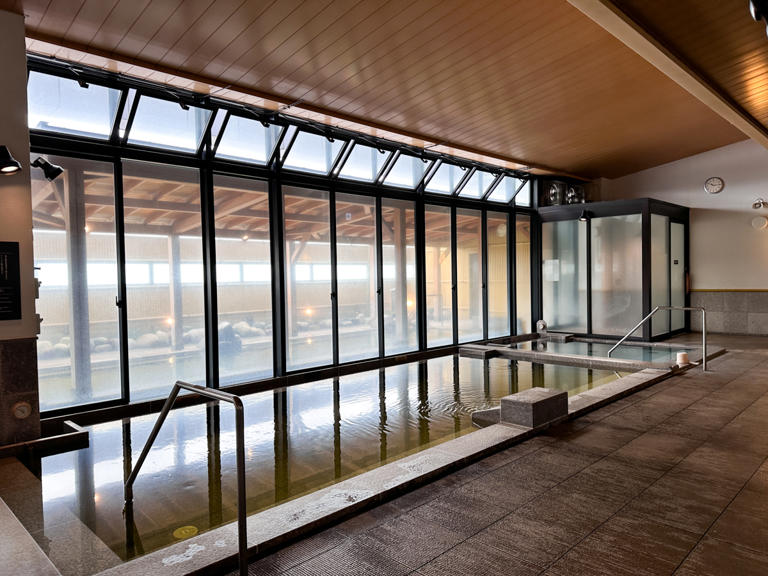
- Account Details
- Newsletters
- Group Subscription
Japan foreign tourists top 3m in March, fueling record spending boom
Travelers looking to capitalize on weak yen push up hotel and service prices
TOKYO -- The number of monthly visitors to Japan exceeded 3 million for the first time in March, while tourism spending broke a quarterly record as the weak yen drove spending on services and experiences, government data shows.
But while the rebound is bringing the government's goal of 15 trillion yen ($97 billion) in annual tourism spending by 2030 within reach, it is also driving up prices and creating problems for local residents in especially popular areas.
Japan's Hakuba resort tries to avoid skiing into Niseko's rut
Japan's expo 2025: osaka triumph or billion-dollar folly, japan hotel rates spike 25% as weak yen draws foreign tourists, japan's bullet train network just became bigger with new stops, japan to trim red tape for tourism off the beaten path, bento food tourism lures visitors to japan, japan's ryokan inns get a makeover by younger owners, latest on travel & leisure, japan-south korea travelers help incheon air traffic hit pre-covid levels, visitors to asean hit 100m in 2023, 70% of pre-covid level, jal launches boeing 'cockpit' hotel room to tap your inner pilot, sponsored content, about sponsored content this content was commissioned by nikkei's global business bureau..
Nikkei Asian Review, now known as Nikkei Asia, will be the voice of the Asian Century.
Celebrate our next chapter Free access for everyone - Sep. 30
A Gen Xer who got $250,000 in student loans forgiven said he can now finally start saving for retirement — and consider his dream of studying in India
- Joel Lambdin, 49, received $250,000 in student-loan forgiveness in January.
- It's a result of the Education Department's one-time account adjustments.
- Lambdin said the relief would allow him to save for retirement and consider long-term dreams.

Joel Lambdin finished graduate school in 1998 — but as a professional musician, he was hardly making enough money to pay off his student loans and other bills.
So Lambdin, now 49, said his only option to make ends meet was to put his student loans in forbearance — in which he was not making payments but interest was still accumulating .
"It was just so that I could subsist, so that I could survive," Lambdin told Business Insider. "With the hope that at some point, I would be making enough money that I would be able to take them out of forbearance and start paying them down."
But he grew to realize that the only way he could make a significant dent in his student loans was by switching careers. He didn't want to do that because he loved working in music, so he decided to keep his larger student loan in forbearance and begin paying off his smaller loan with a lower monthly payment.
He continued making those payments until the pandemic pause on student-loan payments , at which point he and his wife started making a plan of action to tackle the larger debt once the pause ended. That led them to discover the Education Department's initiative allowing some borrowers a one-time account adjustment . It lets the department evaluate borrowers' accounts and update payment progress toward forgiveness on income-driven repayment plans and Public Service Loan Forgiveness, including any payments made during a forbearance period.
That account adjustment led to a letter Lambdin received on January 31, reviewed by BI, from his student-loan servicer Aidvantage. It said: "Congratulations! The Biden-Harris Administration has forgiven your federal student loan(s) listed below with Aidvantage in full."
For Lambdin, that letter meant his $249,255 outstanding student-loan balance was effectively wiped out.
"It had started to feel like my fate was being decided for me by the cold hand of finance," Lambdin said, "and that was a weight that I didn't realize was there until it wasn't there."
He added: "The feeling was much more like putting down a backpack that was really full of books that you got used to. And then you put it down, and you're like, 'Oh, man, that feels so much better.' It's more like that, rather than sort of a jump-for-joy kind of situation."
While Lambdin is still working to determine what exactly the relief will mean for him and his wife, he said, discussing retirement is "a much more present conversation now" because contributing to savings is viable after the relief. He can also begin to look into buying a home.
Related stories
The Education Department continues to cancel student debt through its one-time account adjustments, a process it plans to complete this summer. Most recently, the department wiped out $7.4 billion in student debt for 277,000 borrowers , some of whom benefited from the adjustments.
Beyond financial goals, Lambdin said the relief was also allowing him the freedom to pursue some of his long-term dreams, including taking a sabbatical to study with his meditation teacher in India.
"It's something that I wouldn't have been able to even consider doing if we had to pay off student loans, but without them, it's something that I can really seriously consider doing," he said. "And so those are the kinds of things that I think get really lost in the monetary side of the conversation about debt relief."
'I've been really lucky'
While Lambdin said he felt as though he earned the relief given his decades of payments, he recognized that it's not that easy for many other borrowers.
For example, as BI has previously reported , some borrowers who might qualify for relief through different repayment programs may not have gotten it yet because of paperwork backlogs and administrative errors. On top of that, funding for federal student-loan servicers is strained — meaning many borrowers face hourslong hold times and cannot get clear answers from customer service regarding their payment progress.
"There are some real horror stories out there, and I've been really lucky in that I haven't experienced the kinds of shenanigans that other people have experienced," Lambdin said. "So I actually feel very lucky that things have transpired the way they have."
Some of those horror stories include inaccurate payment projections and delayed billing statements . When it comes to student-loan forgiveness, some borrowers told BI that their servicer made a mistake with the forgiveness , reinstating their payments months later.
The Education Department has said it's aware of the challenges borrowers face and has established an accountability framework to punish servicers when they fail to fulfill their contractual obligations.
The department is also in the process of crafting its new plan for student-loan forgiveness — it recently released the draft text of the rules , which included relief for borrowers with unpaid interest and those who have been in repayment for at least 20 years.
As for Lambdin, he's still figuring out how to approach life without student debt hanging over his head. But now he can consider various options, and he can thank the loan forgiveness for that freedom.
"There's a certain amount of waiting for the other shoe to drop because it's not that I don't trust that it's happening but just that the debt has been with me for so long, and then it's not there," Lambdin said. "And it's something that I think really takes some getting used to."
Watch: Biden announces who can have $10,000 erased in student loans
- Main content
- Subscribe Digital Print

- LDP funds scandal
- Latest News
- Deep Dive Podcast
Today's print edition
Home Delivery
- Crime & Legal
- Science & Health
- More sports
- CLIMATE CHANGE
- SUSTAINABILITY
- EARTH SCIENCE
- Food & Drink
- Style & Design
- TV & Streaming
- Entertainment news
Japan Airlines CEO describes weak yen as a ‘big problem’
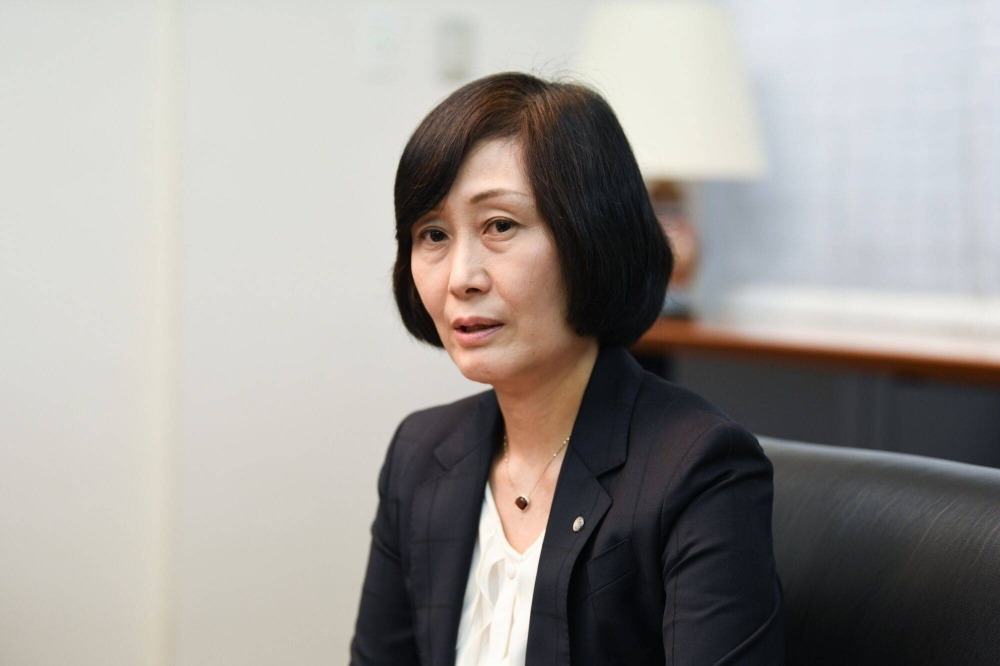
Japan’s weak currency is a "big problem,” Japan Airlines CEO Mitsuko Tottori has said in a group interview, adding that a stronger rate than the current level of around ¥155 to the dollar would be better.
Tottori, a former flight attendant, became Japan Airlines’ first female president on April 1. The carrier announced last month an order to buy 42 new Boeing and Airbus SE jets in a multibillion dollar order to expand its international network. The Japanese currency, which is trading at 34-year-low, is also hurting outbound travel, Tottori said.
Although Airbus made up the larger share of the recent aircraft order, Japan Airlines won’t rely only on the European planemaker to build its fleet, Tottori said.
Japan Airlines will seek to ensure that its Boeing orders are delivered on time; the U.S. manufacturer has come under increasing scrutiny from lawmakers and regulators following a near-catastrophic blowout of a fuselage panel on a 737 Max 9 during flight in early January.
"We still have reliable relations with Boeing and believe the company will be able to overcome the ongoing troubles,” Tottori said. "We have no intention to lean toward Airbus and will make choices that suit our business plans.”
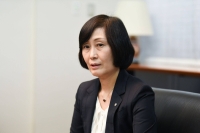
In a time of both misinformation and too much information, quality journalism is more crucial than ever. By subscribing, you can help us get the story right.
Japan issues strongest warning yet on readiness to intervene in currency market
- Medium Text

- Japan voiced concern over weak yen boost to import costs
- Analysts say markets on heightened alert on intervention risk
- Suzuki says won't rule out options to address excessive FX moves
- BOJ's Ueda says will hike rates if trend inflation accelerates
BOJ MEETING IN FOCUS
Sign up here.
Reporting by Leika Kihara, Makiko Yamazaki and Satoshi Sugiyama; Editing by Christian Schmollinger and Shri Navaratnam
Our Standards: The Thomson Reuters Trust Principles. New Tab , opens new tab

Markets Chevron
Stocks hit by tech slump; yen flails at intervention zone.
Asian stocks fell on Thursday as disappointing earnings forecasts from Facebook parent Meta Platforms hammered tech shares, while the yen's slump past 155 per dollar for the first time since 1990 raised the spectre of intervention from Tokyo.

- Business Today
- India Today
- India Today Gaming
- Cosmopolitan
- Harper's Bazaar
- Brides Today
- Aajtak Campus

- Magazine Cover Story Editor's Note Deep Dive Interview The Buzz
- BT TV Market Today Easynomics Drive Today BT Explainer
- Market Today Trending Stocks Indices Stocks List Stocks News Share Market News IPO Corner
- Tech Today Unbox Today Authen Tech Tech Deck Tech Shorts
- Money Today Tax Investment Insurance Tools & Calculator
- Mutual Funds
- Industry Banking IT Auto Energy Commodities Pharma Real Estate Telecom
- Visual Stories

INDICES ANALYSIS
Mutual funds.
- Cover Story
- Editor's Note
- Market Today
- Drive Today
- BT Explainer
- Trending Stocks
- Stocks List
- Stocks News
- Share Market News
- Unbox Today
- Authen Tech
- Tech Shorts
- Tools & Calculator
- Commodities
- Real Estate
- Election with BT
- Economic Indicators
- BT-TR GCC Listing
Travel to multiple destinations on a single ticket: Air India and Japan's All Nippon Airways sign codeshare agreement
Commencing on May 23, the codeshare agreement will allow passengers of both airlines to seamlessly navigate their travel itineraries by combining flights between the two countries under a single ticket.
- Updated Apr 23, 2024, 3:38 PM IST

- Advertise with us
- Privacy Policy
- Terms and Conditions
- Press Releases
Copyright©2024 Living Media India Limited. For reprint rights: Syndications Today

Add Business Today to Home Screen

IMAGES
VIDEO
COMMENTS
4 Easy Side Trips for Japan Business Travelers. 4.1 From Tokyo. 4.2 From Osaka. 4.3 From Nagoya. 4.4 From Hiroshima. 4.5 From Fukuoka. 4.6 From Sapporo. 5 Business Hotels in Japan. 6 Other FAQ About Japan Business Travel.
Japan's travel infrastructure is on a par with that of the United States. A wide range of business travel and tourist services are available. For additional information on traveling to Japan, contact the Japan National Tourist Organization (JNTO) in New York at tel: (212) 757-5640; fax: (212) 307-6754, or visit JNTO's website .
If you need after-hours assistance in an emergency, please call 03-3224-5000 and ask to speak with the Embassy's duty officer. Emergency Contact Information for U.S. citizens. Emergency Preparedness for U.S. citizens in Japan. Sources of Help, including counseling services. Medical Assistance in Japan.
Japan will reopen for business travelers with up-to-date visas. Travelers entering Japan will be subject to entrance testing measures and quarantine requirements. Overview. Beginning March 1, 2022, the government of Japan announced that business travelers would be permitted to enter the country so long as they meet specific entrance requirements.
Japan: Reopening for Business Travelers. This article was published on 28 Feb. 2022 and updated on 7 March 2022 to reflect new information. 7 March 2022 Update: The government of Japan updated its requirements for approved COVID-19 tests to enter the country. The government will only allow travelers to enter the country if they have received a ...
Japan is becoming a more sought after location for new businesses (foreign and domestic). It is a destination for business travelers as well as to create partnerships among established companies, and forge relationships with companies in Japan's bustling startup scene. Japan as a whole, and the companies that populate the country, though, have a very specific way of handling social ...
Call us in Washington, D.C. at 1-888-407-4747 (toll-free in the United States and Canada) or 1-202-501-4444 (from all other countries) from 8:00 a.m. to 8:00 p.m., Eastern Standard Time, Monday through Friday (except U.S. federal holidays). See the State Department's travel website for the Worldwide Caution and Travel Advisories.
For business travelers visiting multiple sites across Japan, be sure to order a Japan Rail (JR) Pass online to save money on your trips outside of Tokyo. For around US$260 (prices can change, though), the pass will give you unlimited access to all JR trains in Japan, including the Shinkansen (bullet trains) and Narita Express, for seven days.
(A stay of up to 90 days for tourism, business, visiting friends or relatives, etc. that does not include remunerative activities) Click on the nationality of the visa applicant traveling to Japan. Countries or Regions that require a visa to enter Japan. Procedures chart for short-term stay (tourism, business, visiting relatives, etc)
The Japan Business Travel Guide provides business travellers with an array of business related resources and useful tools designed to assist them on their trips. The guide contains visa information, facts on Japan, business customs, useful tips and other resources. An understanding of other cultures, languages, customs and etiquette can be of ...
As we discussed in a blog post on business travel essentials in Japan, the Japanese are serious when it comes to meishi koukan, or the tradition of exchanging business cards. It's rare for a business transaction between strangers to begin without this practice as it's the formal beginning of a business relationship.
You are from a country that is subject to Japan Visa requirements. You are traveling to Japan for business-related purposes, such as attend a meeting or a conference, for business talks or negotiations, etc. If you are from one of the countries below, you do not need a Japan Business Visa for short-term purposes (up to 90 days): Andorra.
All you need to know about entering, leaving and staying in Japan. Any foreign visitor entering Japan must have a valid passport for the duration of their stay, and all visitors must comply with the conditions of their visas. See below for information about the current visa requirements for Japan. Visa Information. If you have any further ...
The best times to visit Japan are spring (March to May) and fall (September to November). Visiting during these time windows helps you avoid Japan's cold winters and hot, humid summers. Rainfall is also low during these months, so there's less chance of weather events disrupting your travel plans. As an added bonus, if you visit in spring ...
The basics. It's official: Japan will reopen to tourism on October 11. Ad Feedback. Prime Minister Fumio Kishida announced the news in September at a press conference. "We will lift the ...
On average, business class fares cost $3,368 for a return trip to Japan, while the cheapest price found on KAYAK in the last 2 weeks was $1,058. What is the best airline for business class flights to Japan? The highest-rated airline by KAYAK users offering business class flights to Japan is ANA, with an overall rating of 8.4. See more FAQs.
To give you an idea of how much a bit of research can save you: When I travelled to Japan I purchased a Yamaguchi wide area pass for 13,500 yen. This covered my travel from Hiroshima to Kyoto.From Kyoto I then took a night bus to Tokyo for 6,500 yen. At 20,000 yen this was much cheaper than a 1-week JR pass.
5. Learn how to use a bidet toilet. Called "washlets," Japan's high-tech, electronic bidet toilets will wash and dry your delicate parts with the touch of a button. (Don't worry about any language barrier; the pictograms on the buttons are easy to understand). Other toilet customs in Japan might throw you for a loop.
Japan is a cash society and not every restaurant, bus, or subway station will take credit card. One of our most essential Japan travel tips is to always have Japanese Yen on you when you are out and about. Some places where a credit card is typically accepted are convenience stores like 7-11, Lawsons, and Family Mart.
Visa requirements. If you have a 'British citizen' passport, you can travel to Japan for tourism or business for up to 90 days. You will get a visa in your passport on arrival, and you do not ...
Before you travel to Japan, make sure you have the following essential documents with you: A valid passport with at least six months of validity remaining. Your visa, if required. A copy of your travel itinerary and accommodation details. Proof of sufficient funds to cover your stay in Japan.
Completing the scene are the serene reflecting pool and traditional Japanese gardens that contain lush foliage, manicured trees, and scenic walking paths. 1 Kinkakuji-cho, Kita-ku, Kyoto-shi, Kyoto, +81 075-461-0013, shokoku-ji.jp. Open daily 9am-5pm. Admission is 500 JPY. Admire Ryoan-ji Temple.
Waterproof Shoes & Jacket: It can rain at anytime in Japan, so we highly recommend bringing shoes that can get wet as well as a breathable rain jacket. Travel Adapter: Japan uses the US plug, but ...
report flag outlined. Answer: If you were to rearrange the words in this sentence so that they made sense, it would read, "How often do you travel to Japan?" Explanation: The word " often " functions as an adverb in the sentence that has been formed, and its meaning refers to the frequency with which the action is carried out. The action that ...
SATSUKI KANEKO, Nikkei staff writer April 18, 2024 01:54 JST. TOKYO -- The number of monthly visitors to Japan exceeded 3 million for the first time in March, while tourism spending broke a ...
A Gen Xer who got $250,000 in student loans forgiven said he can now finally start saving for retirement — and consider his dream of studying in India. Ayelet Sheffey. Apr 21, 2024, 3:18 AM PDT ...
1X. Japan's weak currency is a "big problem," Japan Airlines CEO Mitsuko Tottori has said in a group interview, adding that a stronger rate than the current level of around ¥155 to the dollar ...
The United States, Japan and South Korea agreed to "consult closely" on foreign exchange markets in their first trilateral finance dialogue last week, acknowledging concerns from Tokyo and Seoul ...
In a strategic move to enhance connectivity between India and Japan, Air India, the Tata Group-owned domestic carrier, has signed a codeshare agreement with All Nippon Airways (ANA), the largest ...